I know it’s not cool to actually use your knives these days. Most of mine sit on my desk or in my drawer, only used a half dozen times while I was testing them and then delegated to the decoration section of my workspace until I need them as a point of comparison. I do have a small collection of durable budget knives that I use for EDC regularly, though.
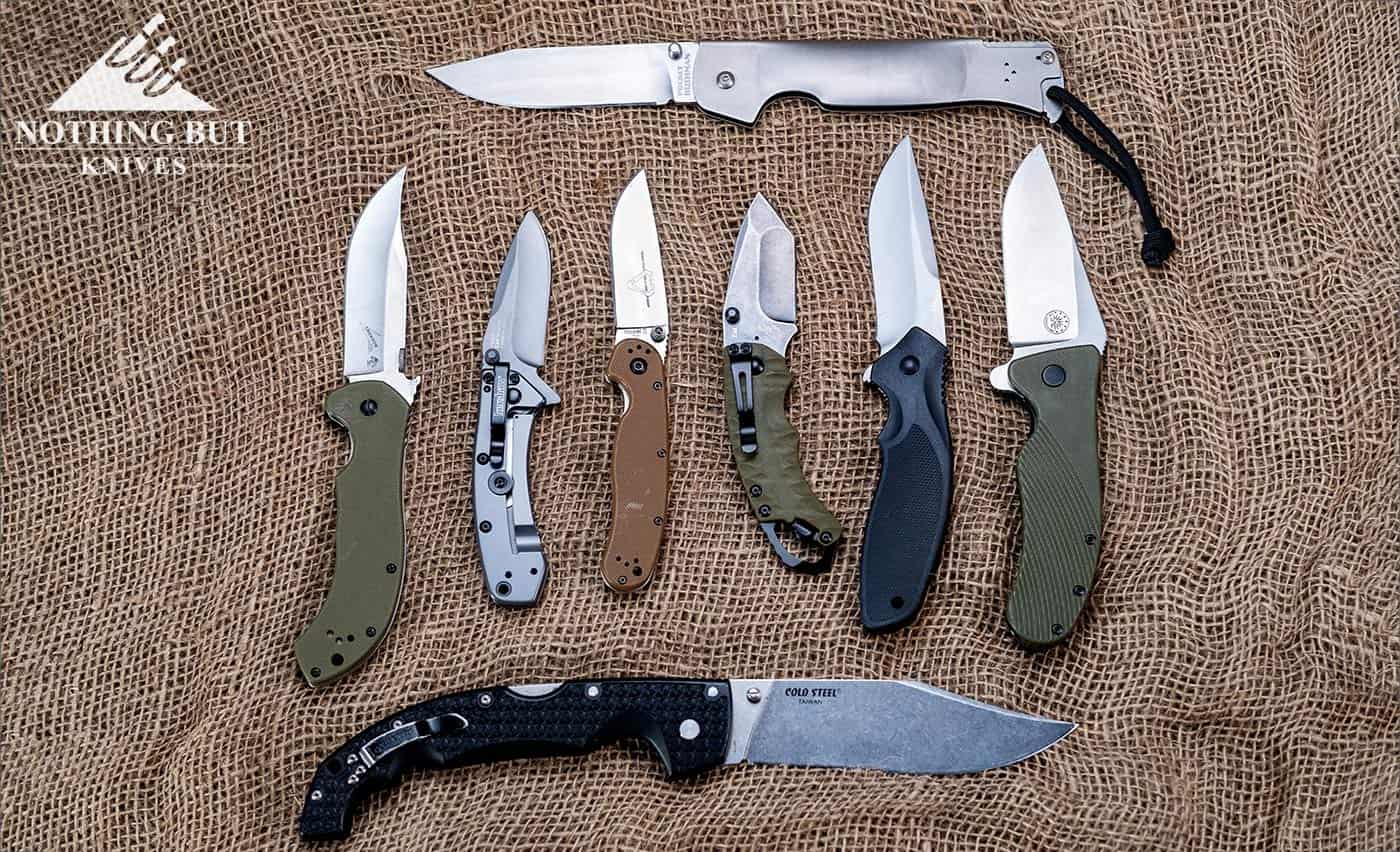
Everyone Needs at least One Good Beater Folding Knife For EDC. We Found A Few That Are Tough and Affordable.
And not just use, I beat them to death. They get run through the dirt, pried between an old rusty screw fused to a washer, stabbed into mud while I’m trying to wrangle a torn up irrigation pipe, or thrown against a tree either because I’m trying to startle the big damn spider sitting in a branch, or because I’ve just fallen out of the tree and it just feels appropriate in the moment.
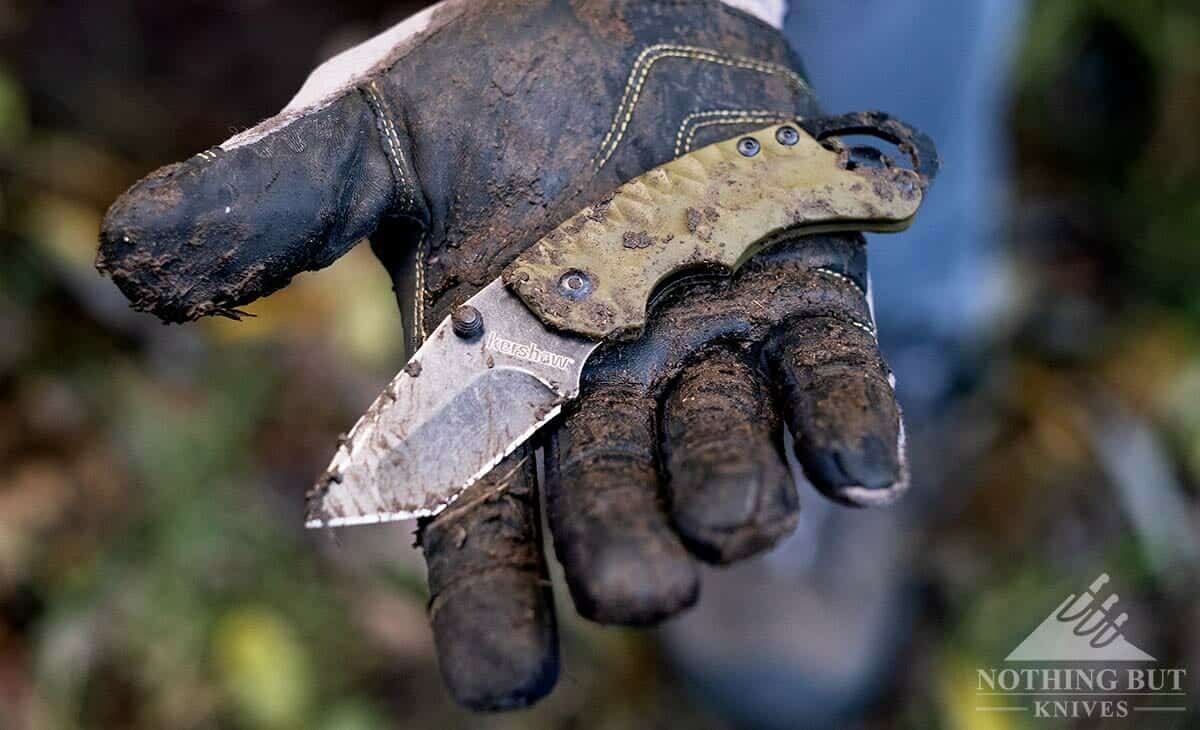
The point is, some knives are made to be used and abused, and it seems like that necessary aspect of knives doesn’t really get highlighted that often. So here are some of the best knives I’ve found for hard use. Either I or my brother have personally used every knife listed in this article. There are also many hard use type knives we tested that we didn’t add to this article, because we didn’t feel they offered a great value for the price.
Here Are Our Top Picks For Hard Use Knives Under $100
Under 50 Dollars
First the cheaper knives. I prefer this price range for absolute beater knives that I am likely to break or lose. This list started out with smaller blades around the 3-inch mark because I am a tiny man who leans toward tiny knives. But then we got some input from normal sized people and tested out things like the Cold Steel Voyager, so now this features a broad range of sizes going beyond ten inches.
Cold Steel Finn Wolf
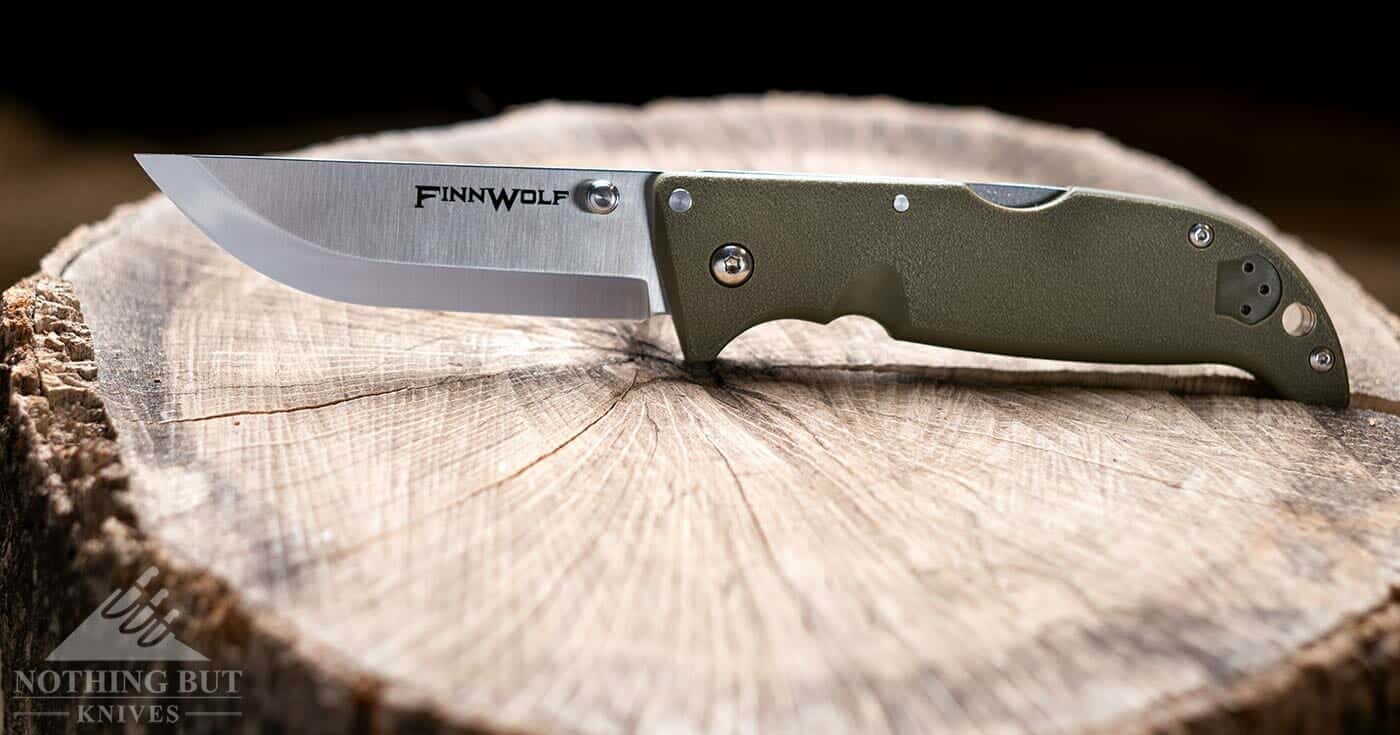
| Overall Length: | 8.25″ |
| Blade Length: | 3.5″ |
| Steel: | AUS-8A |
| Blade Style: | Standard |
| Handle Length: | 4.75″ |
| Handle Material: | Griv-Ex |
| Lock Mechanism: | Lockback |
| Open System: | Thumbstud |
| Grind: | Scandi |
| Carry System: | Tip-up clip |
This is an Andrew Demko design. For anyone who’s a fan of Cold Steel that’s probably enough information. For the rest, Demko is the mind behind the Cold Steel Bushman, the Spartan, the Espada, the AD-15 and a dozen or so other designs that constitute some of Cold Steel’s most efficiently tough knives on offer these days.
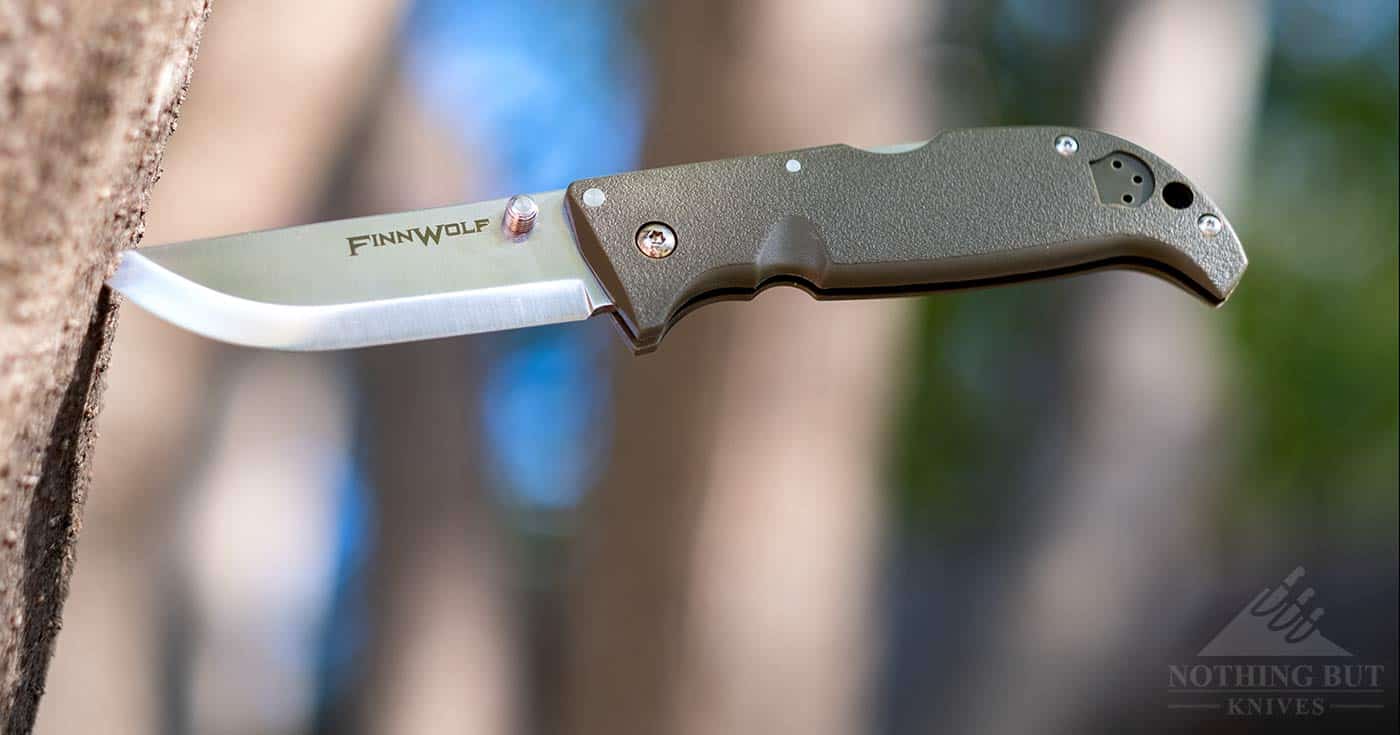
The Finn Wolf has a thick 3 mm slab of Aus-8A steel with a scandi grind, which basically means the edge will roll before it chips, and it’s great at a lot of bushcraft tasks. It almost feels like a folding Morakniv knife to me. If the handle felt a little more like rubber, that’s basically what it would be.
In fact, that’s pretty much my only complaint about the Finn Wolf: the handle scales aren’t really aggressive or grippy enough. Outside of that, the edge is fantastically sharp, and feeling that back lock clunk into place every time I open it is possibly one of the most satisfying things I’ve experienced with a knife.
Esee Zancudo
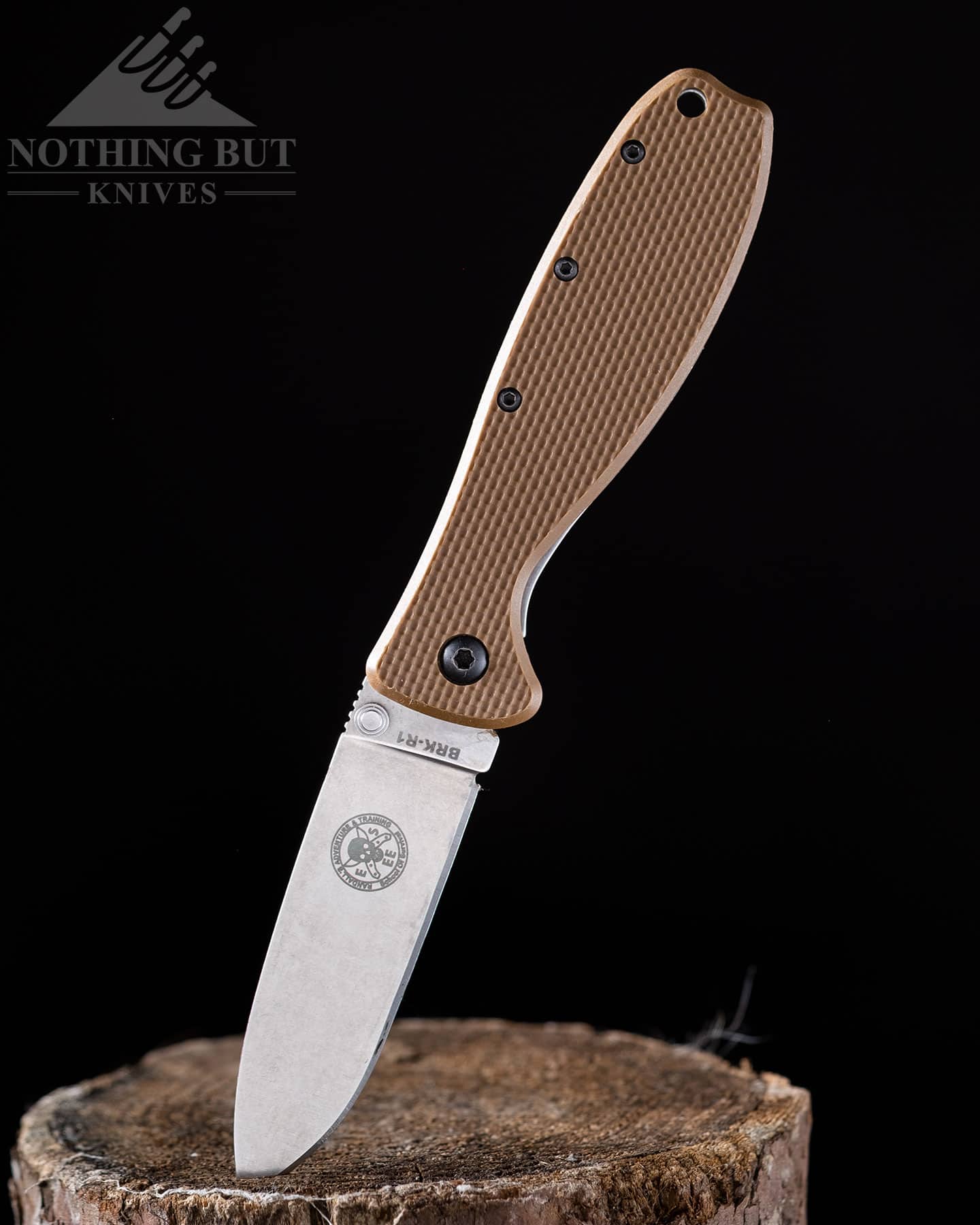
| Overall Length: | 7.0″ |
| Blade Length: | 2.9″ |
| Steel: | AUS-8 |
| Blade Style: | Drop point |
| Handle Length: | 4.0″ |
| Handle Material: | G-10 |
| Lock Mechanism: | Frame |
| Open System: | Thumb stud |
| Grind: | Flat |
| Carry System: | Reversible tip-down clip |
I’ve abused this knife more than anything I own. It’s just the right combination of cheap, tough, and easy to carry to get used in pretty much every dirty job I have to do. It’s not necessarily the best knife for any given job; it’s just one of those little tools that’s always a possible option for helping with any given job.
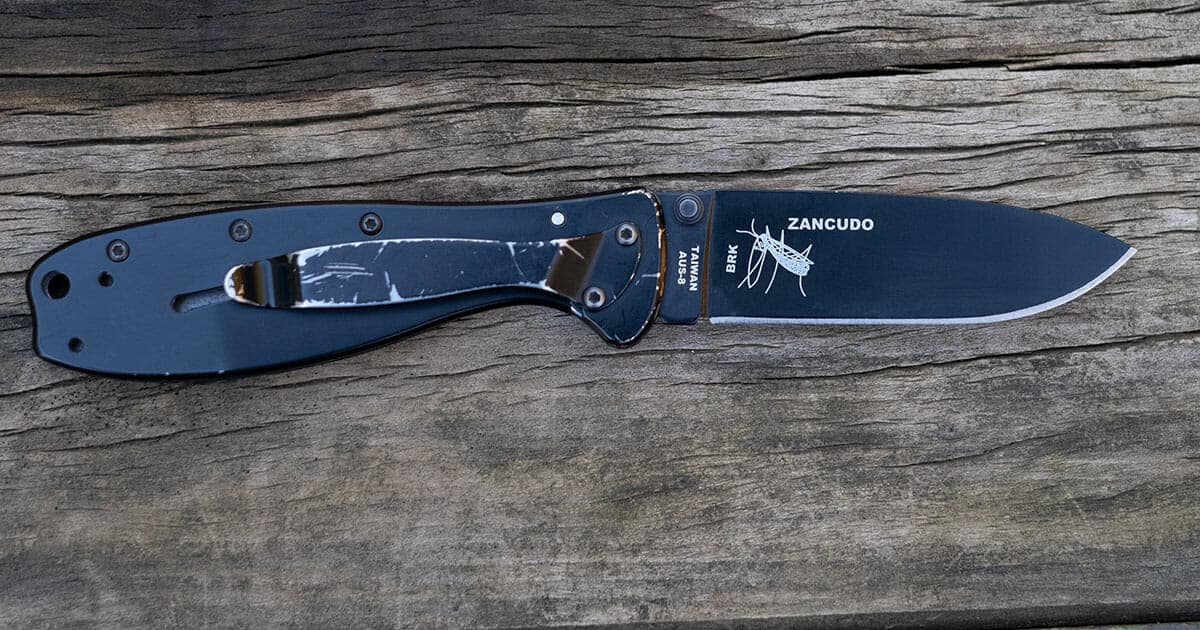
The design itself comes from the folks at Esee, but it’s actually manufactured by Blue Ridge knives, who makes most of their stuff in Taiwan. Whatever you think of overseas manufacturing, it’s a big part of why this knife is such a reasonable price, and aside from some blade drift (and let’s be honest, that’s probably at least half my fault), I haven’t had any issues with the manufacturing quality.
I personally own the Aus-8 version of this knife, but they also make a D2 steel version that is, by all reports, much better. Those reports are from people who love D2 steel anyway, and I’m someone who loves Aus-8 steel, so we’re at an impasse. I have yet to get the D2 version and do any kind of side-by-side comparison.
If that seems cool, take a look at my full review of the Zancudo here.
Ontario RAT 2
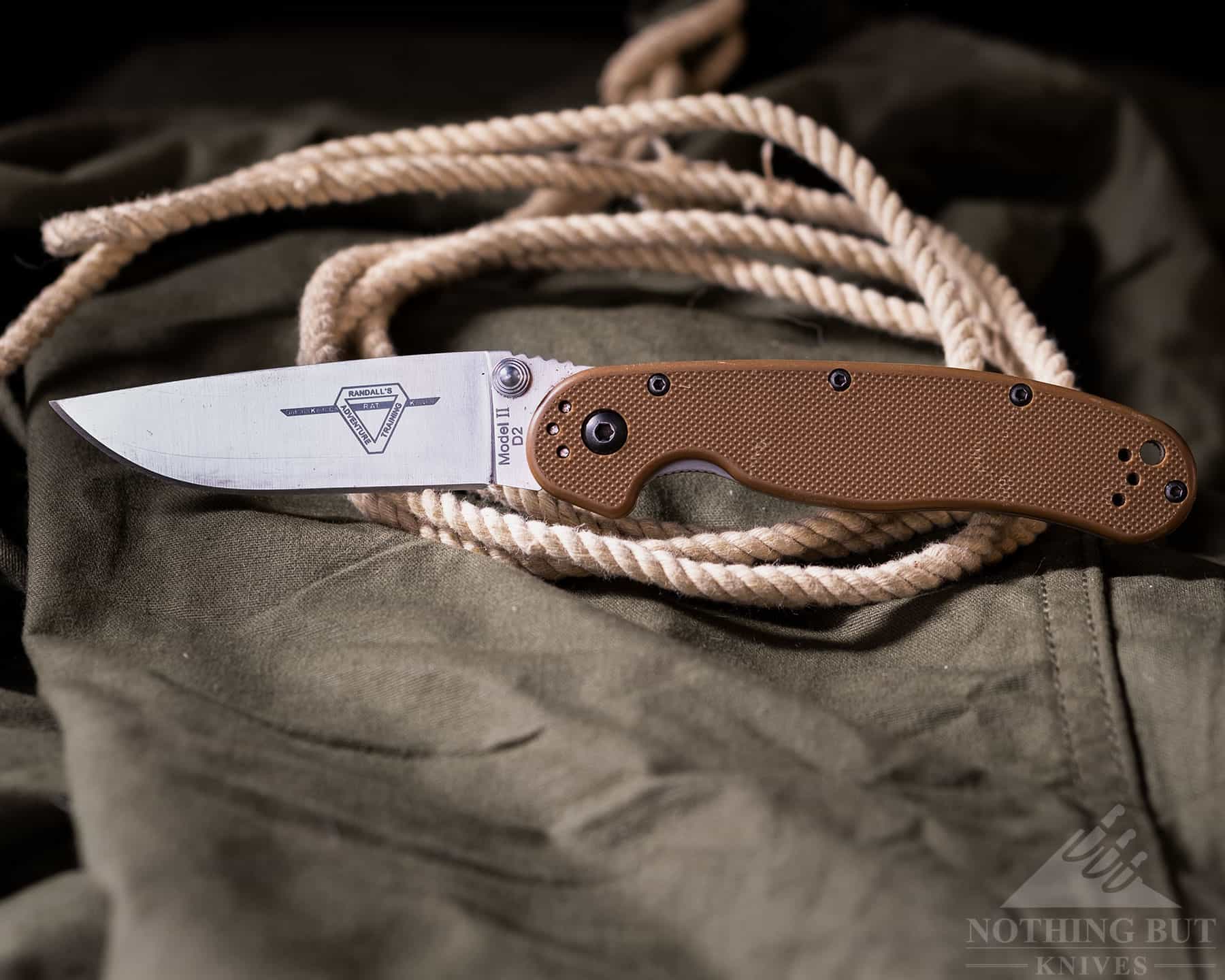
| Overall Length: | 7.0″ |
| Blade Length: | 3.0″ |
| Steel: | AUS-8 or D2 |
| Blade Style: | Drop point |
| Handle Length: | 4.1″ |
| Handle Material: | Nylon |
| Lock Mechanism: | Liner |
| Open System: | Thumb stud |
| Grind: | Flat |
| Carry System: | 4-position pocket clip |
A lot of people would argue this is the best knife on the list, and it would be hard to prove them wrong. The Rat 2 is surprisingly comfortable for its size, and the blade stock is thin enough to make it slicey while the actual blade material is generally tough enough that you aren’t risking much more than a rolled edge for most (reasonable) tasks.
It has a similar design to the Zancudo. They’re about the same size and both are available in Aus-8 stainless or D2 tool steel. but I’d be crucified by anyone who’s used a Rat if I didn’t say it’s almost certainly better than the Esee Zancudo. I’ll only say that the Zancudo is all around tougher than the Rat by virtue of the frame lock and thicker blade, but if we’re being honest, you shouldn’t be doing things with knives that require that much more toughness.
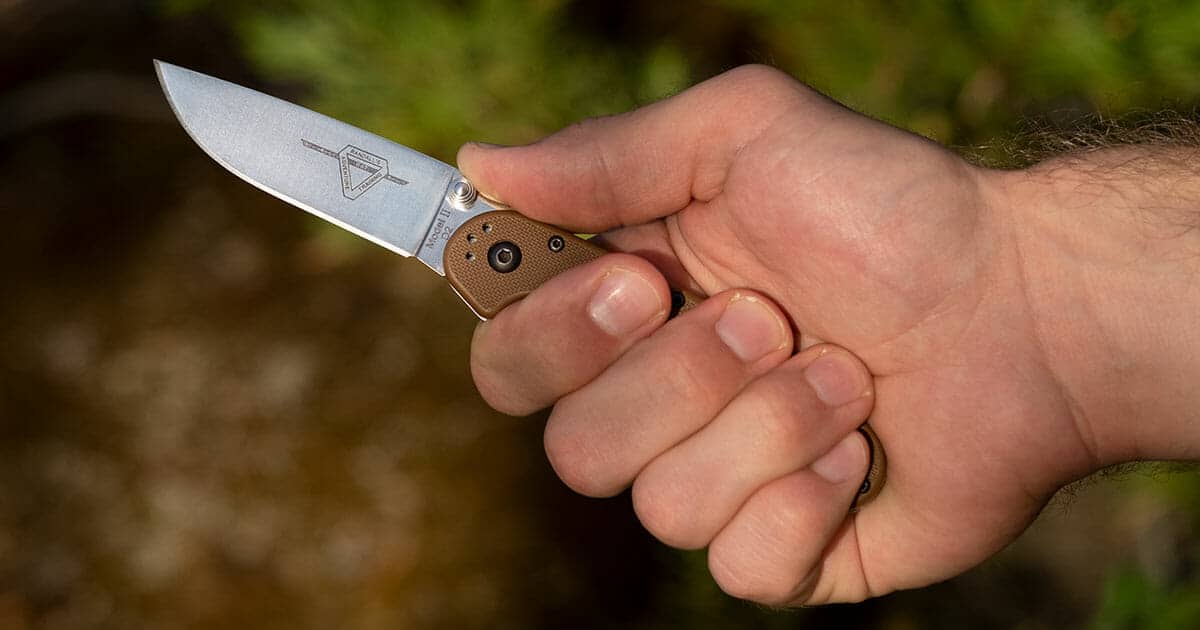
Also, if you’re not quite into the exact size of this knife, there’s also the Rat 1, which is slightly larger, and the Rat 3, which is much larger and a fixed blade.
This still splits pocket time with the Zancudo in my EDC rotation, but I have to grudgingly admit that the Rat 2 has aged a little better. I’ve absolutely hammered the action on both of them and had to do several rounds of dissembling maintenance, and each time the Rat 2’s action ends up a little cleaner. I’d still argue they’re close enough that the choice is more about personal preference than quality differences, but I’m also not sure if $20 – 30 knives are worth this much arguing.
With the closing of the sale of OKC and subsequent closing of their factory, I am not sure how much longer this knife will be available. The Esee Zancudo is the most obvious alternative to this popular folder, but the Revo Ness is another option if you like Nessmuk style blades.
Kershaw Cryo 1555Ti
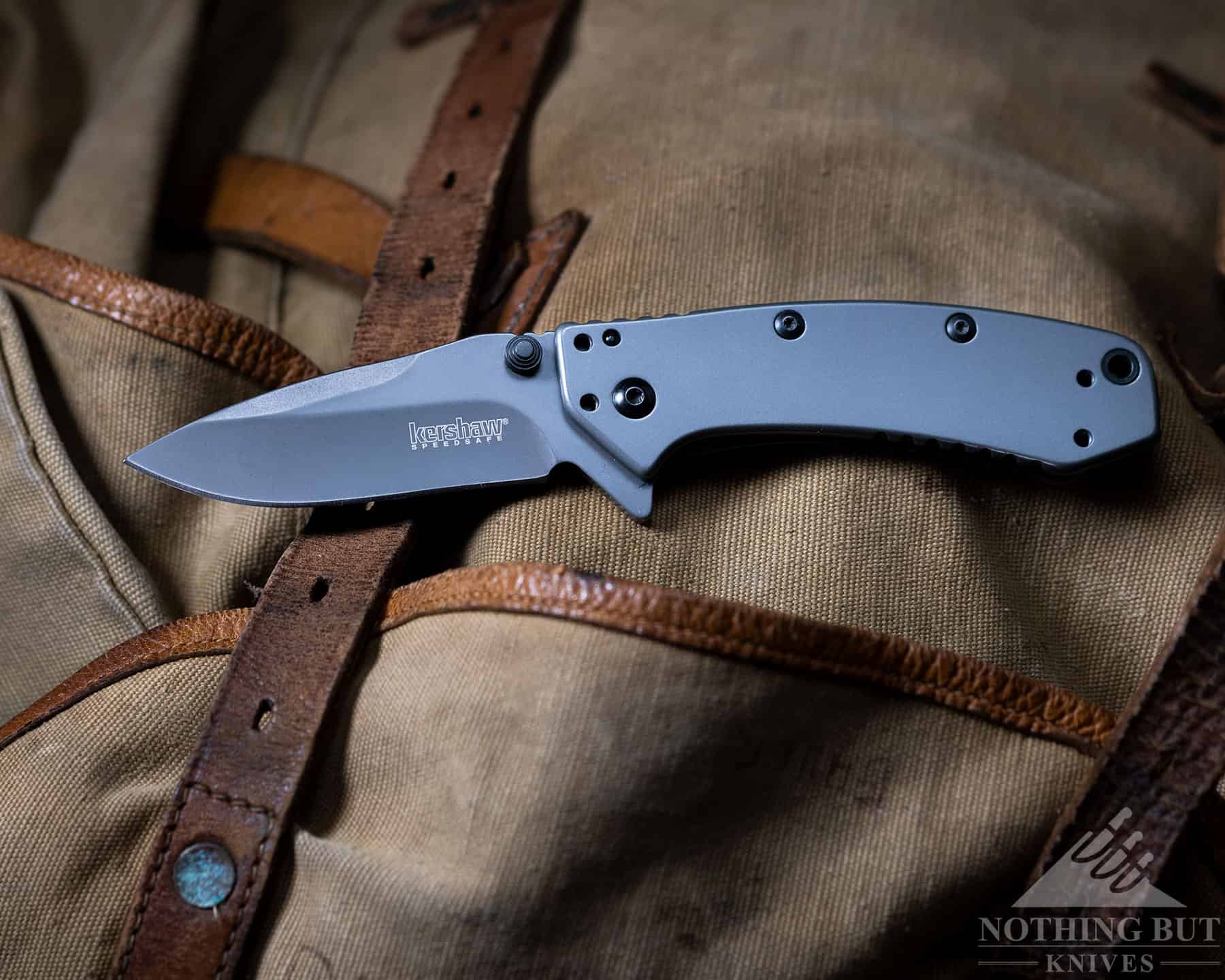
| Overall Length: | 6.5″ |
| Blade Length: | 2.75″ |
| Steel: | 8Cr13MoV |
| Blade Style: | Drop point |
| Handle Length: | 3.8″ |
| Handle Material: | Stainless steel |
| Lock Mechanism: | Frame w/ lockbar stabilizer |
| Open System: | Assisted open flipper |
| Grind: | Hollow |
| Carry System: | 4-position pocket clip |
This is a Rick Hinderer knife, and that’s usually a good indication that it’s a tough blade. It’s also the only reason I’m recommending an assisted open knife. Normally that’s a red flag for me, especially after the ambivalent experience I had with the CRKT Ignitor. I have to make an exception for Hinderer stuff, though, as I rarely pick up one of his knives without getting flush with the sudden feeling of capability.
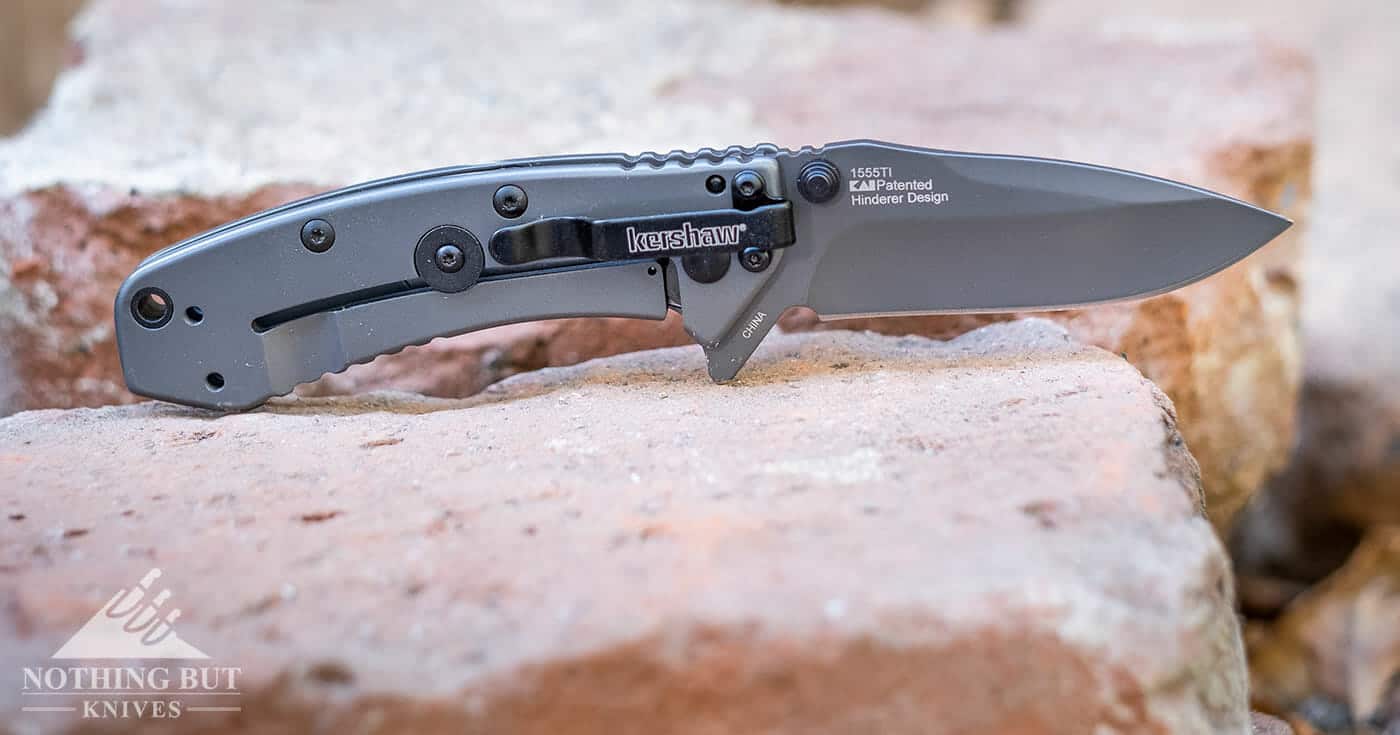
He tends to specialize in easy one-handed open, which is really nice when you’re working on something, especially since the Cryo is pretty thin. Bare-handed that’s not a problem, but if you’re wearing any kind of glove it can get tricky to get a folding knife open one-handed. This thing not only feels incredibly snappy, it feels like something you can smack around in a gloved hand.
Kershaw Shuffle 2
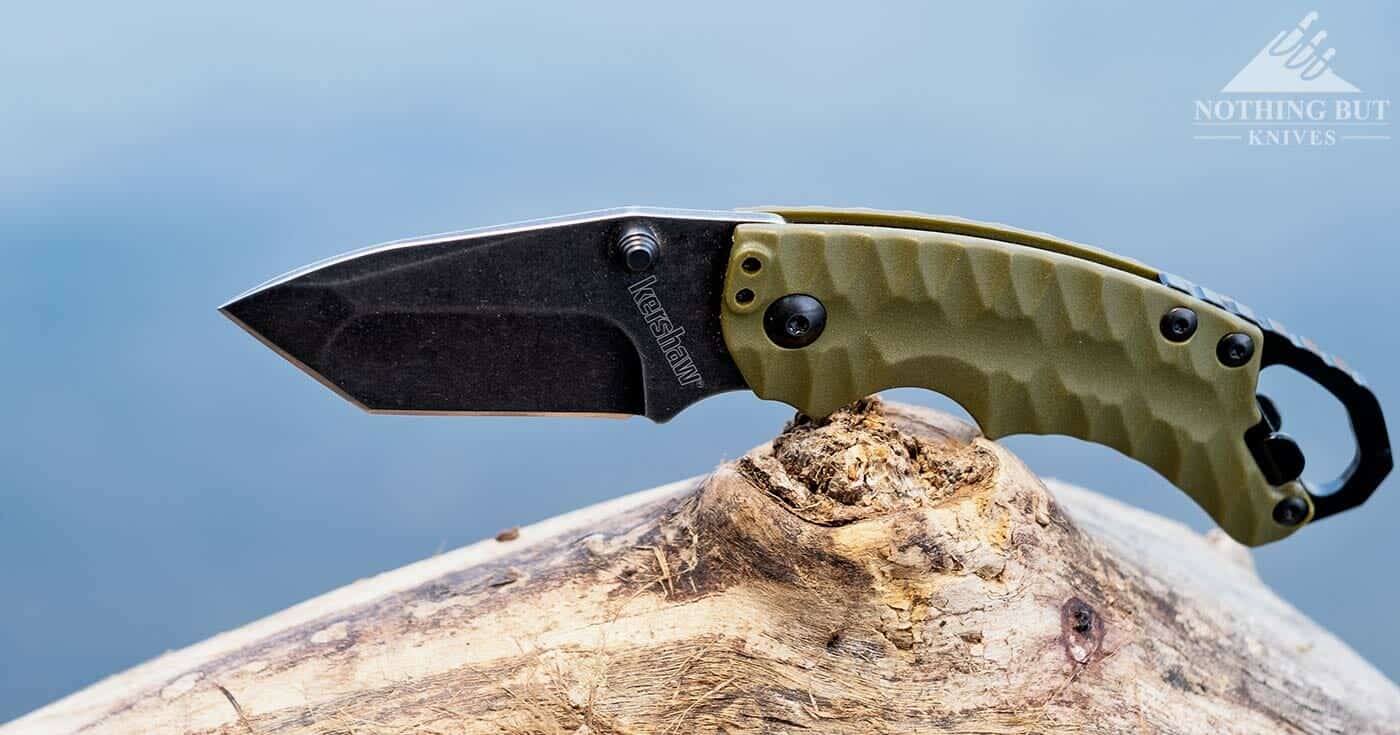
| Overall Length: | 6.25″ |
| Blade Length: | 2.2.5″ |
| Steel: | 8Cr13MoV |
| Blade Style: | Tanto |
| Handle Length: | 4.0″ |
| Handle Material: | GFN |
| Lock Mechanism: | Liner |
| Open System: | Thumb stud |
| Grind: | Hollow |
| Carry System: | Tip-down clip, left or right |
I generally use this knife for two things: breaking down boxes and opening beers. And if I’m being totally honest I mostly got it for the bottle opening function.
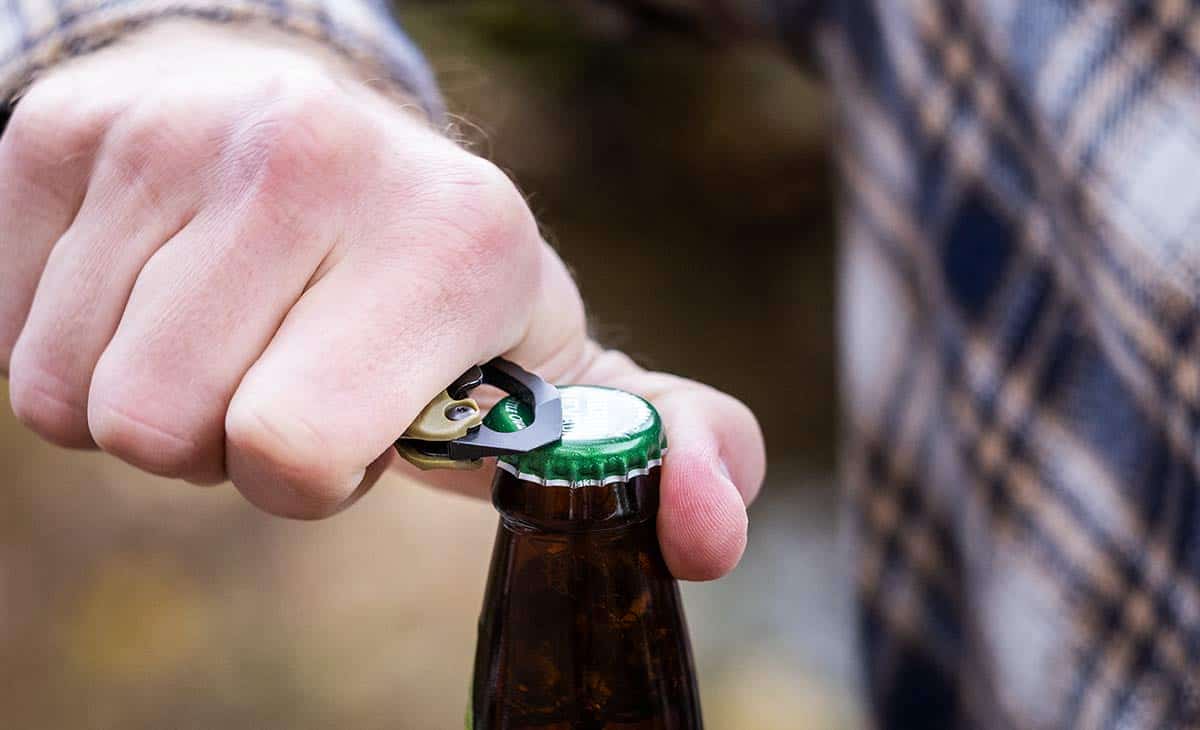
The tanto blade turns out to be a good workhorse, though. It manages to hold up under heavy pressure, and the liner lock is surprisingly sturdy for such a small knife with a GFN handle. It’s one of the few knives I don’t feel guilty prying with because the steel is soft enough to fix up later, and it’s under a price point that makes it pretty painless to replace.
It’s one of those small knives that’s probably worth having a couple of just because it’s small enough to lose, cheap enough to break, and between the bottle opener, tough blade, and the flathead lanyard hole at the bottom you can find a hundred little uses for it throughout the day.
Kershaw Emerson CQC-10K
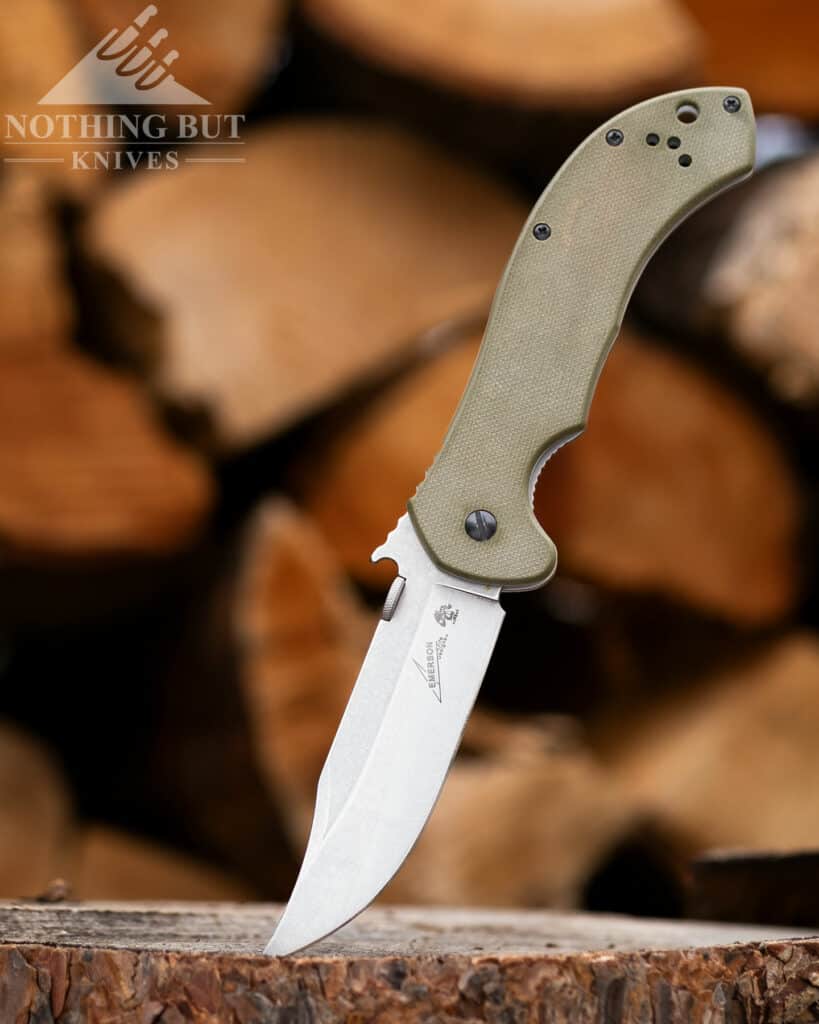
| Overall Length: | 8.5″ |
| Blade Length: | 3.5″ |
| Steel: | 8Cr14MoV |
| Blade Style: | Clip point |
| Handle Length: | 4.5″ |
| Handle Material: | G-10 |
| Lock Mechanism: | Frame |
| Open System: | Thumb disk / Emerson wave |
| Grind: | Hollow |
| Carry System: | Tip-up pocket clip |
It’s hard to beat the brutal efficiency of an Ernest Emerson designed knife. He always makes his knives easy to open, but what’s probably more useful to someone looking for some kind of beater knife is that the tips of his designs are usually pretty solid. Not because they’re stout, he just seems to have some magic understanding of geometry he brings to his designs, so most Emersons tend to have a tougher structure than other knives in the same size.
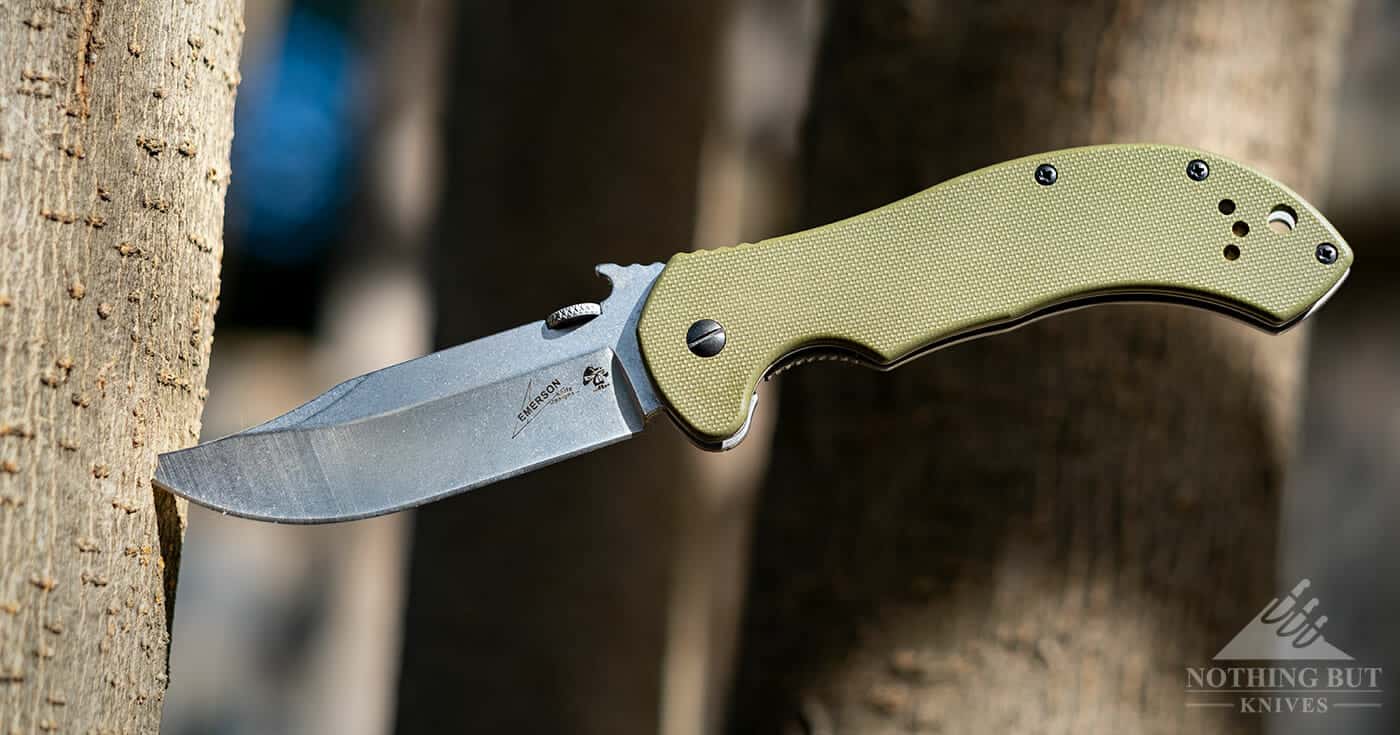
The Kershaw CQC series has a lot of knives that frankly don’t seem all that different to me aside from small variations in size and different kinds of steel. I’ve put up the stats for the CQC 10K because I usually see it running for around $40, but if you’ve handled one CQC you have a good idea of how the rest feel.
We personally have (and frequently use) an Emerson CQC, but for the life of me I can’t figure out or remember which one it is. It’s good, and hasn’t rusted or snapped yet. That’s all I care about.
Gerber Flatiron
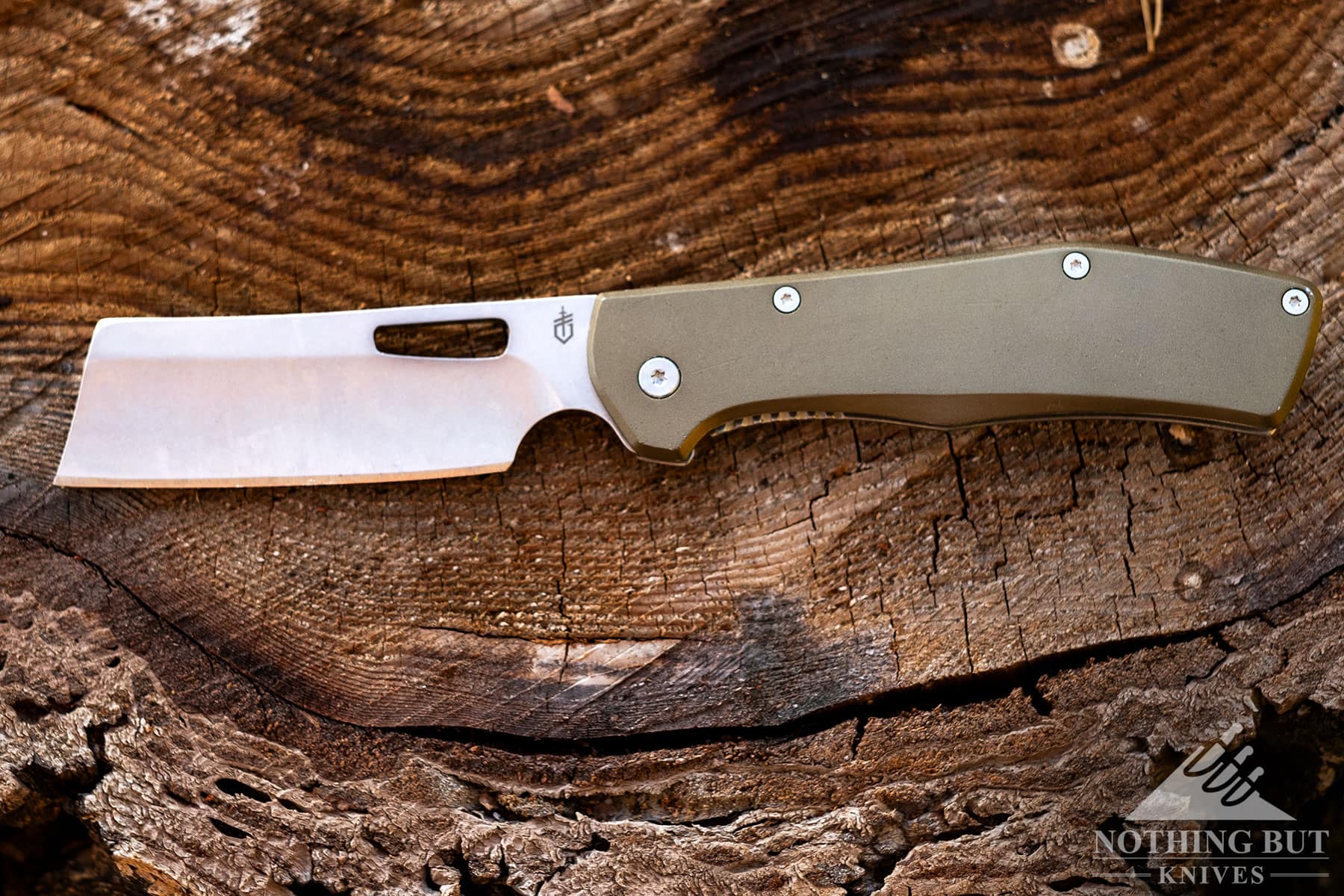
| Overall Length: | 8.5″ |
| Blade Length: | 3.6″ |
| Steel: | 7Cr17MoV |
| Blade Style: | Cleaver |
| Handle Length: | 4.875″ |
| Handle Material: | G-10 or aluminum |
| Lock Mechanism: | Frame |
| Open System: | Thumb hole |
| Grind: | Holow |
| Carry System: | Tip-up clip |
If you want a good handle for a good price, the Flatiron is one of the best ways you can go. The cleaver blade limits its usability in some ways, but it’s fantastic for detailed shaving work. It has one of the best finger choils of any folding knife I’ve handled personally so it actually feels comfortable to make a feather stick with it.
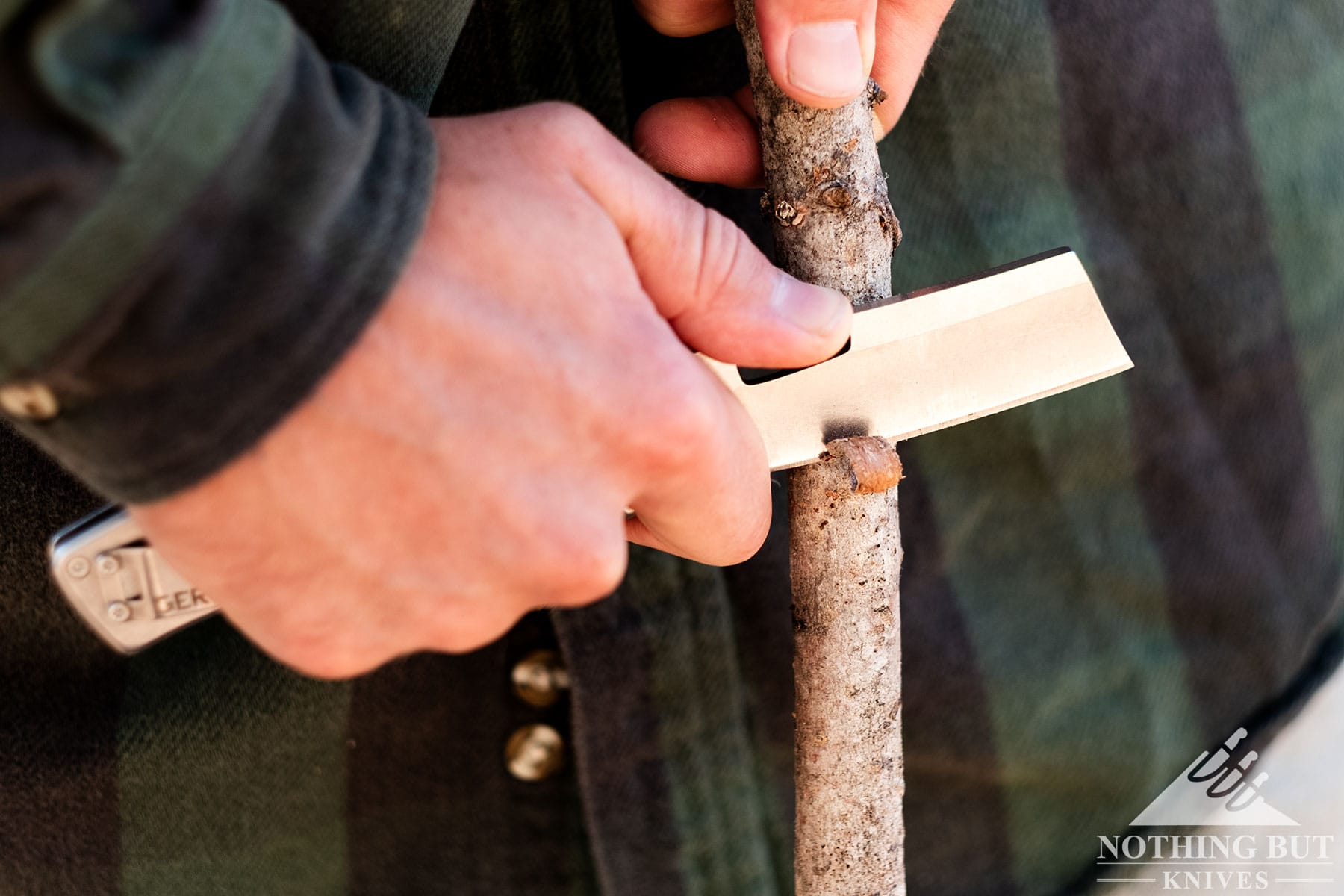
It’s actually a bit of a paradox, because the knife is clearly overbuilt for hard use, but the design of it seems geared toward finer work. I see it as something designed to shave and slice in potentially harsh environments like a construction or camp site. Either way, it has a tough frame lock and a ton of space for gloved hands to work with comfortably.
If you’d like to read a little more about check out our full review. Or someone else’s. God knows plenty of people have harmed the internet with their own opinions on the Flatiron that you don’t need my ramblings to learn something about it.
If you are looking for a hard use pocket cleaver with a stronger lock, check out the Buck HiLine. We will be adding to this article soon.
CJRB Kicker
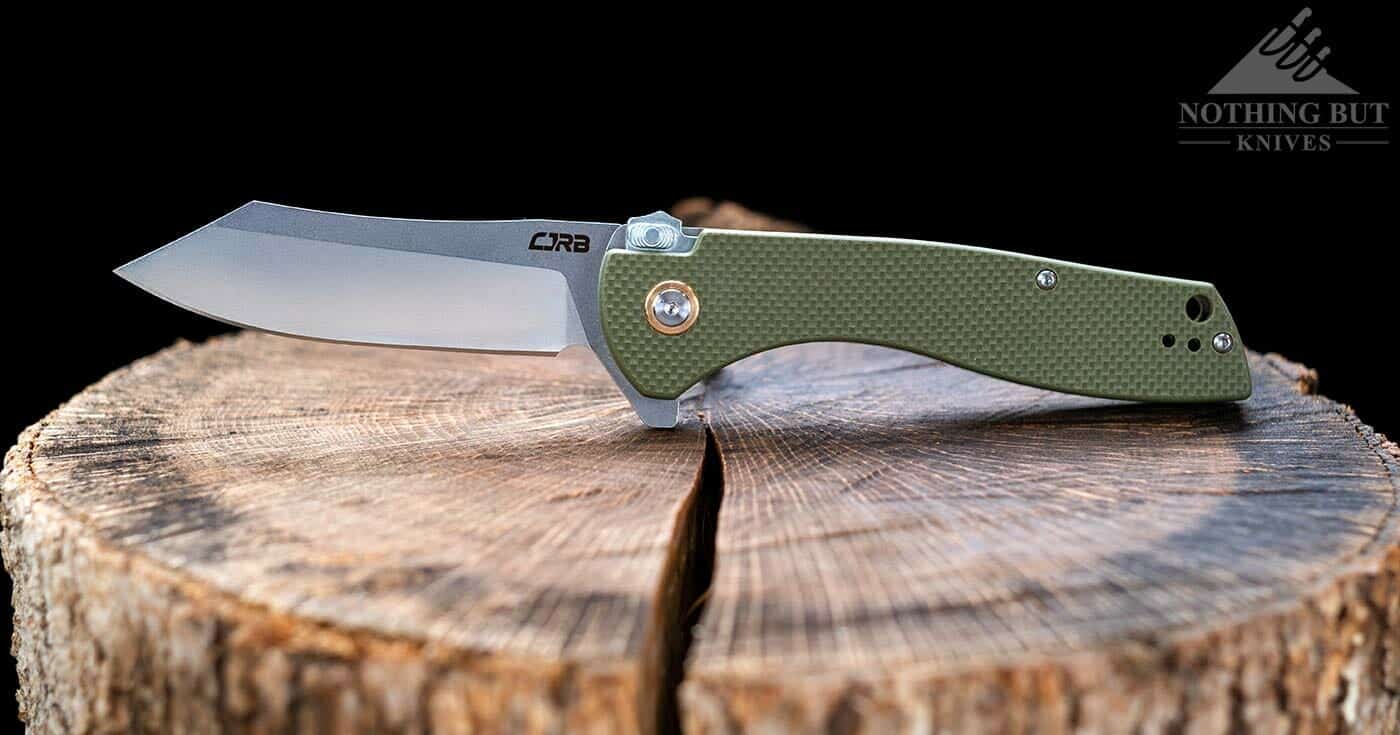
| Overall Length: | 8.25″ |
| Blade Length: | 3.5″ |
| Steel: | D2 |
| Blade Style: | Clip point |
| Handle Length: | 4.75″ |
| Handle Material: | G-10 |
| Lock Mechanism: | Recoil |
| Open System: | Flipper |
| Grind: | Flat |
| Carry System: | Tip-up clip |
The CJRB Kicker has some serious hard use specifications. It boast a D2 steel blade with a 3.3 mm thick spine, G-10 handle scales and CJRB’s recoil lock. It’s also really versatile thanks to the reversible pocket clip. That in combination with the flipper open and the recoil lock, this knife is a true ambidextrous carry.
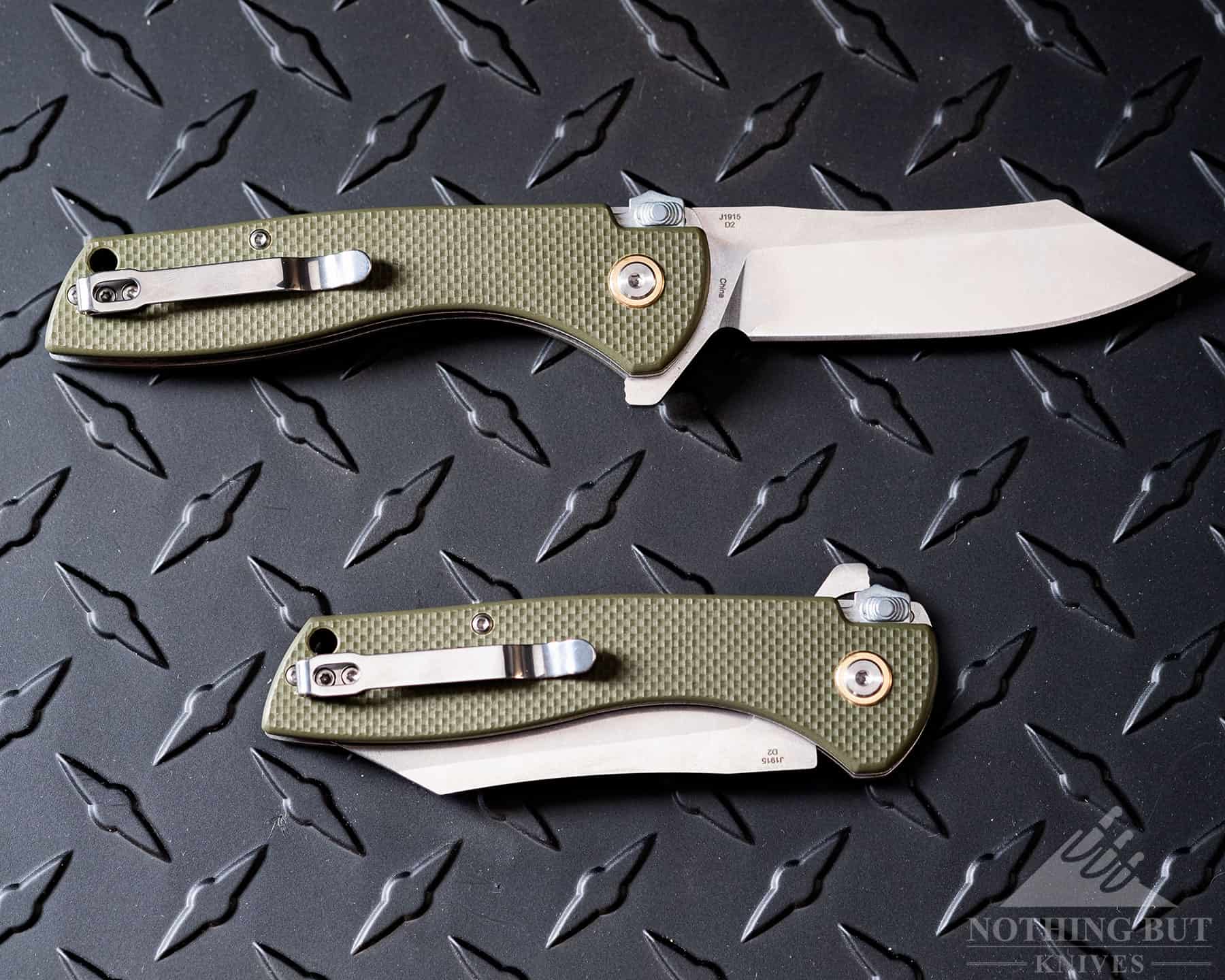
And you can call that blade shape whatever you want: wharnecliffe, or sheepsfoots, or reverse tanto, or a modified cleaver bowie. The important thing here is it’s slicey and offers a lot of cutting edge for its size, and the flat grind makes it tough and halfway decent at food prep in the field.
We liked the CJRB Kicker enough to include it in our article on the best D2 steel knives.
CRKT Shenanigan Z

| Overall Length: | 8.25″ |
| Blade Length: | 3.25″ |
| Steel: | AUS-8 |
| Blade Style: | Drop point |
| Handle Length: | 4.875″ |
| Handle Material: | GFN |
| Lock Mechanism: | Liner |
| Open System: | Flipper |
| Grind: | Hollow |
| Carry System: | Tip-down clip |
I gave this knife a hard time in my review because the pocket clip gives it a bad hot spot, and it’s clunky in the pocket, but I still carry it occasionally.
It’s the blade that really sells this knife. Even when it starts getting a little dull you can get a lot done just with the slight recurve shape of the edge. And it’s so wide that you have a lot of material to hit stuff with. I’ve actually used it as a kind of emergency machete a few times, hacking at brush or straggling branches because I wasn’t smart enough to bring something bigger along.
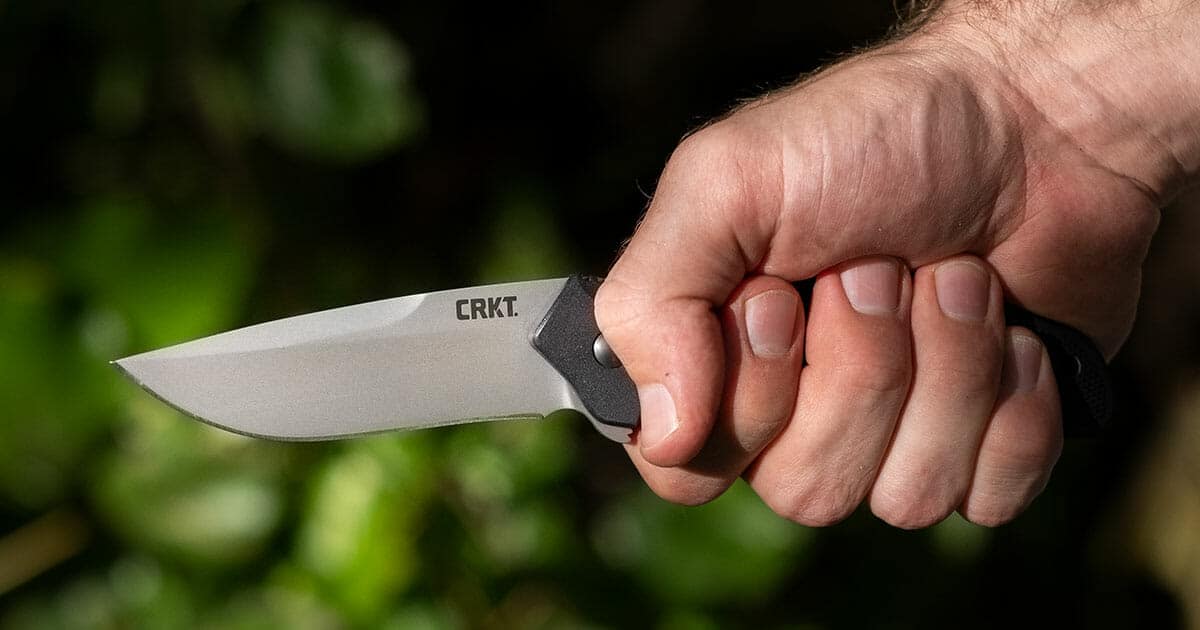
So long as you keep it sharp, though, the real perk of this knife is how it slices. And while the body of it is bulky, that’s part of what makes it a working knife (at least, that’s what the designer Ken Onion intended). It’s bulky but easy to clean, the steel is middle of the road but easier to sharpen, and the general overbuilt design makes it that much easier to grip and manipulate when you’re wearing gloves.
CRKT has also updated the Shenanigan with maroon scales and spring assisted action, which is cool if you’re into that sort of thing. I’m opposed to AO knives on principle, but the new Shenanigan is still decent value.
Click here to check out my full review of the CRKT Shenanigan.
Ka-Bar Becker Folder
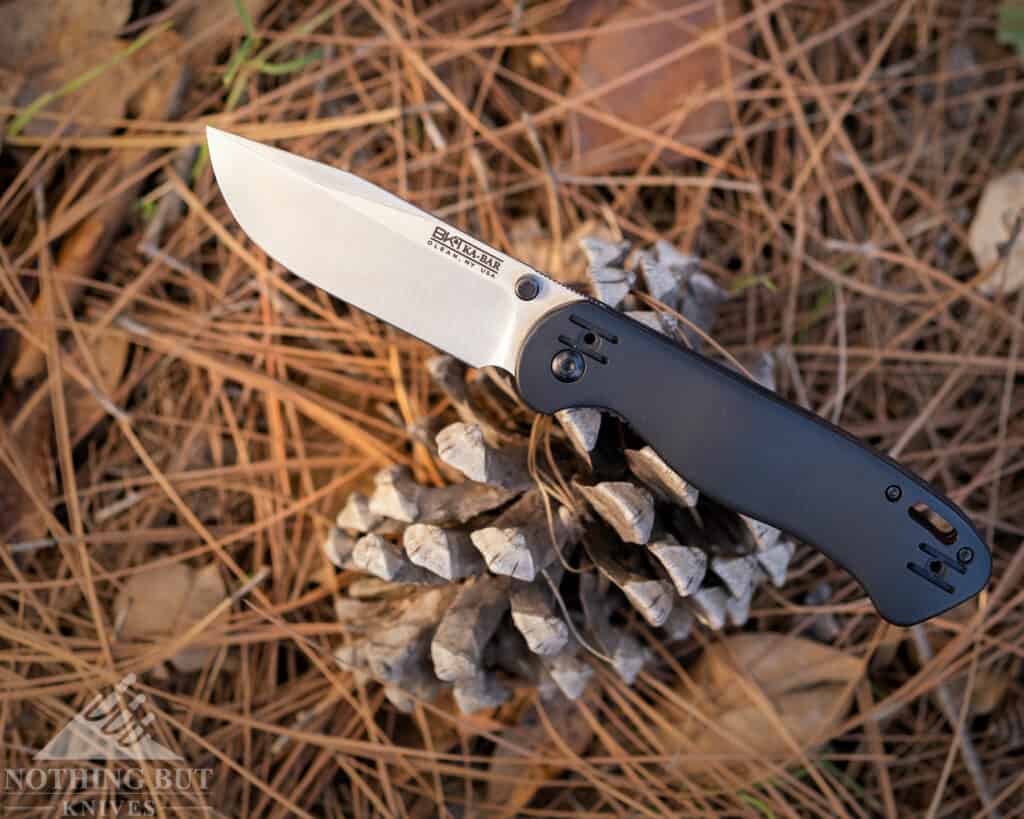
| Overall Length: | 8.5″ |
| Blade Length: | 3.55″ |
| Steel: | AUS8 |
| Blade Style: | Drop point |
| Handle Length: | 4.75″ |
| Handle Material: | GFN |
| Lock Mechanism: | Liner |
| Open System: | Thumb stud |
| Grind: | Flat |
| Carry System: | Ambidextrous Tip-up clip or tip-down |
The Ka-Bar Becker folder was specifically designed by Ethan Becker to be a budget hard-use pocket knife. It offers a great combination of toughness, functionality and carry versatility. It is one of the few knives on the market that allows the pocket clip to be moved, so the knife can be carried tip up or tip down in either the left or right front pocket.
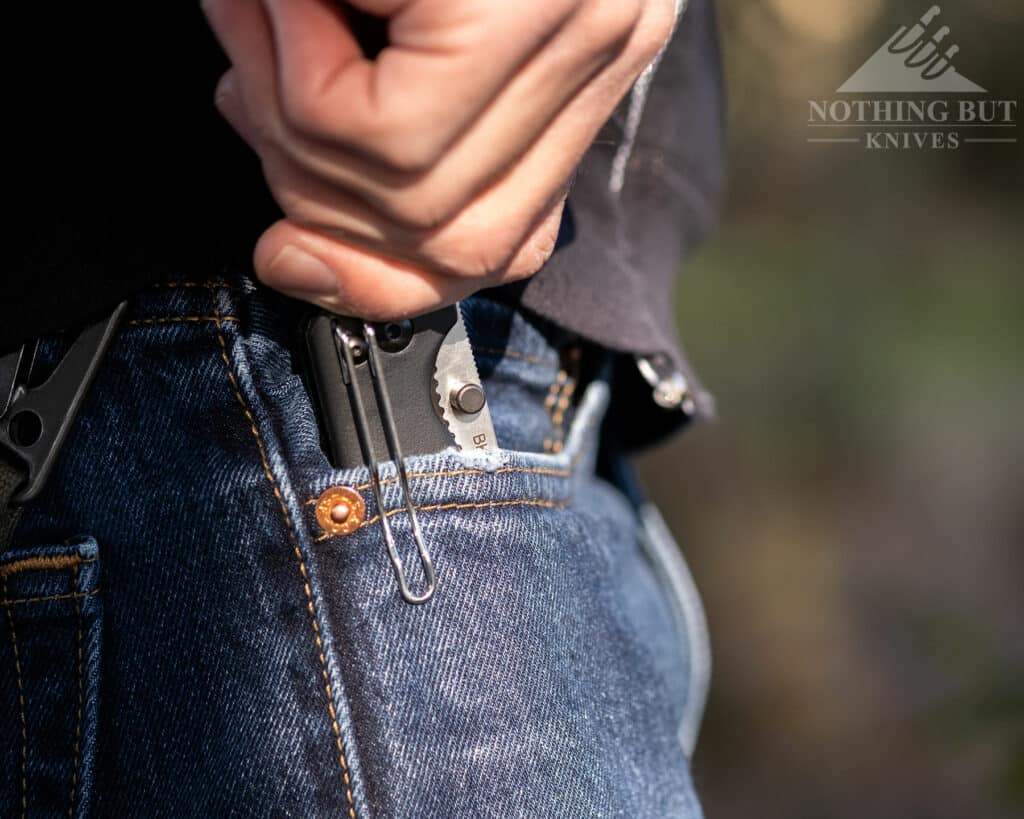
The tall, flat grind of the Ka-Bar Becker folder combined with the thick spine and tough steel make it a great choice for hard work. AUS8 steel isn’t known for edge retention, but it sure is tough. It is also very easy to sharpen.
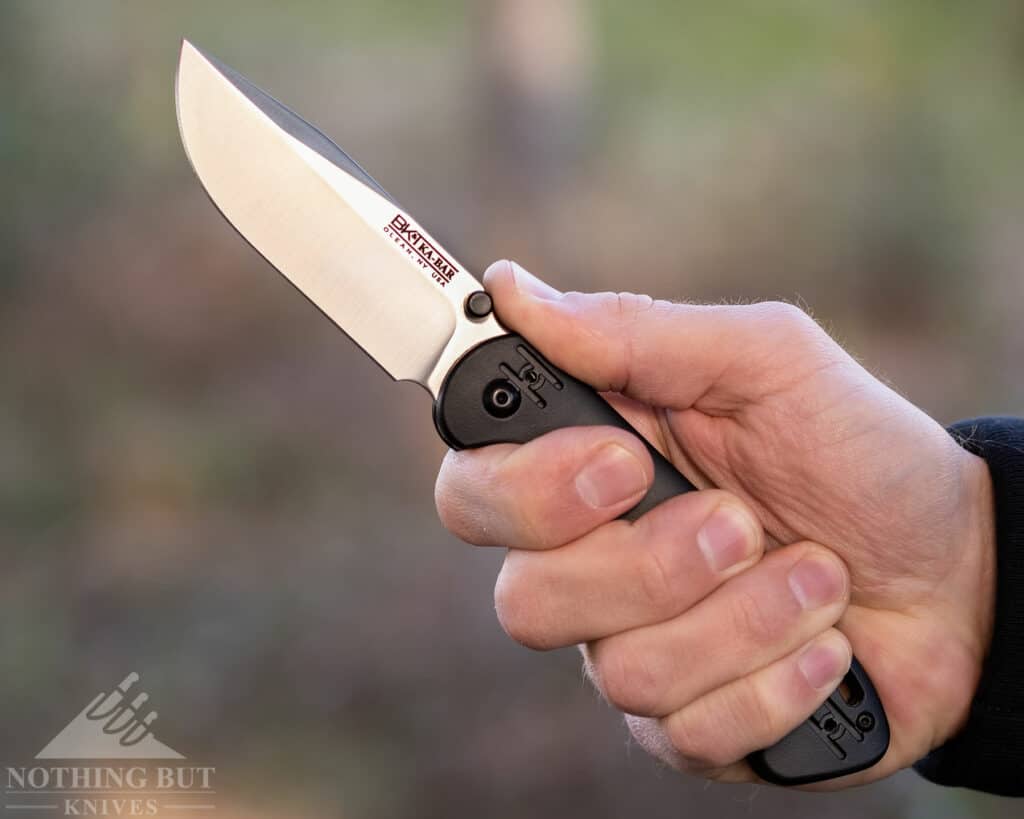
This knife is tough to beat from a toughness and carry versatility stand point in the under $50 price category.
QSP Pangolin
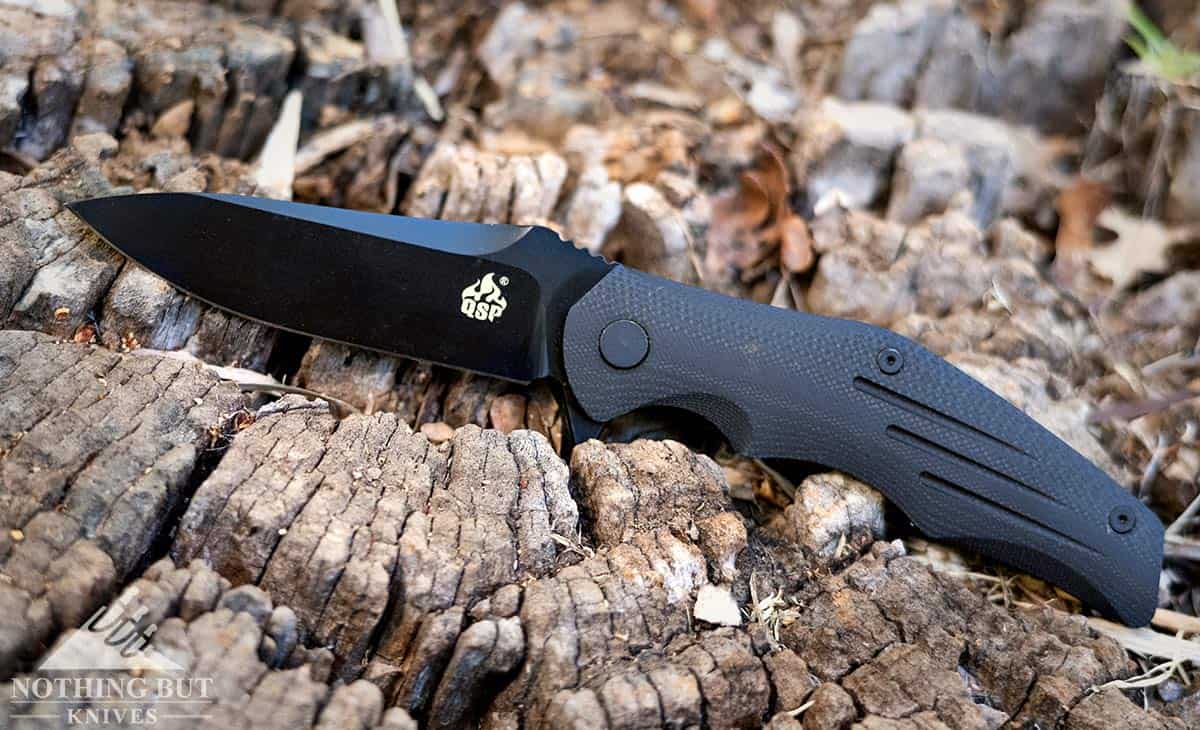
| Overall Length: | 8.5″ |
| Blade Length: | 3.75″ |
| Steel: | D2 |
| Blade Style: | Drop point |
| Handle Length: | 4.75″ |
| Handle Material: | G-10 |
| Lock Mechanism: | Liner |
| Open System: | Flipper |
| Grind: | Flat |
| Carry System: | Tip-up clip |
The QSP Pangolin has been out for a few years, and it has built a solid reputation as a dependable budget flipper. I thought it might be a good addition to this list, so I ordered it to test out. I have been pleasantly surprised at its performance, fit and finish and overall ergonomics.
The D2 steel blade is tough, and the flat grind makes it fairly versatile. The G-10 handle is comfortable and easy to grip even with gloves on. However it is difficult to close with one hand when wearing gloves.
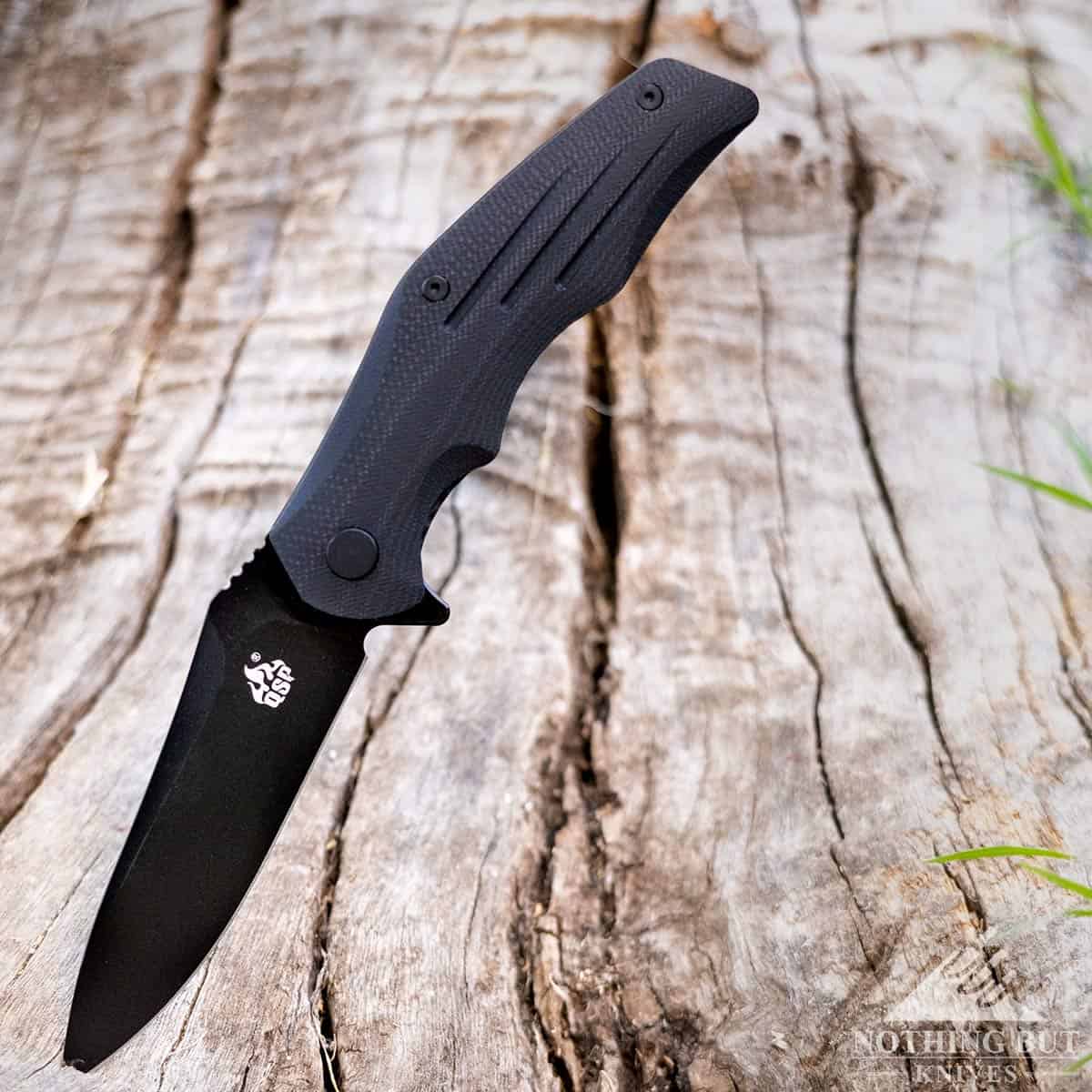
Despite the relatively large size the Pangolin rides comfortably in the pocket. It’s not a deep carry knife which is fine with me, because deep carry knives are tough to remove from the pocket when wearing gloves. The pocket clip is snug, but not so tight that it tears up the pocket.
The Pangolin also has a decent action for a budget knife, so if you are a fidget flipper this is a great tool for annoying everyone else in the room.
The blade is centered which was no surprise considering the overall great fit and finish of the Pangolin. This is the first QSP knife we have ever tested out here at Nothing But Knives, and we were mostly impressed.
The Pangolin is not as beefy as the CRKT Ruger 2 Stage that it replaced on this list, but it is more versatile and pocket friendly.
Opinel #9
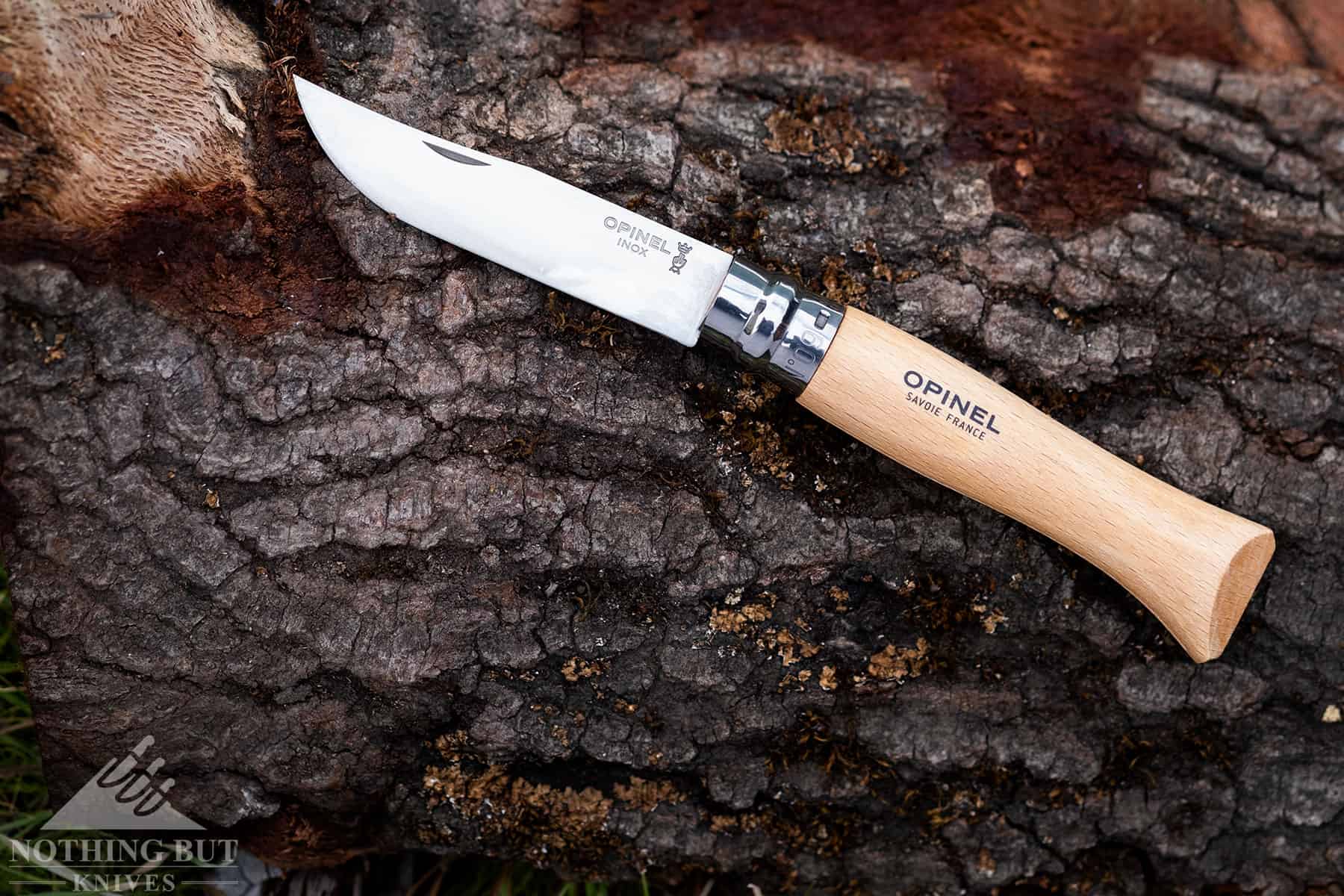
| Overall Length: | 8.15″ |
| Blade Length: | 3.5″ |
| Steel: | High carbon |
| Blade Style: | Clip point |
| Handle Length: | 4.65″ |
| Handle Material: | Beechwood |
| Lock Mechanism: | Virolock |
| Open System: | Nail nick |
| Grind: | Flat |
| Carry System: | Pocket (some leather sheaths available) |
As hesitant as I am to include something that isn’t one-handed open, I have to admit the Opinel design is underappreciated as a working knife.
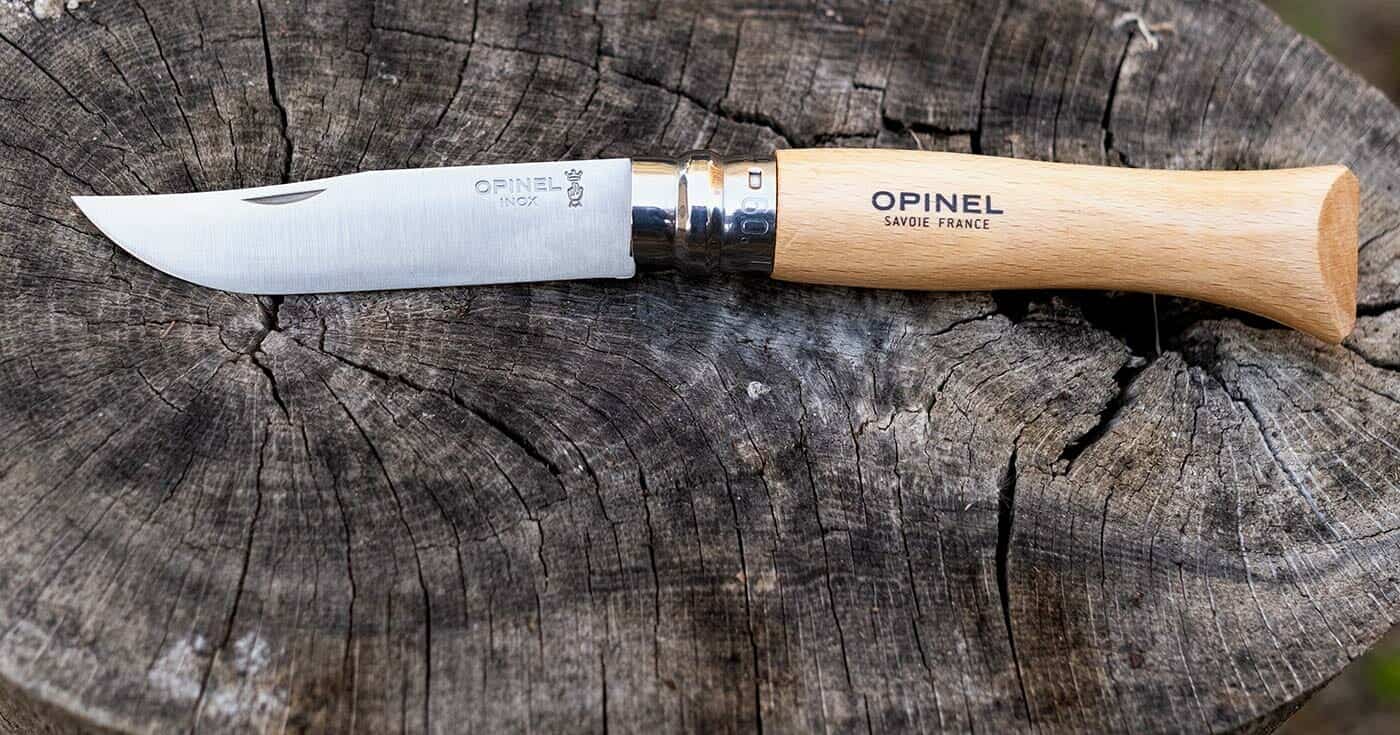
It’s nothing fancy, which is what makes it so durable. It would be a nightmare to open with a gloved hand, but once you’ve got it, the round handle is actually pretty well made for a clunky grip. On top of that, it’s really made to get dirty. If I recall, this was originally a design for farmers (like most friction folder designs).
The ring lock isn’t flashy, but it’s more than enough to keep the blade secure, and the smooth wood handle and straightforward blade design have become classic over time, but when they first appeared on the market they were just the bare bones features for a working knife. There are no weird grooves that might pack up grime, and it has a price that makes it pretty painless to replace should the worst happen.
Another fun fact about the Opinel #9 is that is is a great knife for lifting the cap of a beer bottle.
CRKT Squid
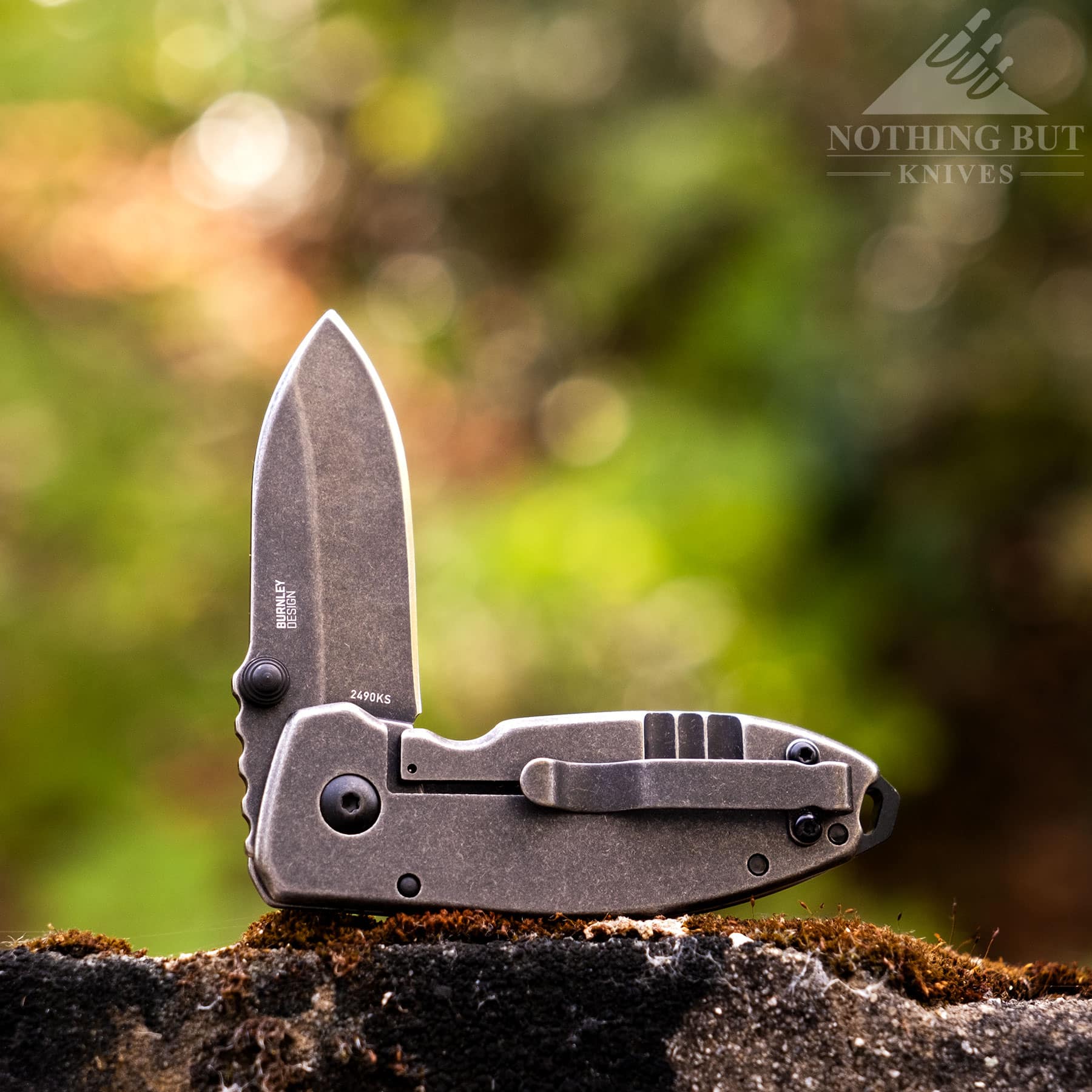
| Overall Length: | 5.75” |
| Blade Length: | 2.25” |
| Steel: | 8Cr13MoV |
| Blade Style: | Spear point |
| Handle Length: | 3.5” |
| Handle Material: | Stainless steel |
| Lock Mechanism: | Frame lock |
| Open System: | Thumb stud |
| Grind: | Hollow |
| Carry System: | Tip-up clip |
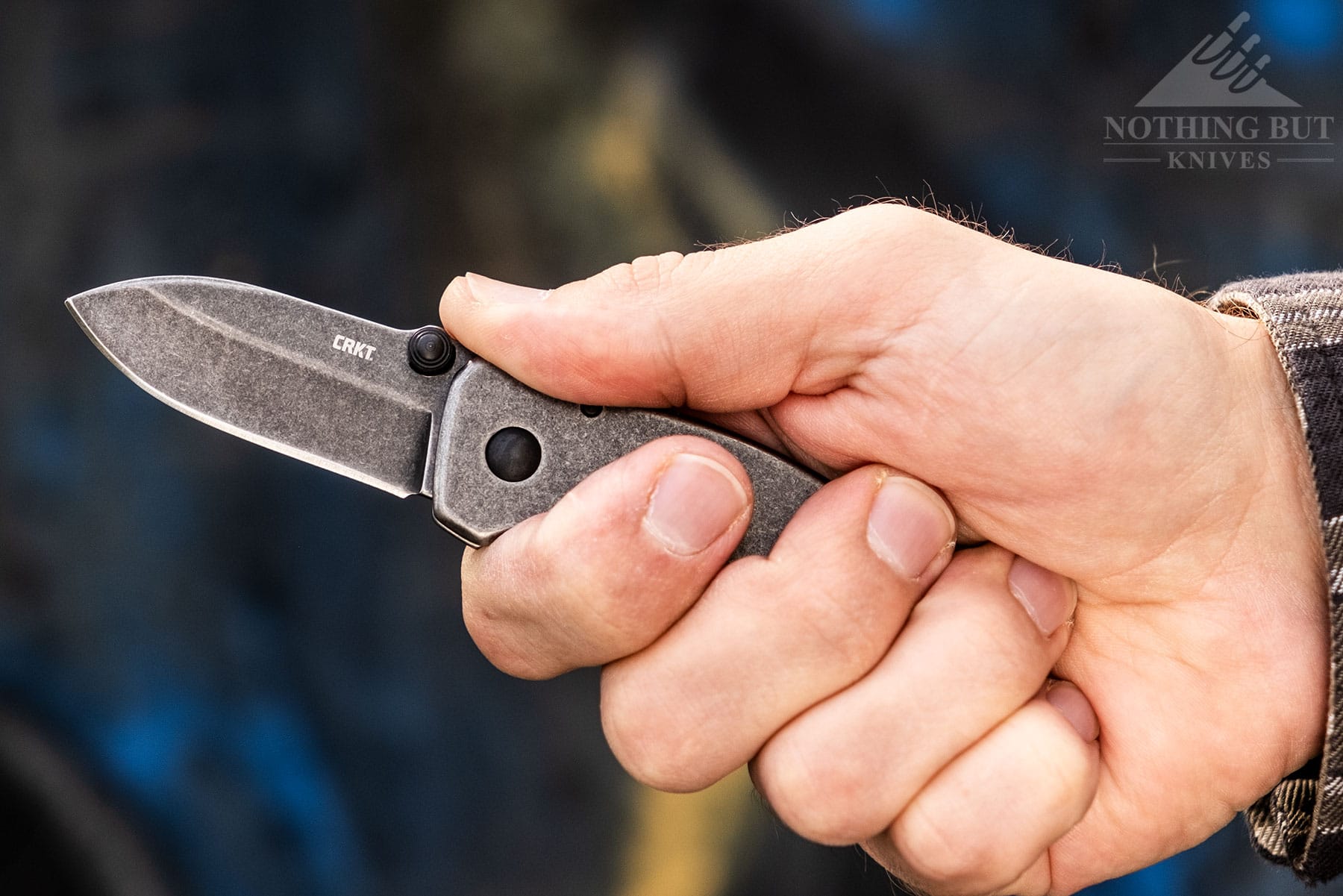
It’s small and it looks like it would be difficult to find a strong grip on, but the handle finds a way.
The knife is all rounded corners, and the shape makes it easy to grip in all sorts of interesting ways. I rarely use it in a standard grip. I pinch up on the blade and use the thumb stud as a brace, I hold it like a paring knife, I use it in a chest lever.
So even though it’s incredibly small, it’s easy to find a grip that works for what you need.
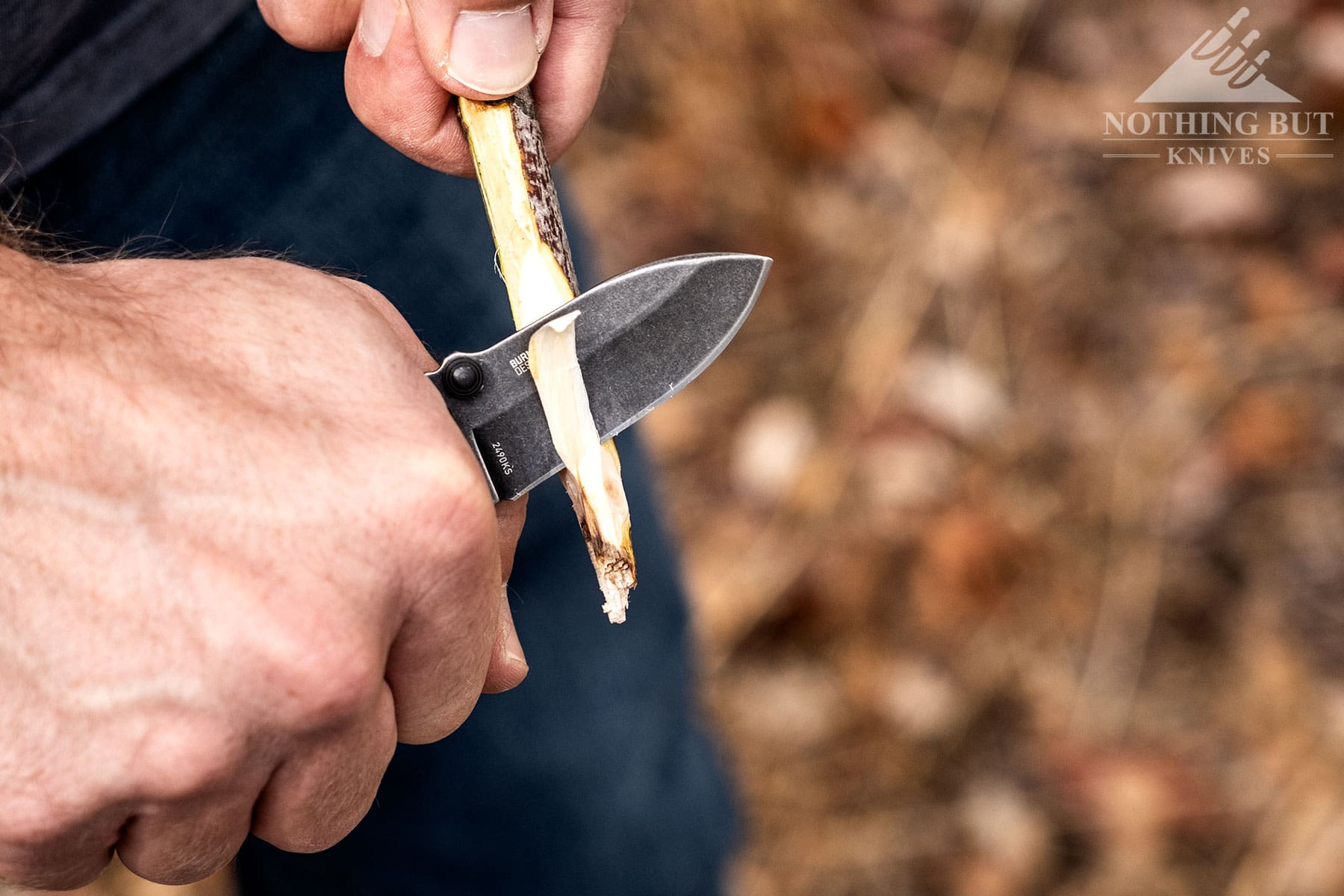
The factory is very toothy, which is usually great for hard use. This will tear into cardboard and rubber tubing no problem.
The pocket clip does cause a pretty significant hotspot and sticks out a little more than I’m generally comfortable with, but it has great retention, and the rest of the knife is comfortable enough to make up for it.
SOG Terminus XR
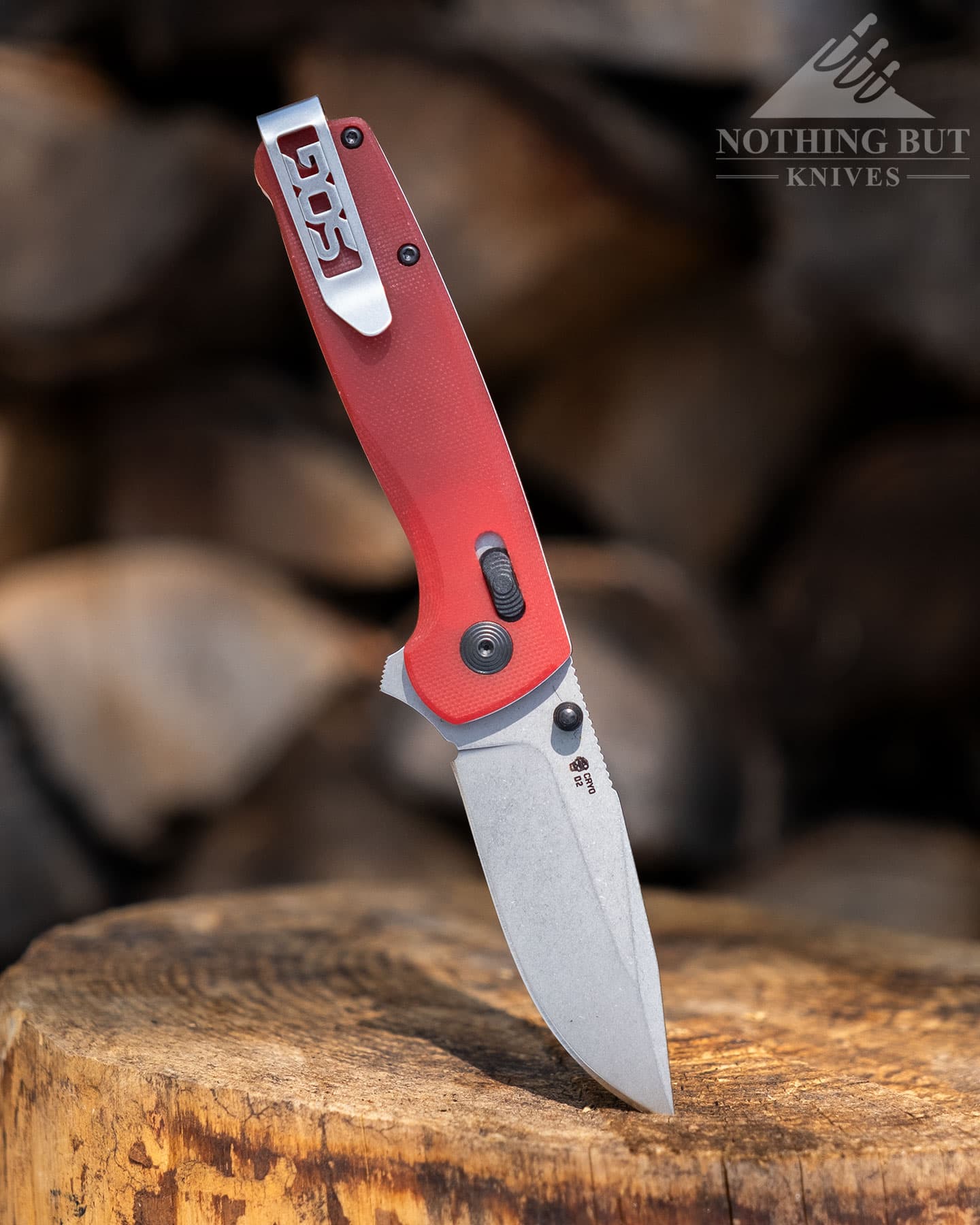
| Overall Length: | 7.0″ |
| Blade Length: | 3.0″ |
| Steel: | D2 |
| Blade Style: | Drop point |
| Handle Length: | 4.0″ |
| Handle Material: | G-10 |
| Lock Mechanism: | XR Lock |
| Open System: | Thumb stud and flipper |
| Grind: | Hollow |
| Carry System: | Tip-up clip |
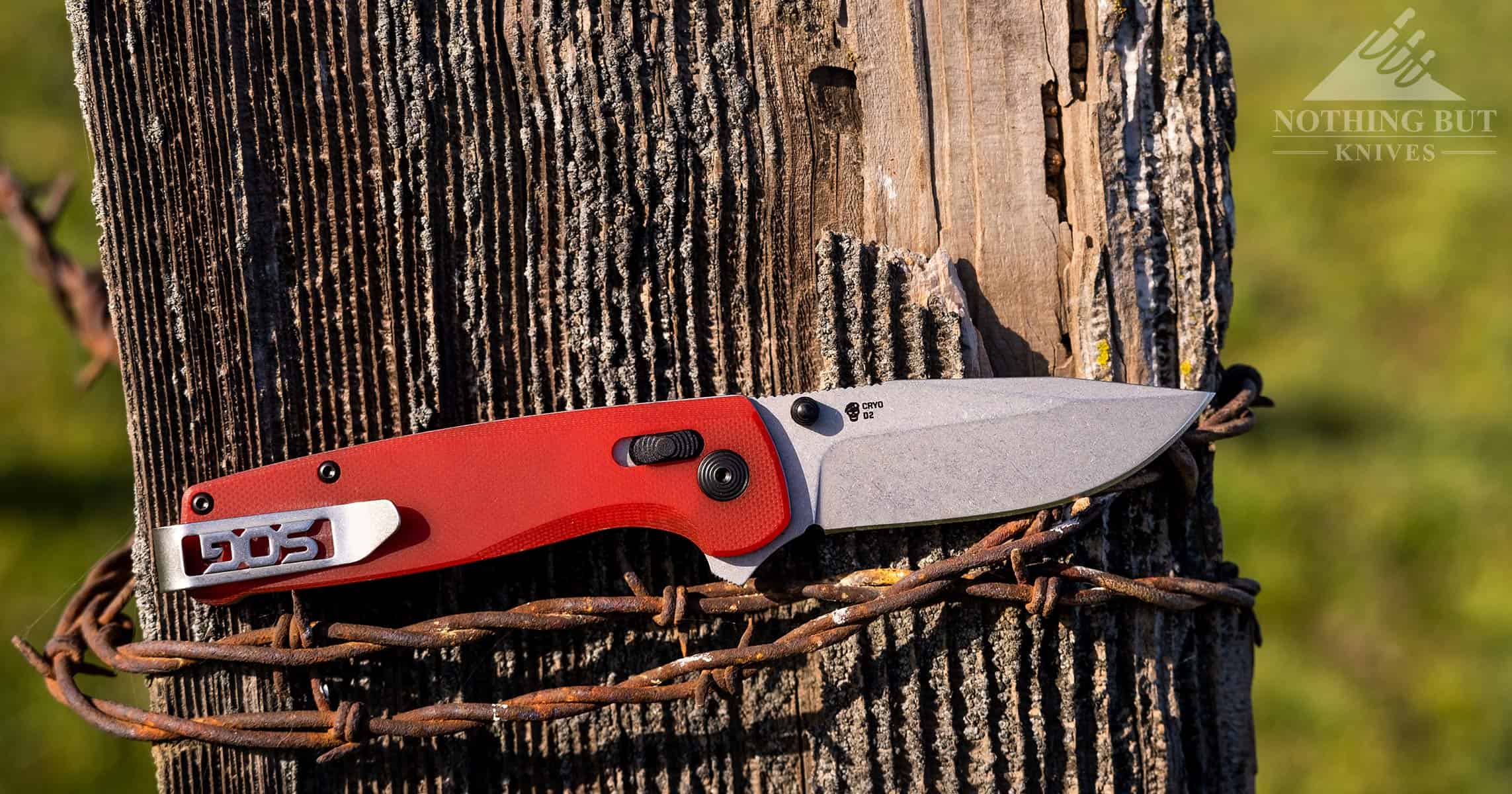
The Terminus is one of SOG’s first attempts at a slide lock design, and I would argue their first success with it. It’s a step back from their usual high-octane, urban tactical aesthetic and into something that’s just a good, sturdy working knife that’s easily comparable to the RAT 2.
The D2 version usually goes for around $50 right now, which puts it in that golden category of knives that are both tough and cheap enough to abuse. Plus the hollow grind is fairly shallow, so the geometry should be pretty easy to touch up and maintain.
I’m not sure why SOG thought it was necessary to put both a thumb stud and a flipper tab on this knife. It would have been just fine with only the thumb stud, but the flipper tab isn’t intrusive at all so it doesn’t hurt to have the extra option.
Knives Under 100 Dollars
It feels weird for most people to drop $80 on a knife that’s going to end up in mud puddles and subjected to the saw dust and dirt clouds of a construction zone, but we’ve found a few knives that are worth the price even if (or especially if) you think you’re going to abuse the hell out of it. Usually the price is in the steel, so expect to see hard, premium steels paired with tough, moderately cheap handle materials. Very often, though, the value is in how well that steel has been treated and ground.
If you are willing to spend a little a bit more than $100 for a hard use knife, though, check out our review of the Cold Steel 4MAX Scout. It may well be the ultimate hard use knife, but the price kind of puts it in its own category.
Artisan Cutlery Xcellerator
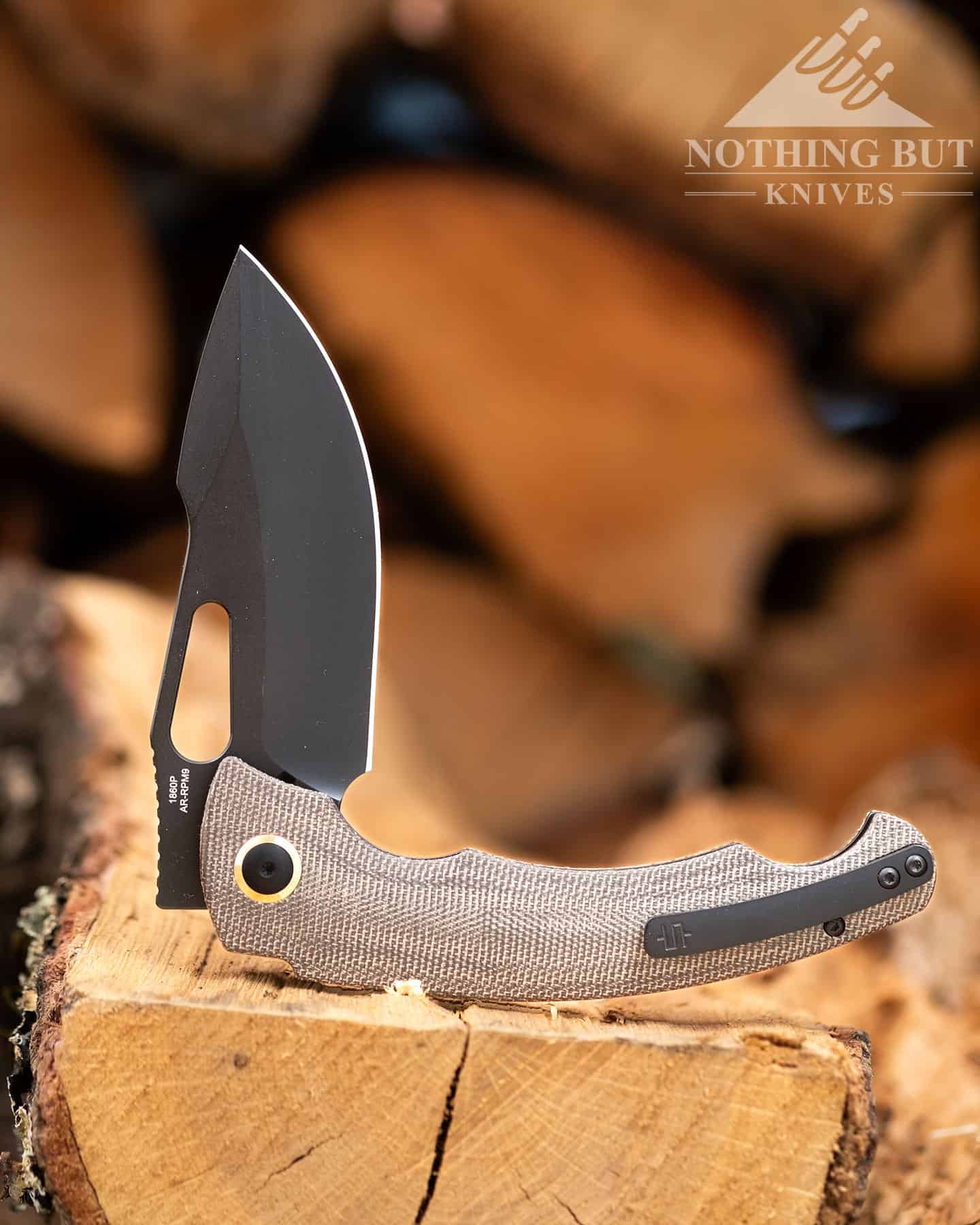
| Overall Length: | 8.86” |
| Blade Length: | 3.86” |
| Steel: | AR-RPM9 |
| Blade Style: | Harpoon |
| Handle Length: | 5.0″ |
| Handle Material: | Micarta |
| Lock Mechanism: | Liner |
| Open System: | Thumb hole |
| Grind: | Flat |
| Carry System: | Tip-up clip |
| Designer: | Mike Snody |
There are about thirty different ways to effectively grip this beast of a thing designed by Mike Snody. I know the handle looks like a lot, but all the curves and indentations do a lot to create different spaces that either lock your hand into a solid full grip or let you hook one or the other end of the handle with a fair amount of certainty.
The tall blade made up of Artisan’s budget powder steel also makes the Xcellerator a tough slicer that can take a thin, polished edge. This isn’t just a big tough knife; it’s a high functioning tool.

One little caveat to the toughness element is that this is running on bearings. So the action is more sensitive to dirt and you really shouldn’t pry with it if you can help it (but then you shouldn’t be prying with knives anyway). That’s just part of the territory with Artisan, though. They like smooth, snappy action, and by God they gave it to the Xcellerator.
Vosteed Labrador
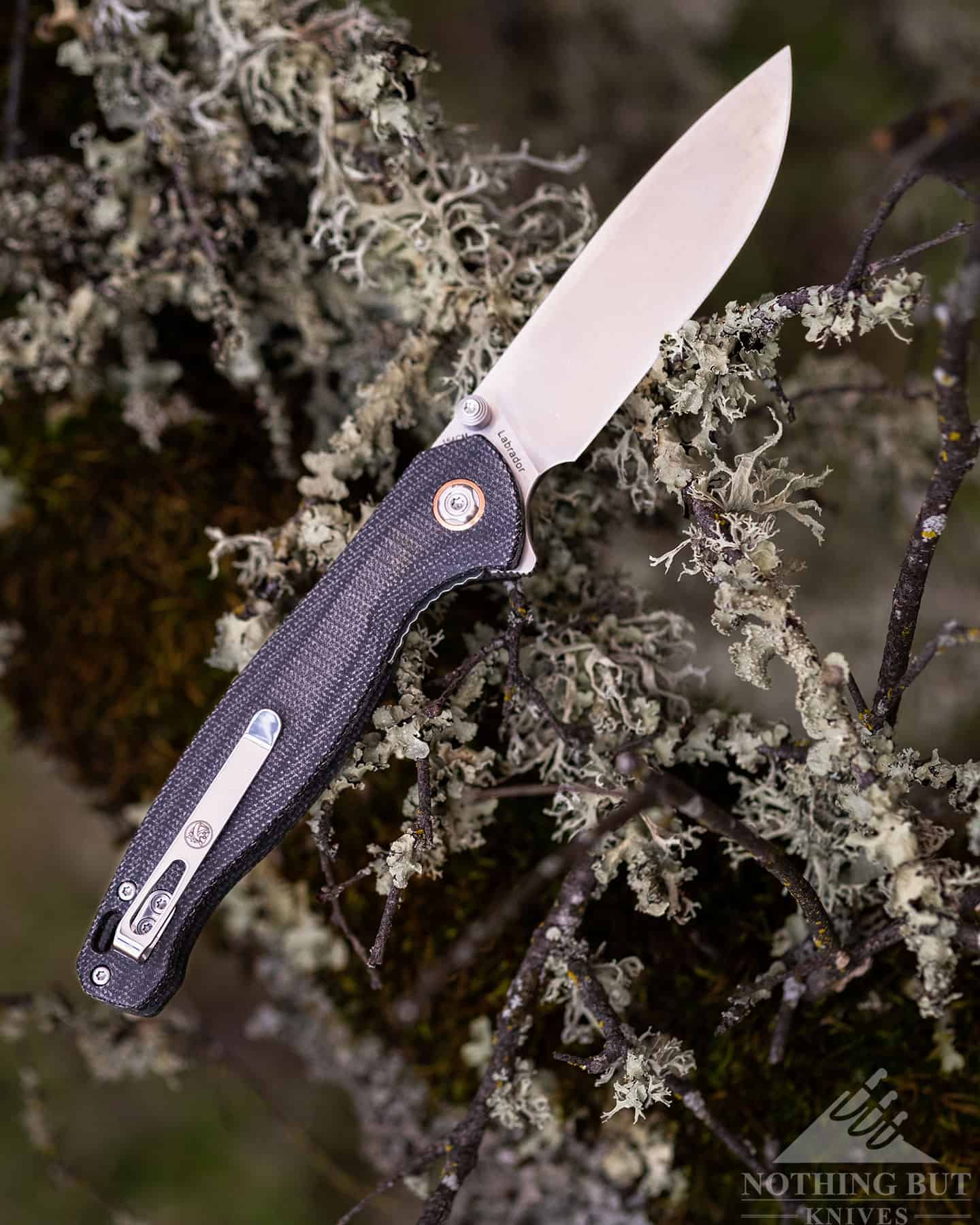
| Overall Length: | 8.73” |
| Blade Length: | 3.74” |
| Steel: | 154CM |
| Blade Style: | Drop point |
| Handle Length: | 4.99” |
| Handle Material: | Micarta |
| Lock Mechanism: | Cross bar |
| Open System: | Thumbstud |
| Grind: | Full flat |
| Carry System: | Right side tip-up |
I’m not sure if Vosteed intended this to be a hard-use folder, but it sure is a pleasure to use in the field. It’s a long knife with a luxurious handle and a simple, flowing blade.
I know none of that sounds especially tough, but there’s nothing quite like a good blade and comfortable handle to make hard work easier, especially when the handle has a good open shape that you can grip with heavy gloves on. I’ll sweeten the pot by pointing out that we’ve taken the Labrador camping several times and subjected it to whittling, carving, and general wet-and-cold-handed activity and the handle felt like a dream through all of it.
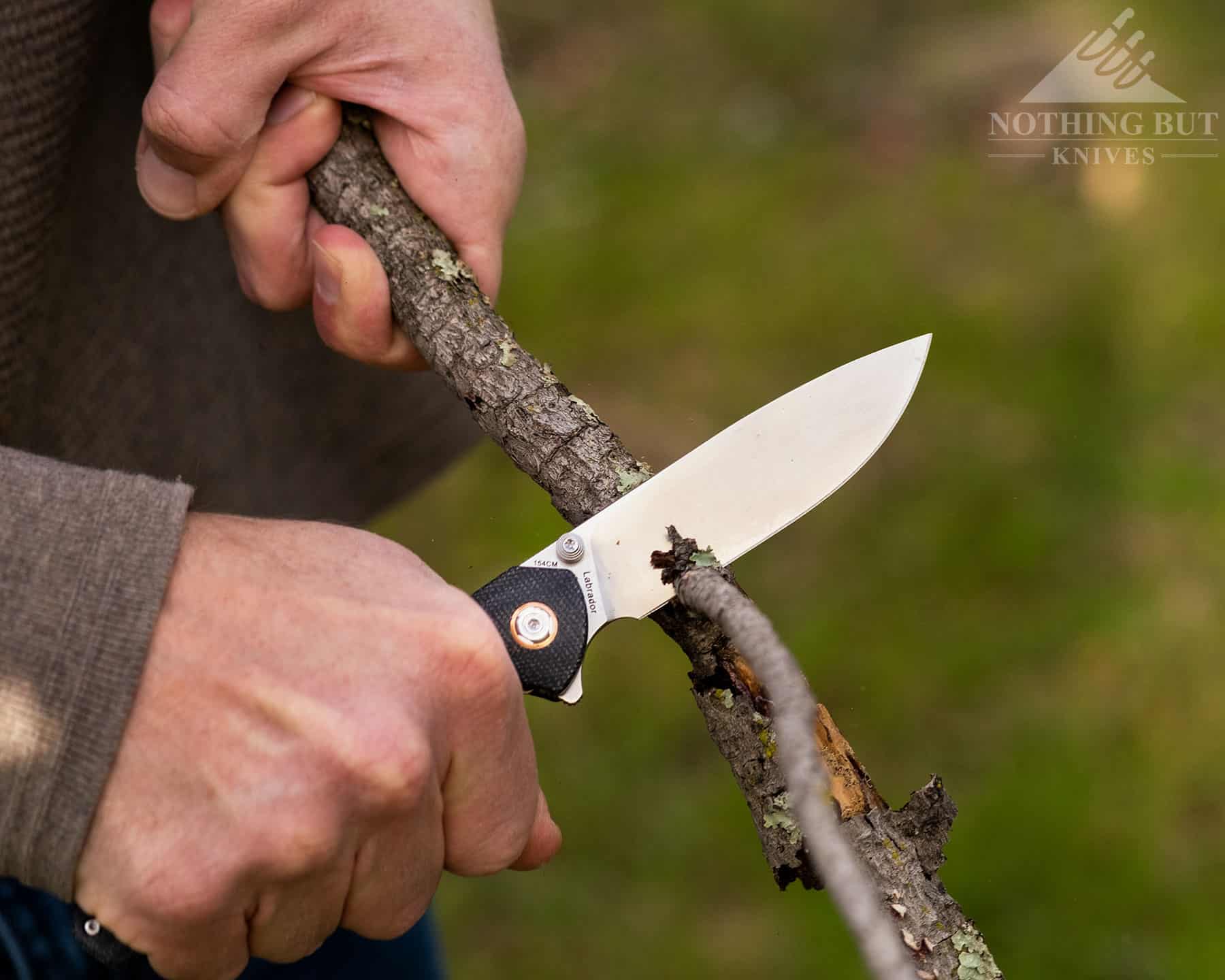
You can be pretty confident in the blade too, but I wouldn’t recommend chopping or twisting with it. 154CM steel has a history in tough knives, and I trust it to hold up to difficult tasks, even at the high-ish 60-61 HRC that Vosteed treated it to, but the design is still more optimized for clean slicing than chewing.Check out our full review of the Vosteed Labrador here.
Kansept Main Street
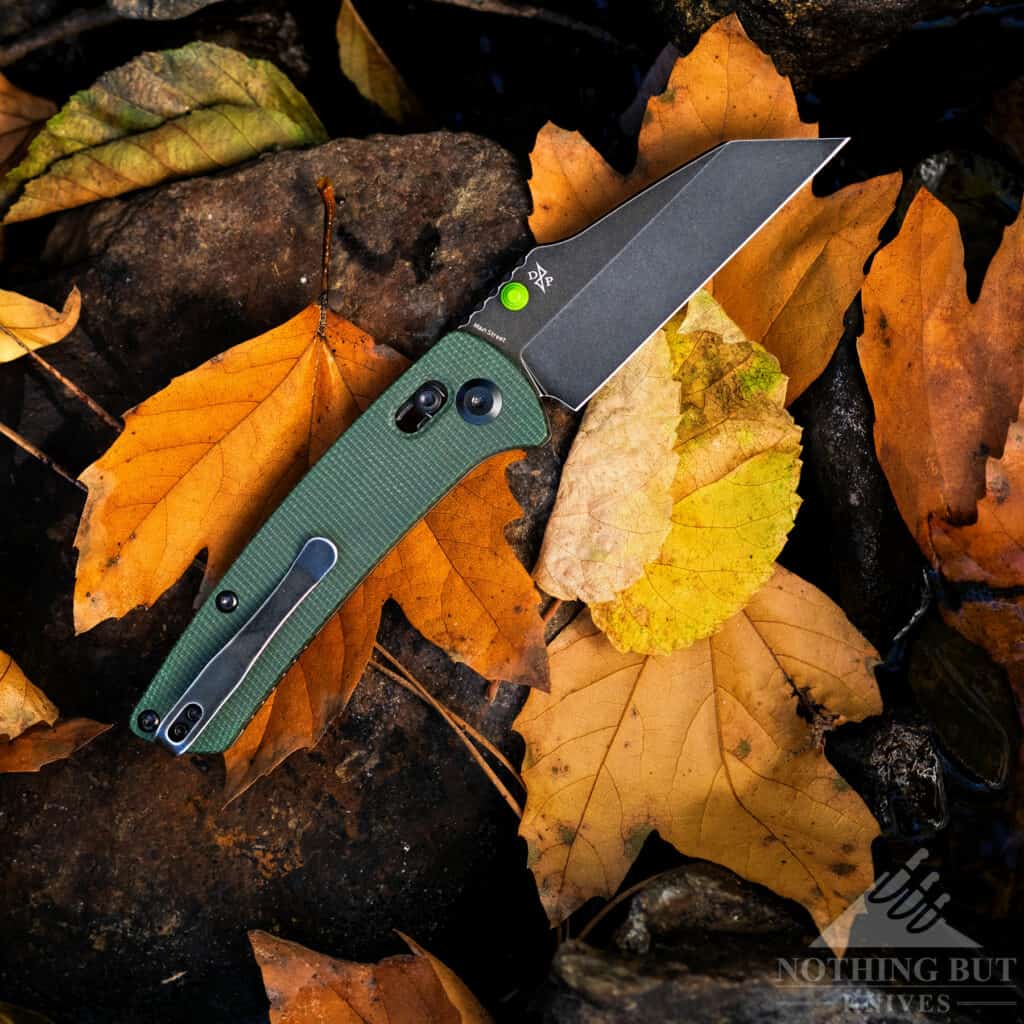
| Overall Length: | 7.95” |
| Blade Length: | 3.4” |
| Steel: | 154CM |
| Blade Style: | Reverse Tanto |
| Handle Length: | 4.5” |
| Handle Material: | Crossbar |
| Lock Mechanism: | Slide |
| Open System: | Thumb stud |
| Grind: | Flat |
| Carry System: | Tip-up pocket clip |
| Designer: | Dirk Pinkerton |
I’ve had to begrudgingly admit the usefulness of a good tanto blade many times over the years, reverse or otherwise. The Main Street is a Dirk Pinkerton design with a strong tip and a neutral handle with plenty of room to shift your grip, which are pretty common elements to Pinkerton designs. Which is to say, this is very much in keeping with other Pinkerton designs: clean cutting edge geometry on an overall robust build.
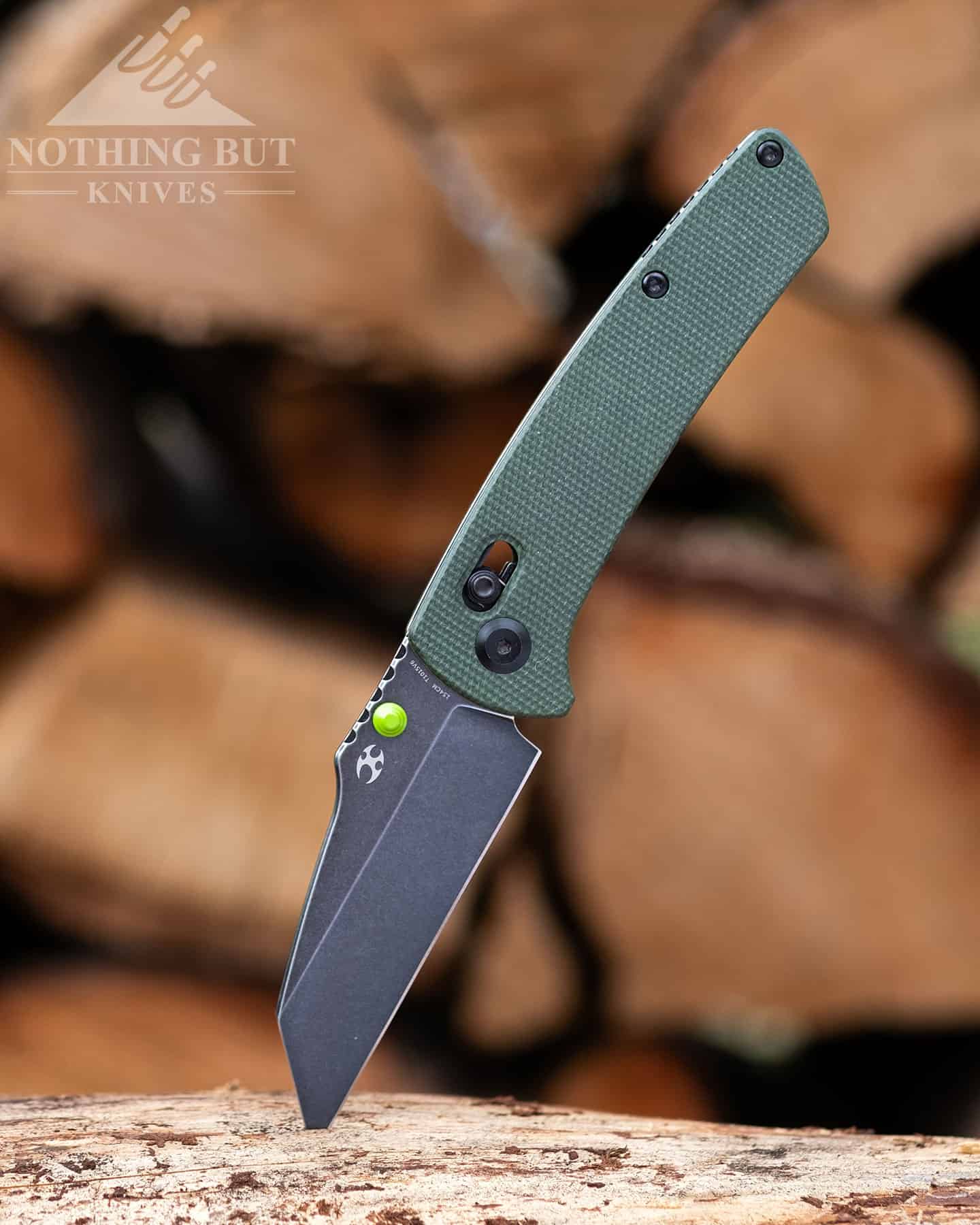
Meanwhile, 154CM is plenty stainless, but you can get the Main Street in a dozen different color combinations that include black blade coatings if you think you’ll be in wet conditions for a while. Or if you want to get really fancy, they make this with a titanium handle and an S30V steel blade. Personally, I prefer the grip and texture (and price) on the G10 Main Street, but there’s no beating the premium version for corrosion resistance.
Kansept also makes a premium folder called the Tuckamore that has the look of a Gentleman’s carry knife, but the heart, handle and blade of a hard use pocket knife.
Off-Grid Badger
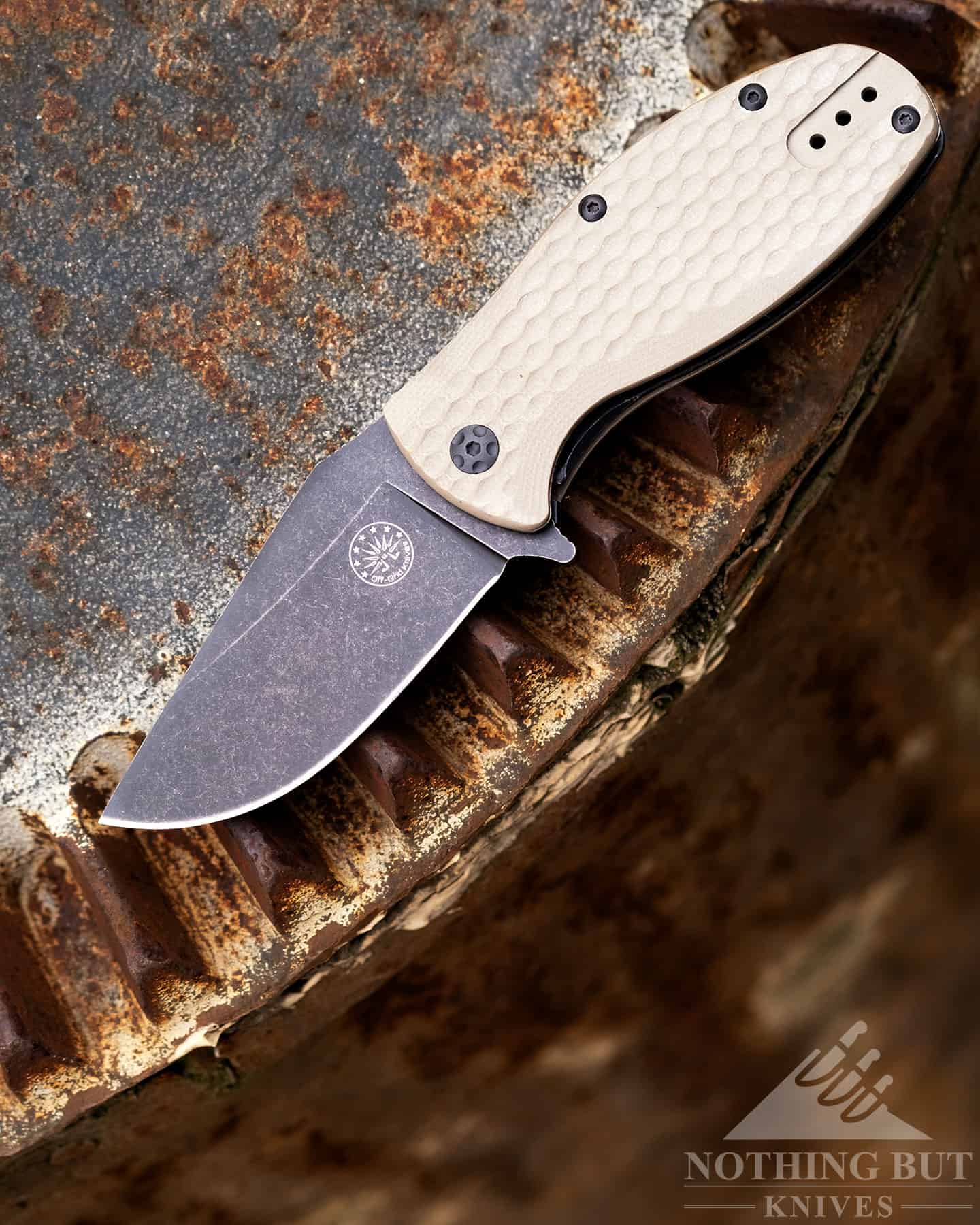
| Overall Length: | 6.9″ |
| Blade Length: | 3.0″ |
| Steel: | D2 |
| Blade Style: | Drop point |
| Handle Length: | 3.9″ |
| Handle Material: | FRN or G10 |
| Lock Mechanism: | Liner w/ Grid Lock |
| Open System: | Flipper |
| Grind: | Flat |
| Carry System: | Tip-up clip, left or right |
Off Grid makes most of their knives with hard use in mind, but this is one of the few that uses their Grid Lock system. It’s a simple system that keeps the liner lock from accidentally disengaging, which is a comfort to have for idiots like me who often find themselves hacking and prying with knives in gloved hands, and can’t always feels when the lock is getting pushed away.
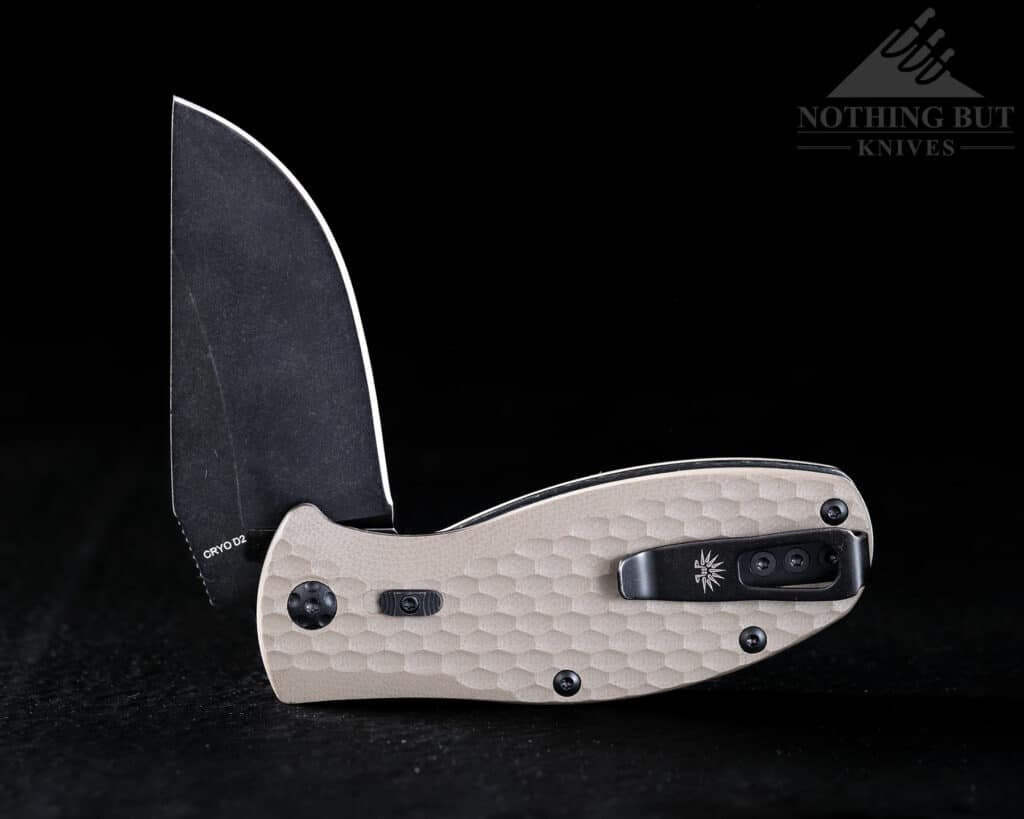
With D2 steel and the FRN scales, it’s pretty hard to hurt this knife. I’ve put it through a lot of abuse, and even after hammering it into a tree, the only problem it came out with was needing to be tightened up more often. Thankfully Off Grid made this easy to take apart and maintain.
Personally I prefer the ergonomics of its big brother, the Rhino, but that’s still running in $70 range, and you can still get a lot done with this fat little thing.
Read our full review of the Badger if you want to read more about how I abused it.
Real Steel Pathfinder
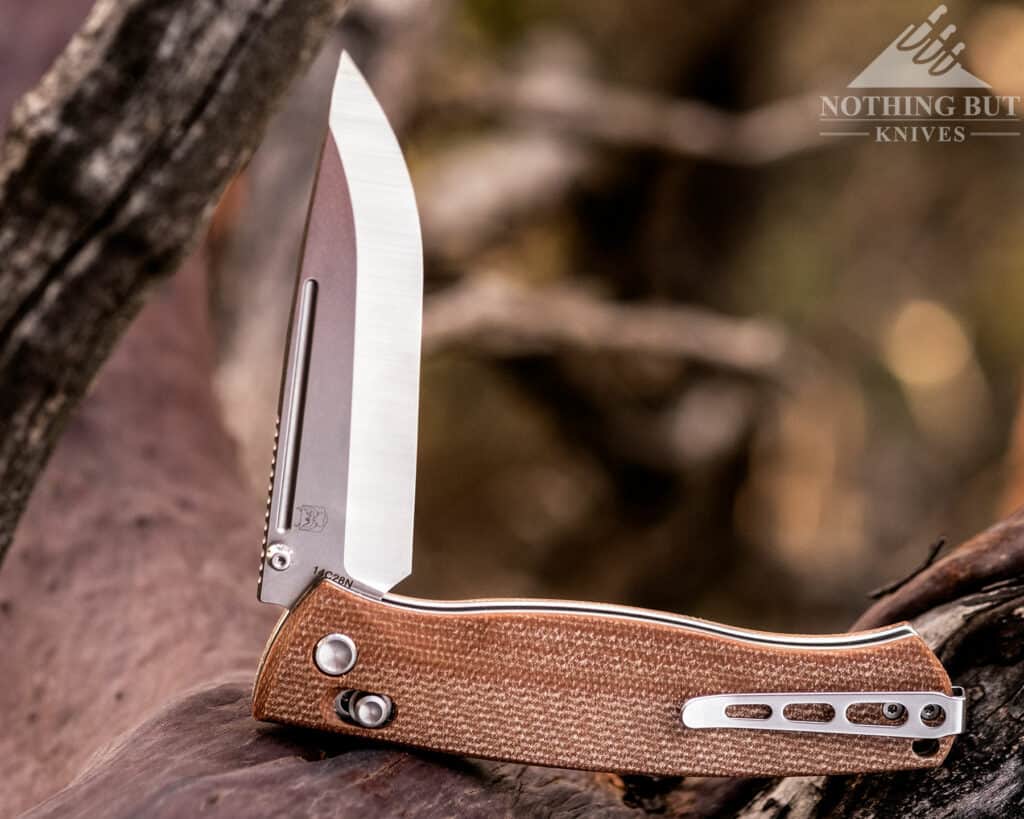
| Overall Length: | 8.76″ |
| Blade Length: | 3.83″ |
| Steel: | 14C28N |
| Blade Style: | Drop point |
| Handle Material: | Micarta |
| Lock Mechanism: | Slide lock |
| Open System: | Thumb stud |
| Grind: | Scandi |
| Carry System: | Tip-up clip, left or right |
The Real Steel Pathfinder is one of the best folding Bushcraft style knives we have tested. This knife excels at woodwork type tasks like feather sticking and carving. It has quickly become of our most recommended camping folders for anyone on a budget.
The pathfinder has a 14C28N steel knife with a Scandi grind. This blade is incredibly sharp right out of the box, and it just eats through wood. This thing really is a lot of fun to use for making feather sticks, carving tent stakes or campfire food prep.

This knife was made for a campsite. It has the look and feel of a bushcraft knife, and it excels at a lot of bushcraft tasks, but it is still a folding knife and hardcore bushcraft tasks like chopping or batoning should be avoided. We have found that that the Pathfinder is a great option for anyone that likes to carry large fixed blade bushcraft knives in the field, because it excels at the detail work larger bushcraft knives struggle with.
The dry Micarta handle has a neutral shape which makes it easy to adjust in the hand while in use. We did not experience any hotspots when doing hard-use tasks for an extended period of time. The handle also remained grippy when wet.
The Pathfinder looks and feels like it should cost more than $100. It really is an impressive knife at its current price point.
Kizer Vanguard Sheepdog
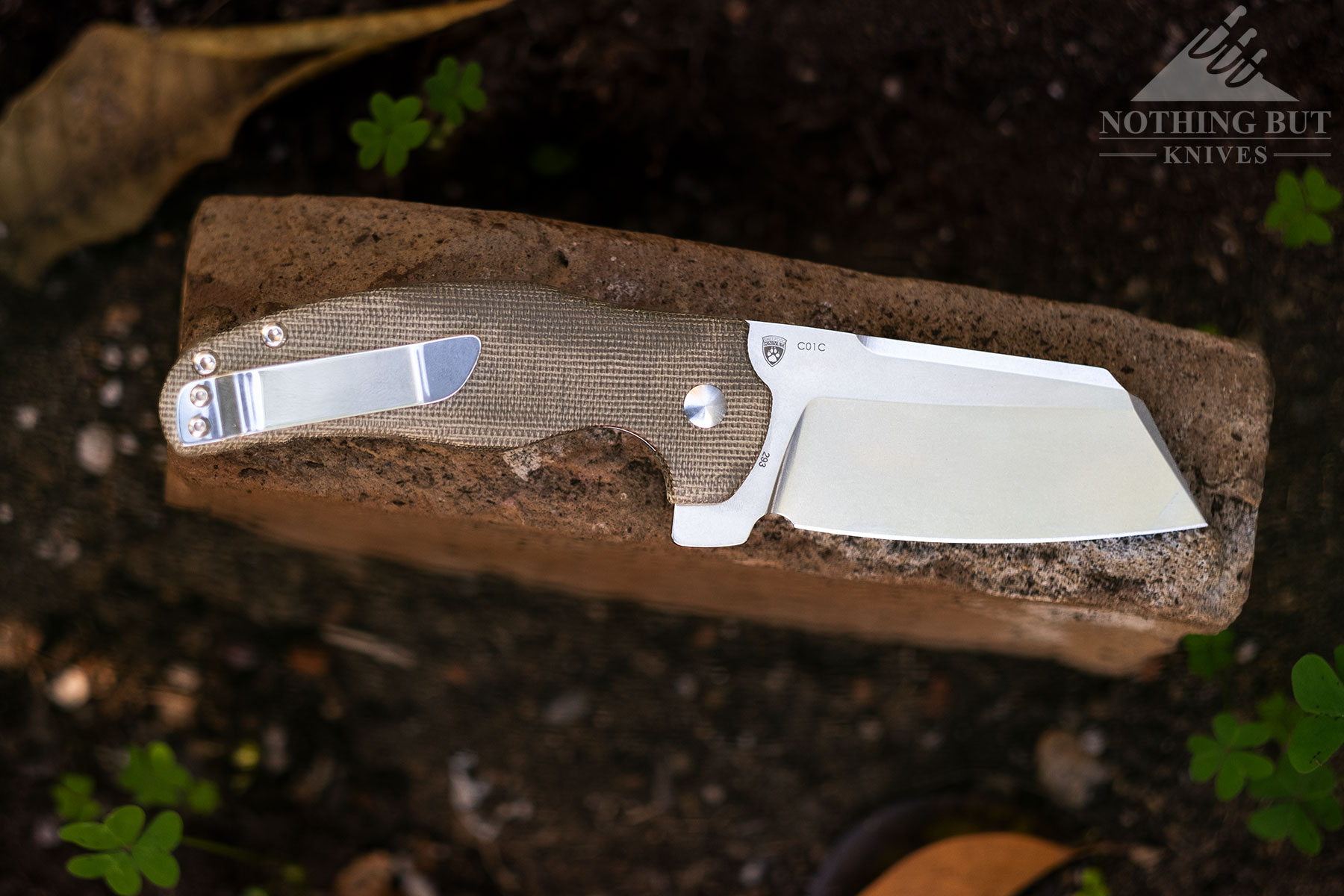
| Overall Length: | 7.75″ |
| Blade Length: | 3.125″ |
| Steel: | CTS-BD1N |
| Blade Style: | Sheepsfoot |
| Handle Length: | 3.9″ |
| Handle Material: | Micarta or G-10 |
| Lock Mechanism: | Liner |
| Open System: | Flipper |
| Grind: | Flat |
| Carry System: | TIp-up clip |
The Kizer Sheepdog is one of the most popular hard use knives on the market for several reasons. The first reason is that it is an extremely tough and well designed knife. The other reason is that Kizer offers the Sheepdog in three different sizes, two different handle options and several different color options. It is kinda like buying a custom knife without having to pay a custom knife price.
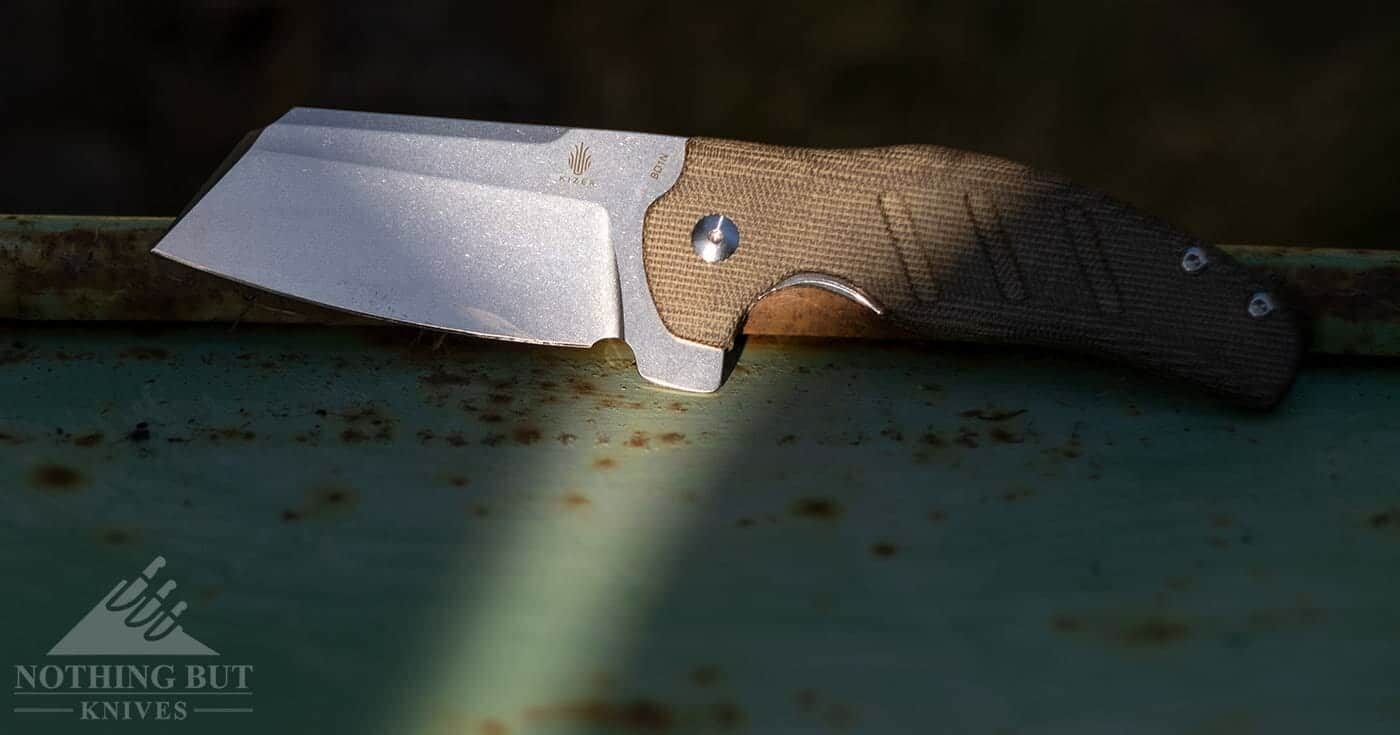
Considering its sub $100 price tag it’s impressive that the Sheepdog comes with CTS-BD1N steel. That is a steel that offers great edge retention, but is usually only found on more expensive knives like the Spyderco ParaMilitary 2.
Check out out full review of the Kizer Sheepdog if you feel like hearing us talk it up even more.
Cold Steel Voyager XL
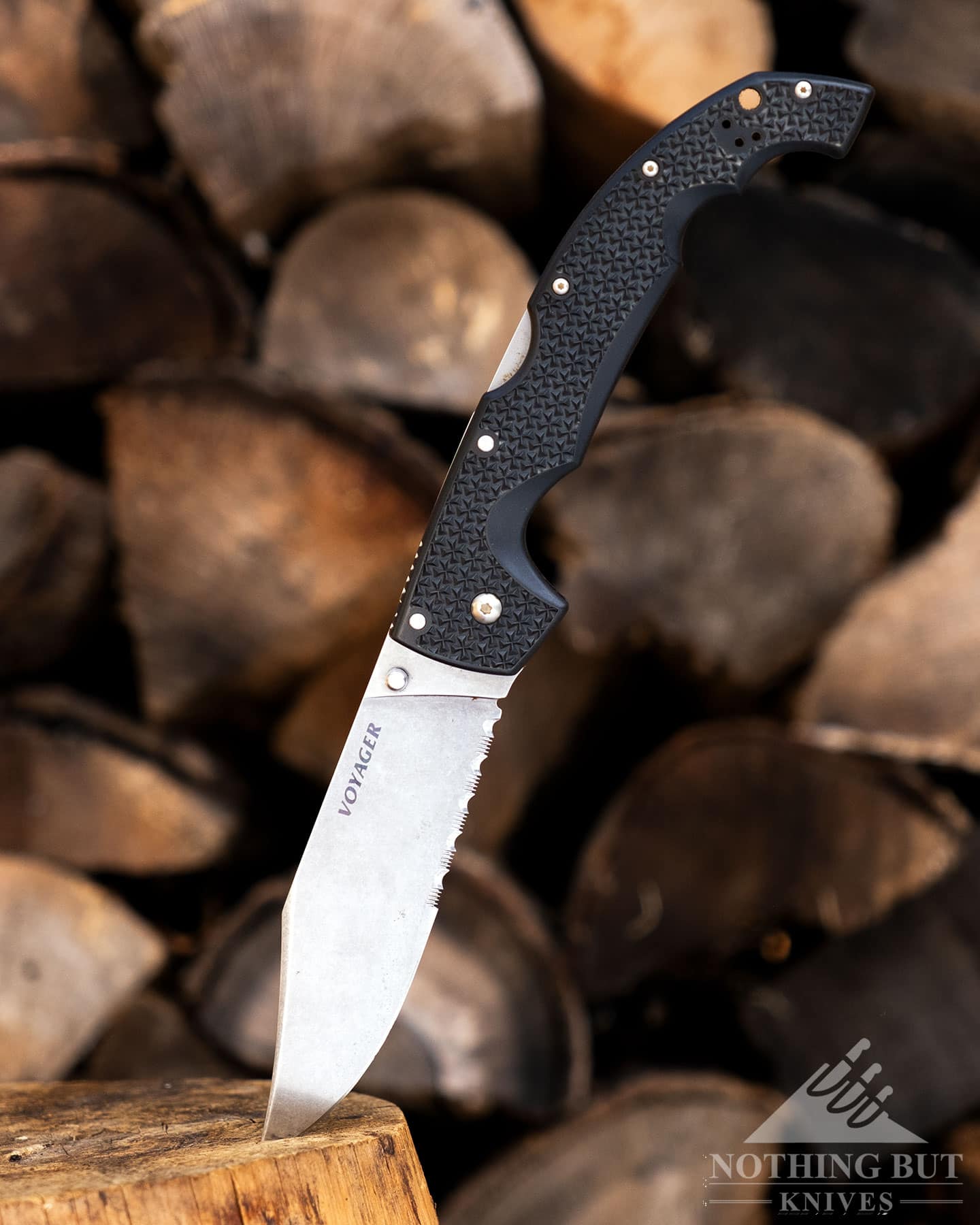
| Overall Length: | 12.25″ |
| Blade Length: | 5.50″ |
| Steel: | AUS-10A |
| Blade Style: | Drop point (and several others) |
| Handle Length: | 6.75″ |
| Handle Material: | Griv-Ex |
| Lock Mechanism: | Tri Ad Lock |
| Open System: | Thumb stud |
| Grind: | Flat or Hollow (depending on blade style) |
| Carry System: | Tip-up clip, left or right |
The Voyager XL from Cold Steel is a big pocket knife. Really big. However, it is more comfortable to carry than I expected it to be when I first ordered it. That said, if you prefer smaller knives this beast is probably not what you’re looking for.
The Voyager has been around for a while, and it has gone through a lot of changes in both the design and the steel. The end result of this evolution is a durable and surprisingly practical folding knife that thinks it’s a fixed blade.
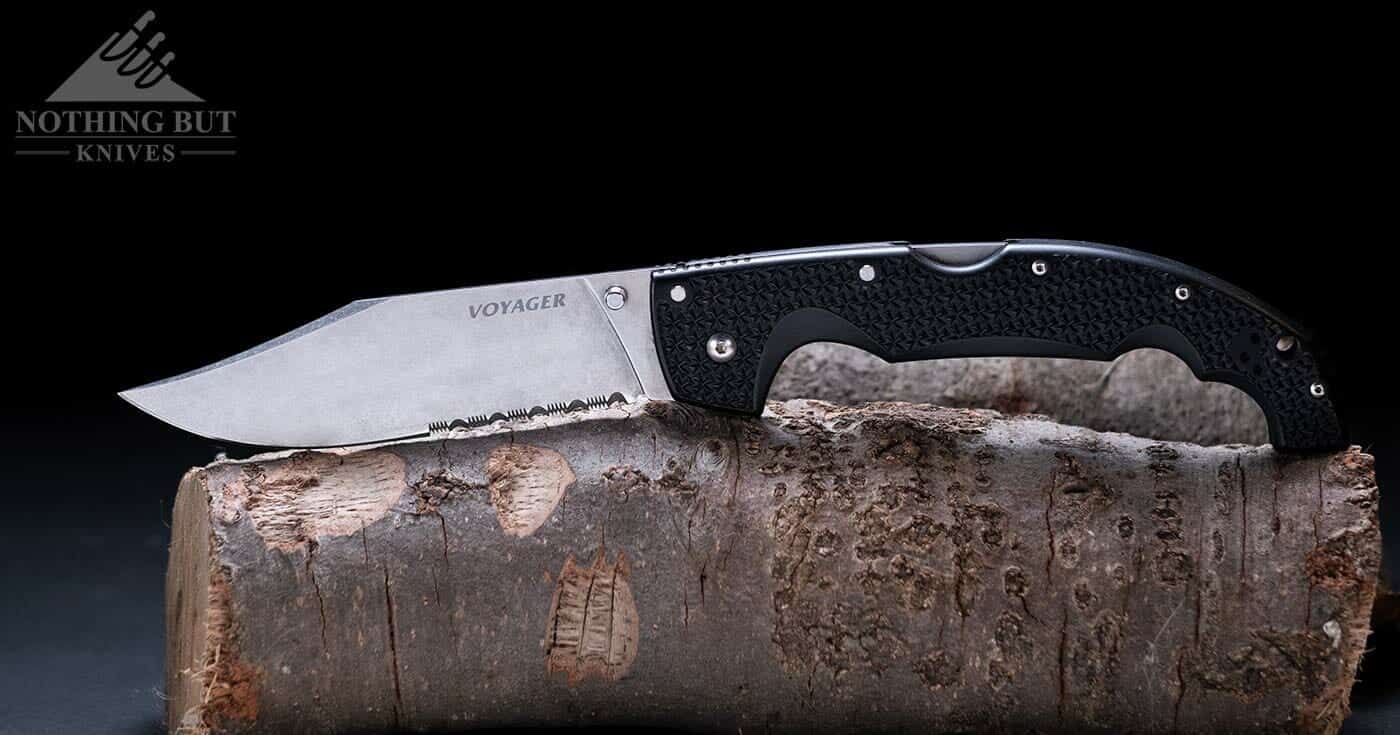
The newest design of the Voyager XL features AUS10 steel which is a great hard use steel. In fact I think it’s the best steel for hard use knives other than Niolox, but AUS10 is a more budget friendly option. The version pictured above is Cold Steel’s previous model with AUS-8 steel. There are still a few of those around online at resellers that sell used knives.
The Voyager XL can be purchased with a drop point, tanto or vaquero blade, and there are smaller versions of the Voyager as well. We did a review of the Cold Steel Voyager XL a while back. Check it out if want to see more photos or see what we thought of it.
Cold Steel 4-Max Scout
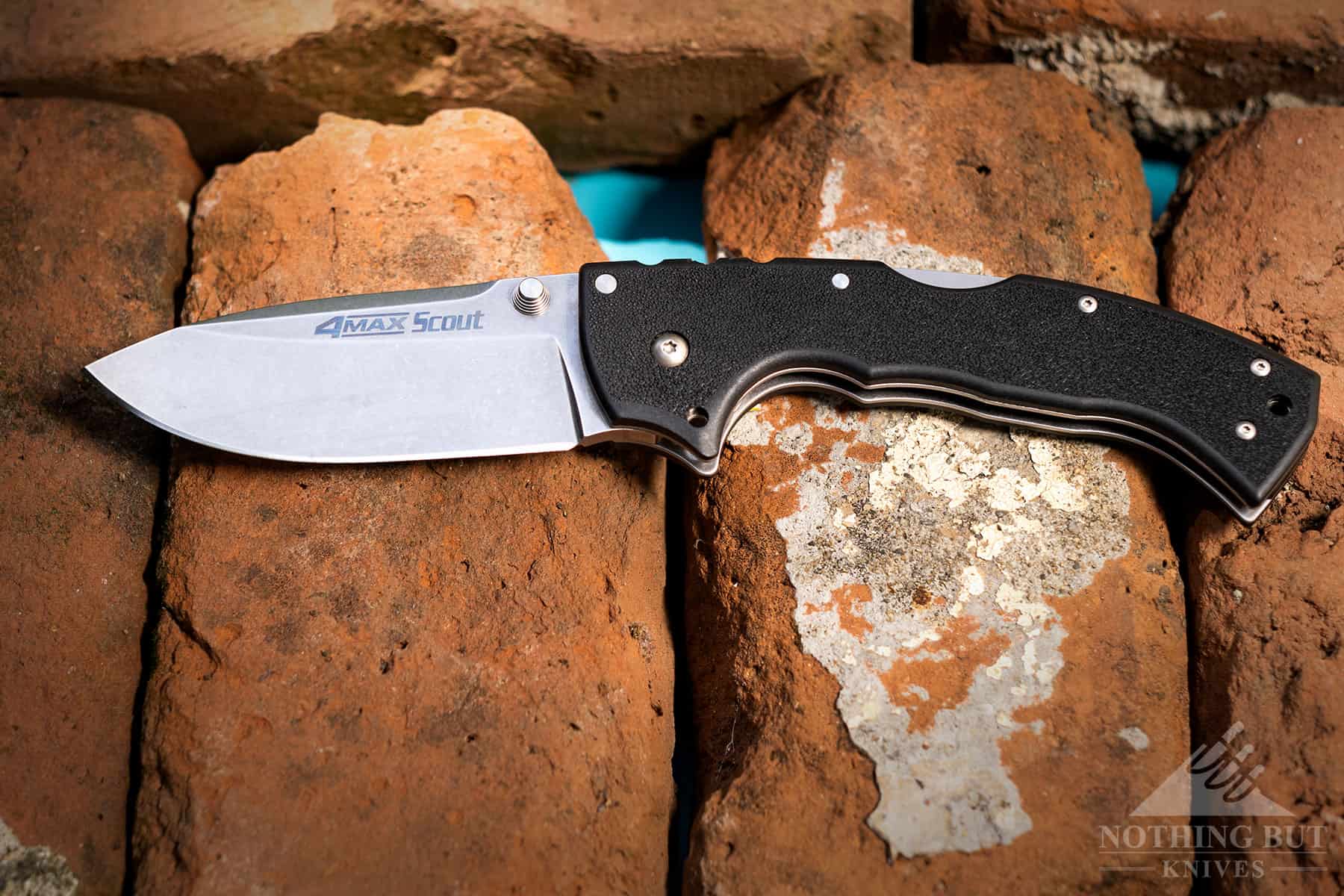
| Overall Length: | 10″ |
| Blade Length: | 4″ |
| Steel: | AUS10 |
| Blade Style: | Drop Point |
| Handle Length: | 6″ |
| Handle Material: | Griv-Ex |
| Lock Mechanism: | Tri-Ad |
| Open System: | Thumb Stud |
| Grind: | Flat |
| Carry System: | Tip-up clip |
The Cold Steel 4-MAX Scout is an incredibly tough knife. It has a thick blade, a bomb proof Tri-Ad lock and a large handle that is easy to grip when wearing work gloves. This knife is probably our most recommended knife to anyone who wants a super tough work knife that can take a beating. The downside of the 4-MAX Scout is that it is fairly heavy, and it takes up more than a little pocket space. This is a price many working folks are willing to pay for a folding knife that thinks it is a fixed blade.
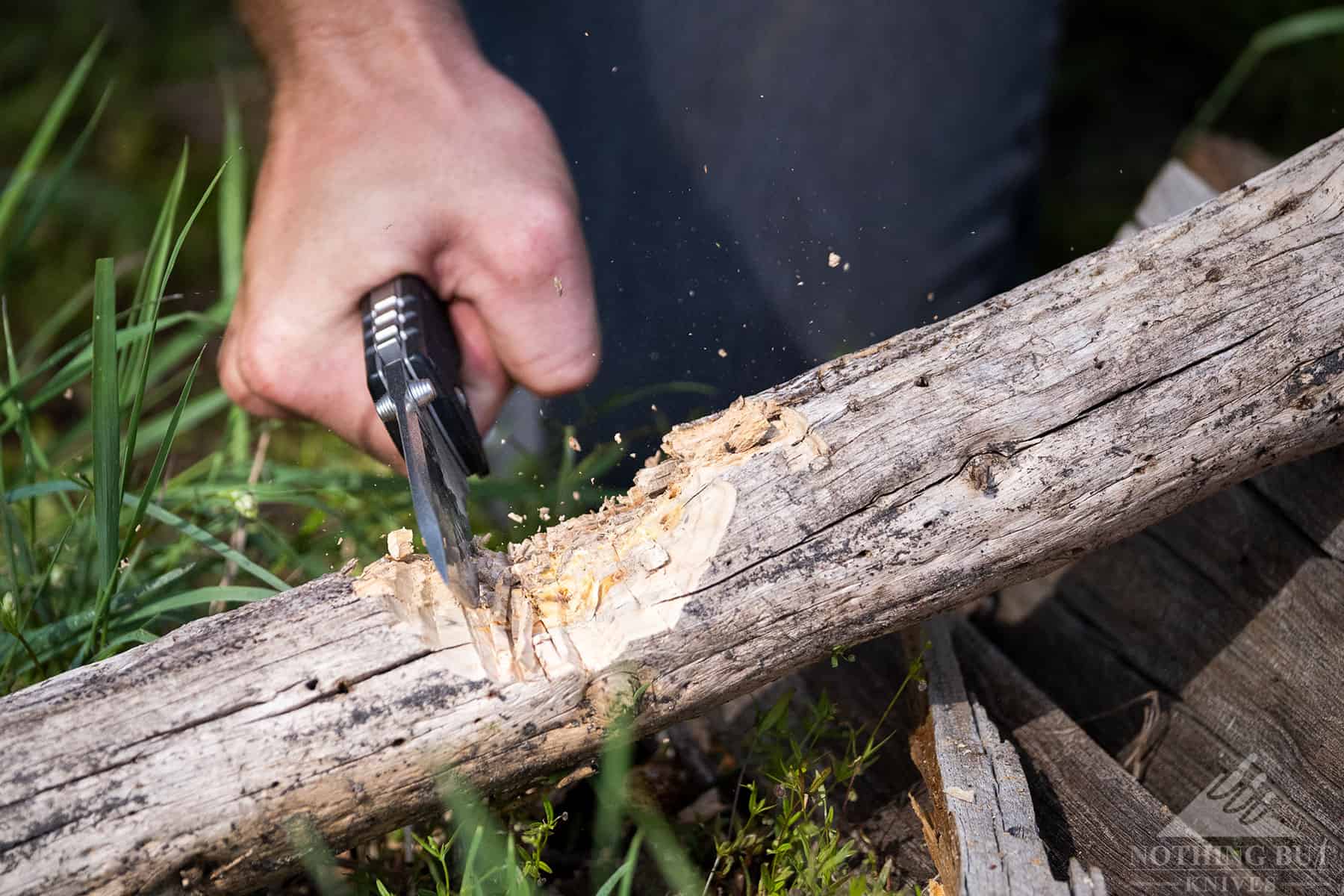
The 4-MAX Scout is not the fastest or easiest knife to open due to it’s size, but it wasn’t designed to be a fast opening tactical knife. One handed opening is fairly fast and easy with a little practice, but it won’t win any speed awards. This knife is hard use above all else, and it doesn’t sacrifice anything from a design standpoint that would make it more versatile at the cost of toughness.
Check out our in-depth Cold Steel 4 MAX Scout Review to learn more about this knife.
What is a Hard Use Design?
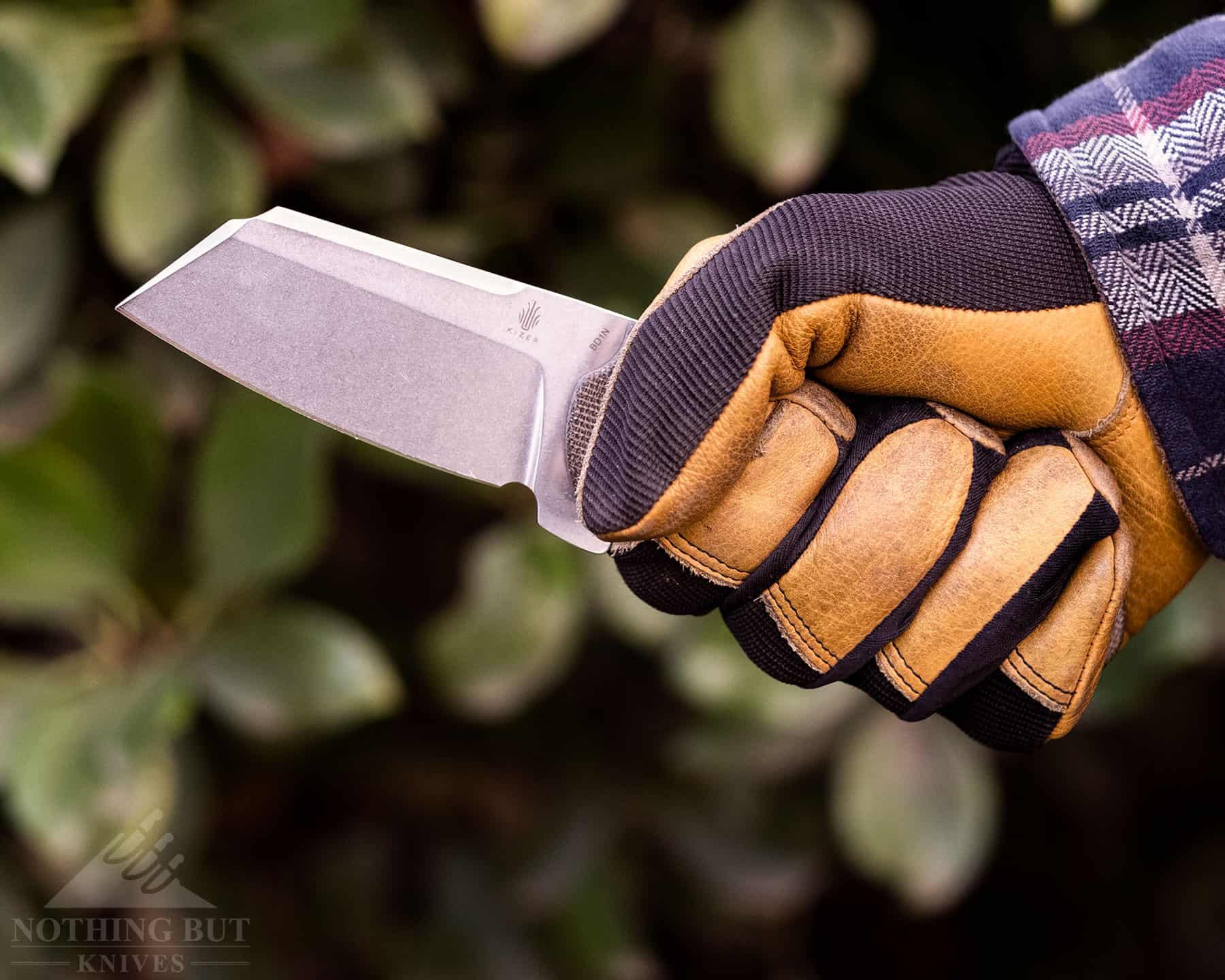
Dirt and impact are what I most expect a knife to handle well in order to count as “hard use”. I should be able to drop it out of a tree, get it covered in mud, and easily deploy and use it with gloves on, then clean it up at the end of the day with no chips in the edge. That comes down to something with a simple design and tough construction that’s easy to clean and maintain.
A “tough construction” can mean a lot of different things, and doesn’t always mean the design is simple (just see the Cold Steel 4-MAX Scout). My rule of thumb has always been that the more mechanics there are on a knife the more things that can go wrong with it, which is why I typically avoid assisted-open designs. But it really all comes down to how well the elements of a knife have been chosen and handled.
What’s the Best Steel, Handle, and Grind for a Hard Use Knife?
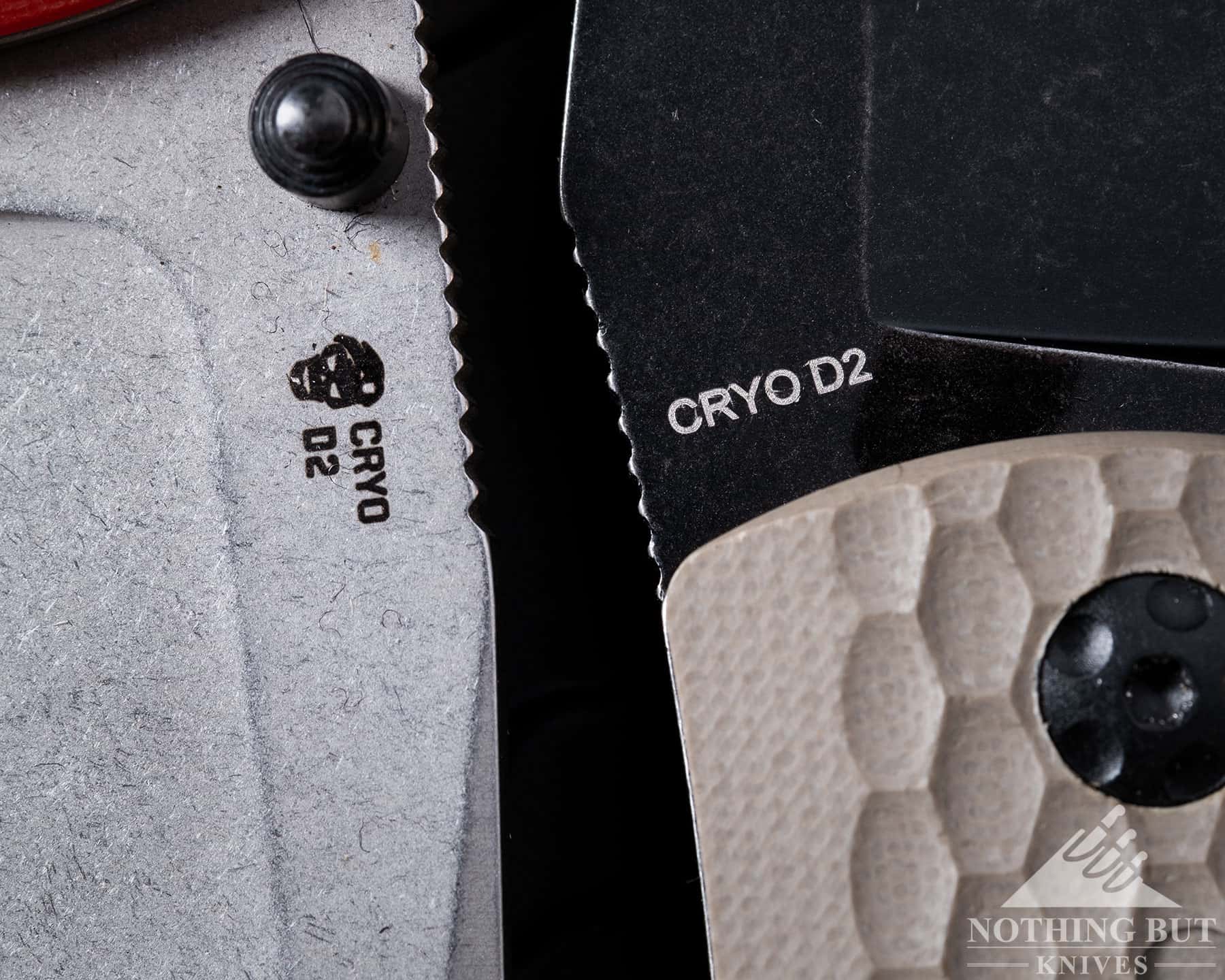
In every case, “best” is going to be a little different, and sometimes it doesn’t matter what the materials and structure are if the designers and makers have done their jobs well. But there is a tier of importance when we’re talking about knives that are going to see a lot of dirt and impact:
Tough Knife Priorities:
- Soft steel
- Simple design
- G-10, FRN, or Micarta scales w/ aggressive texture
- Flat grind over convex grind
- Convex grind over hollow grind
- Frame lock over liner lock
- Washers over ball bearings
Also, just as an aside, edge retention is not quite as important as your ability to sharpen a knife, and corrosion resistance shouldn’t be a problem if you always clean your knife after using it.
Grind and Steel
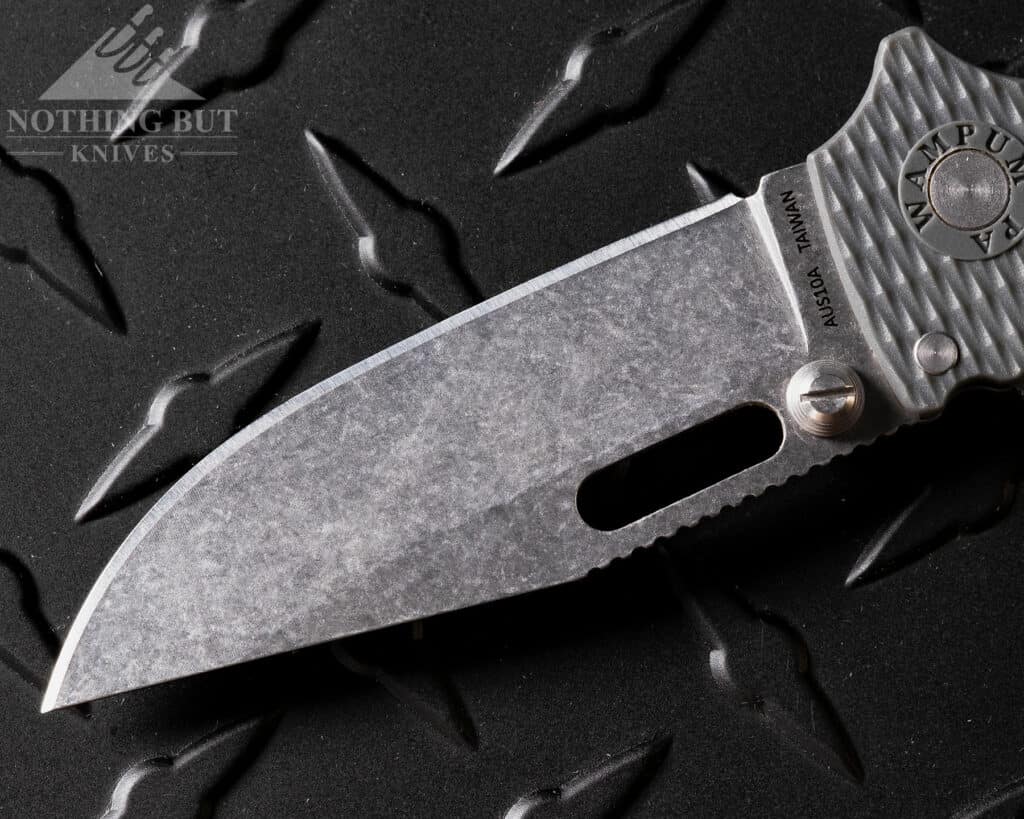
All those characteristics can be expanded into a ton of different materials and blade shapes. As I see it, the characteristic to look for is a blade with good edge stability, which can be attained through a lot of different factors including the heat treatment of the steel and the angle that steel is ground to (as usual, look to Knife Steel Nerds for a thorough discussion on his kind of thing).
As a shortcut, though, these are a few combinations that I’ve found the most useful in my own experiences of doing a lot of dirty work and sometimes using knives on stuff they really shouldn’t be used for:
- 14C28N steel in a flat or convex grind
- D2 steel w/ a flat grind
- Aus-10 w/ a convex grind
- Aus-8 steel w/ a flat grind
- 8Cr13MoV w/ a hollow grind
The last one was easily the worst knife I’ve worked with consistently, but the steel was soft enough that the grind didn’t get damaged too badly if I dropped it or accidentally hit rock or metal when I was cutting (it was also a pretty cheap knife that I didn’t mind breaking). Normally you really want to avoid blades with a hollow grind because it just makes the edge too thin to be out in the rough, but good design or execution can always make exceptions.
But The Maker is More Important than the Materials
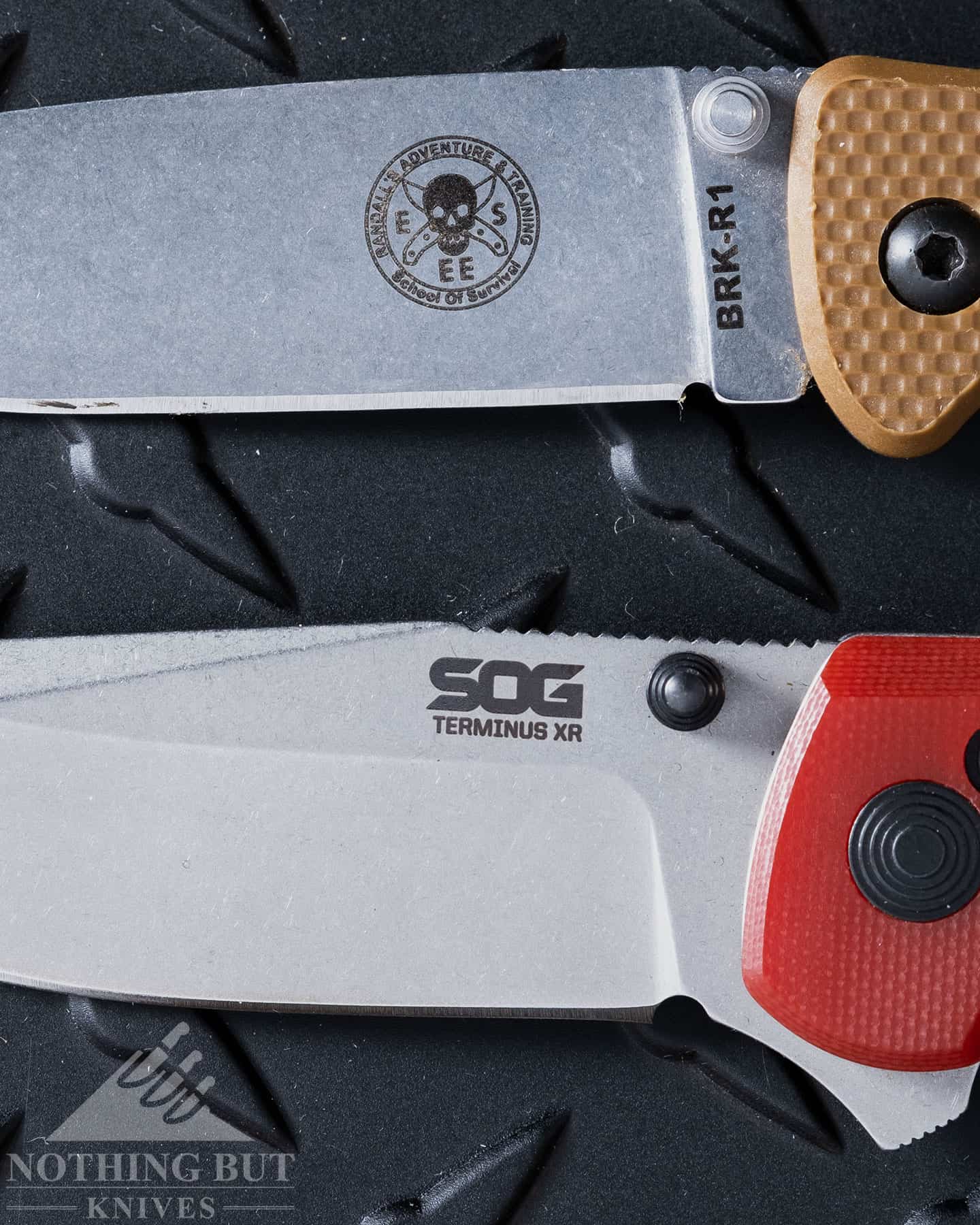
A good heat treatment with a good grind will do more for toughness and edge retention than any combination of chromium, vanadium, and carbon, and that’s the kind of thing that can really only be achieved by someone who knows what they’re doing.
At the end of the day, all the features and materials of a knife are secondary to the skill of the people who worked on it. That’s why Buck’s 420HC BOS steel is so highly regarded. In the hands of most other companies, 420HC is a pretty limp material, but in the hands of a master like Paul Bos it’s easily one of the best hard-use steels in terms of performance vs. price point. And most of the major companies like Kershaw, Cold Steel, Gerber Spyderco, and Boker know their way around steels like this.
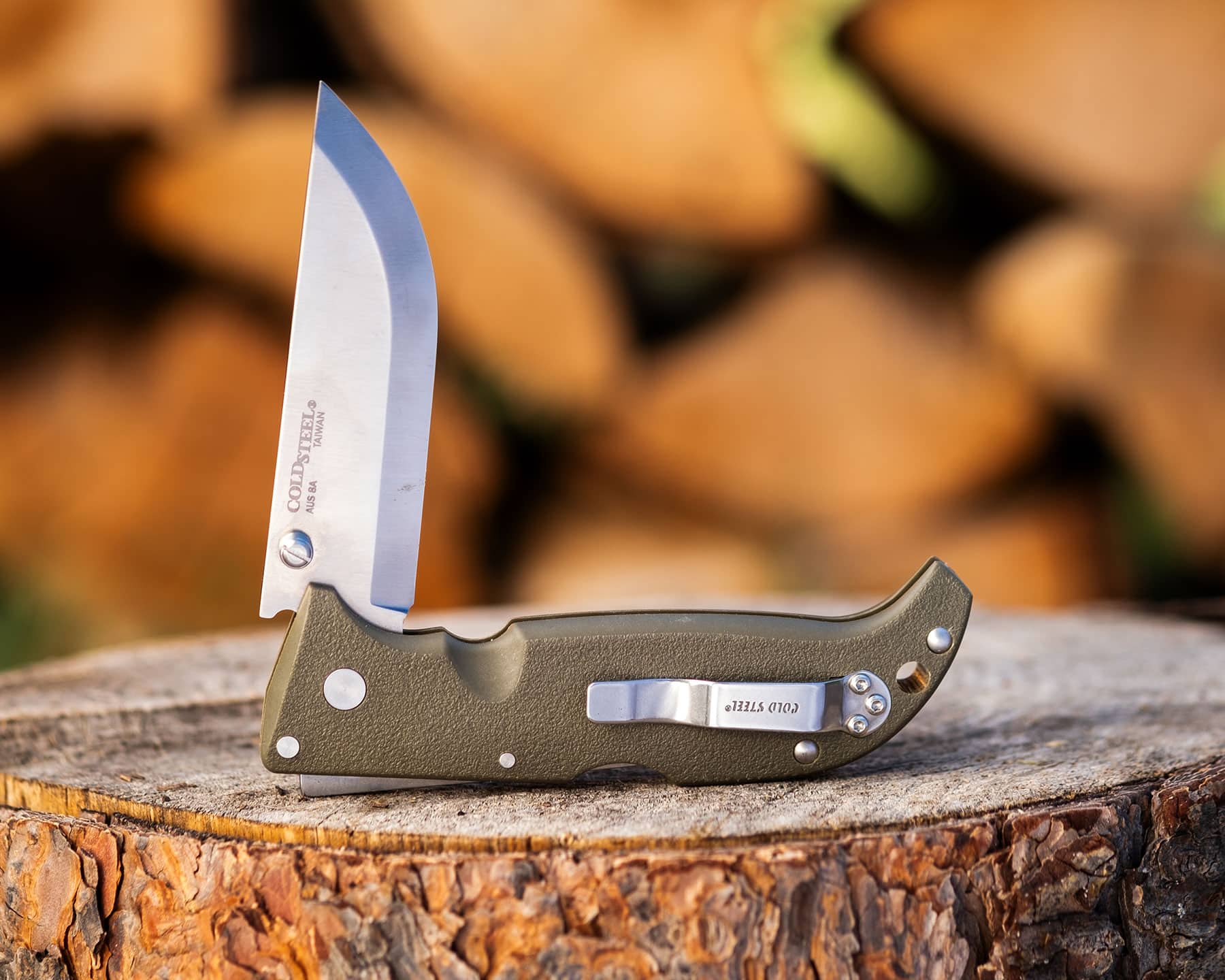
Cold Steel, for example, can do some pretty amazing things with Aus-8, and Gerber has reached a point where their 420HC is easily comparable to Buck’s. And while 8Cr13MoV gets a lot of noses turned up at it for being soft Chinese steel, it still comes out pretty formidable on the Kershaw CQC series. That’s largely because Emerson is damn good at designing a tough knife, and the Kershaw factories (which are also the Zero Tolerance factories and the Shun knife factories) are efficient works of art in their own right.
If you want steel recommendations, I would first point you (again) to the knife steel ranking article by Larrin Thomas. That’s a pretty thorough overview of the edge retention, corrosion resistance, and toughness of most of the steels being used in the knife production world right now.
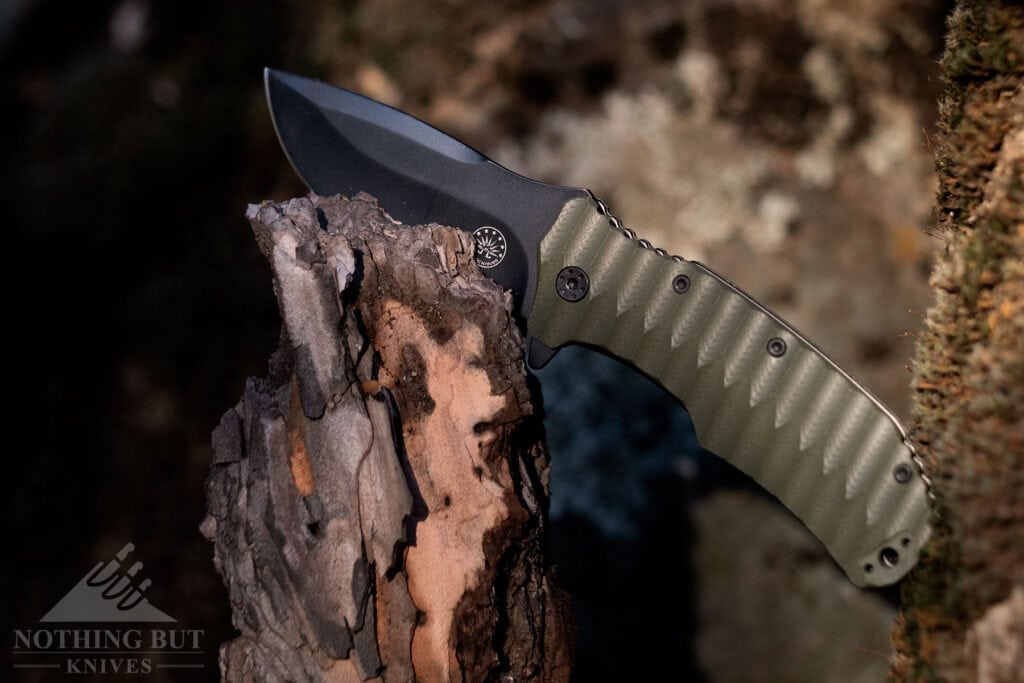
The problem with looking at all the steels rated against each other is that most of the budget steels (like D2, 1.4116, and VG-10) fall very low on most of Thomas’s graphs and tables, which can leave the impression that none of the cheap knives available are using decent steels beyond their corrosion resistance. But even Thomas points out that edge geometry and heat treatment are more important than the steel choice. It’s all about who’s making the knife.
With that in mind, here are some especially good examples of steel being taken close to the limit of its potential that I’ve personally encountered.
- Off Grid’s cryo-treated D2 is amazingly hard and I have yet to chip one of their knives.
- Buck’s 420HC has amazing stability
- Cold Steel’s AUS-10 steel seems tougher than it has any right to be, with decent edge retention (around an average 154CM steel, I’d say)
- Kershaw’s 8Cr13MoV is incredibly tough, and probably about as good as anyone is going to bother making it
- 14C28N from almost any company seems to be the best option for toughness (edge retention is often the biggest issue with it).
Handle Material
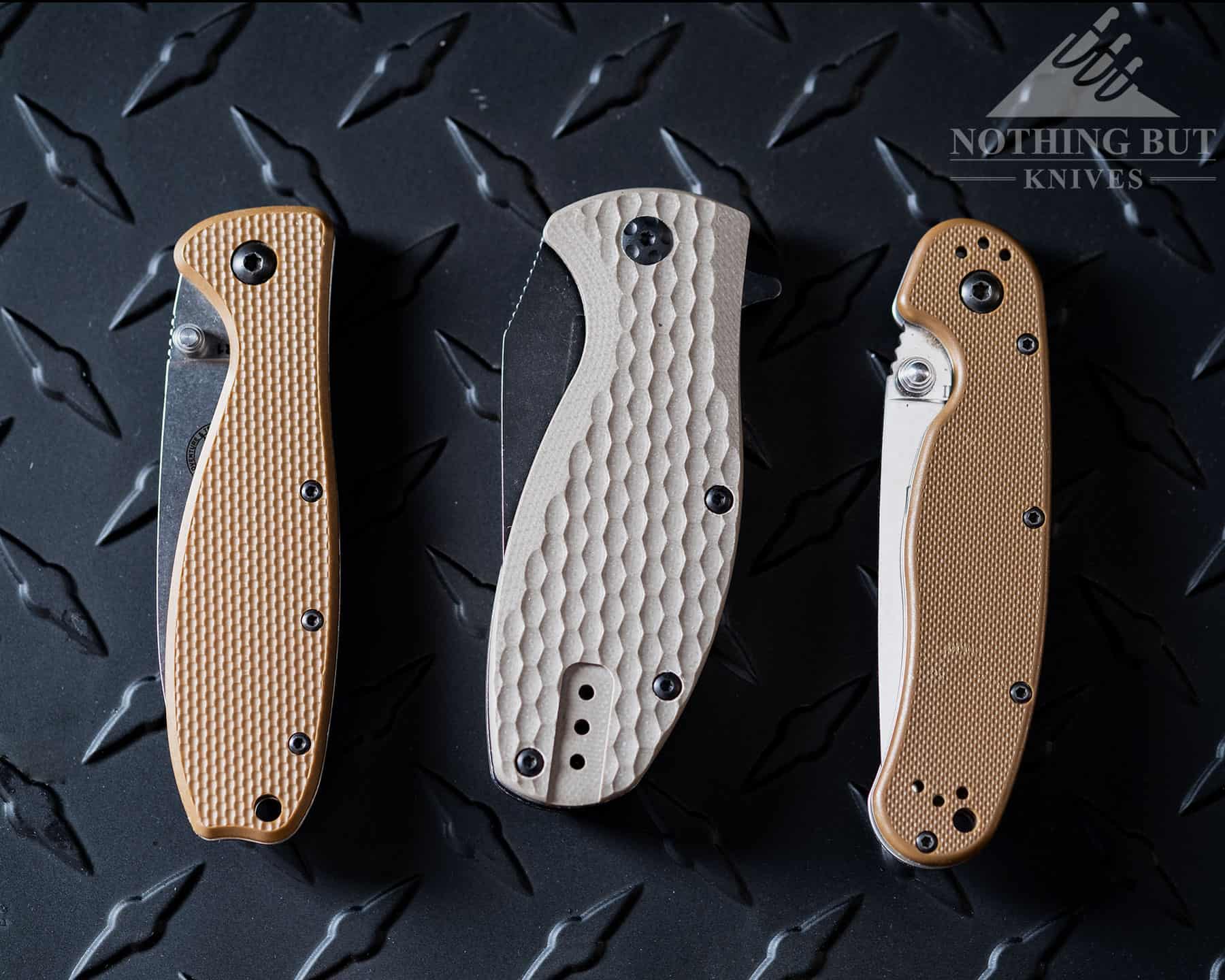
Here’s the TL;DR: Just get something in G-10 scales with good texturing.
My assumption is that most people are holding hard-use knives with gloves on. That makes G-10 scales with an aggressive texture the most common ideal. Both the Rat 2 and the ESEE Zancudo are pretty good examples of this. Even with gloves on I can usually feel a sort of “stickiness” between the handles and the glove material.
It really doesn’t take a lot of texturing to make even FRN scales effective as well, though. My Boker Plus Patriot is nothing if not glove friendly, but it’s definitely not fun to hold bare handed. Meanwhile the Micarta on the knives like the Kizer Sheepdog is dry enough that it has excellent grippiness in bare and gloved hands. The only problem is that all the dirt, water, and oil will stain it pretty bad.
Just avoid knives with handles that have been smoothed and polished too much, sort of like the Micarta on the Buck Selkirk.
Liner Locks vs Frame Locks VS Some Other Stuff
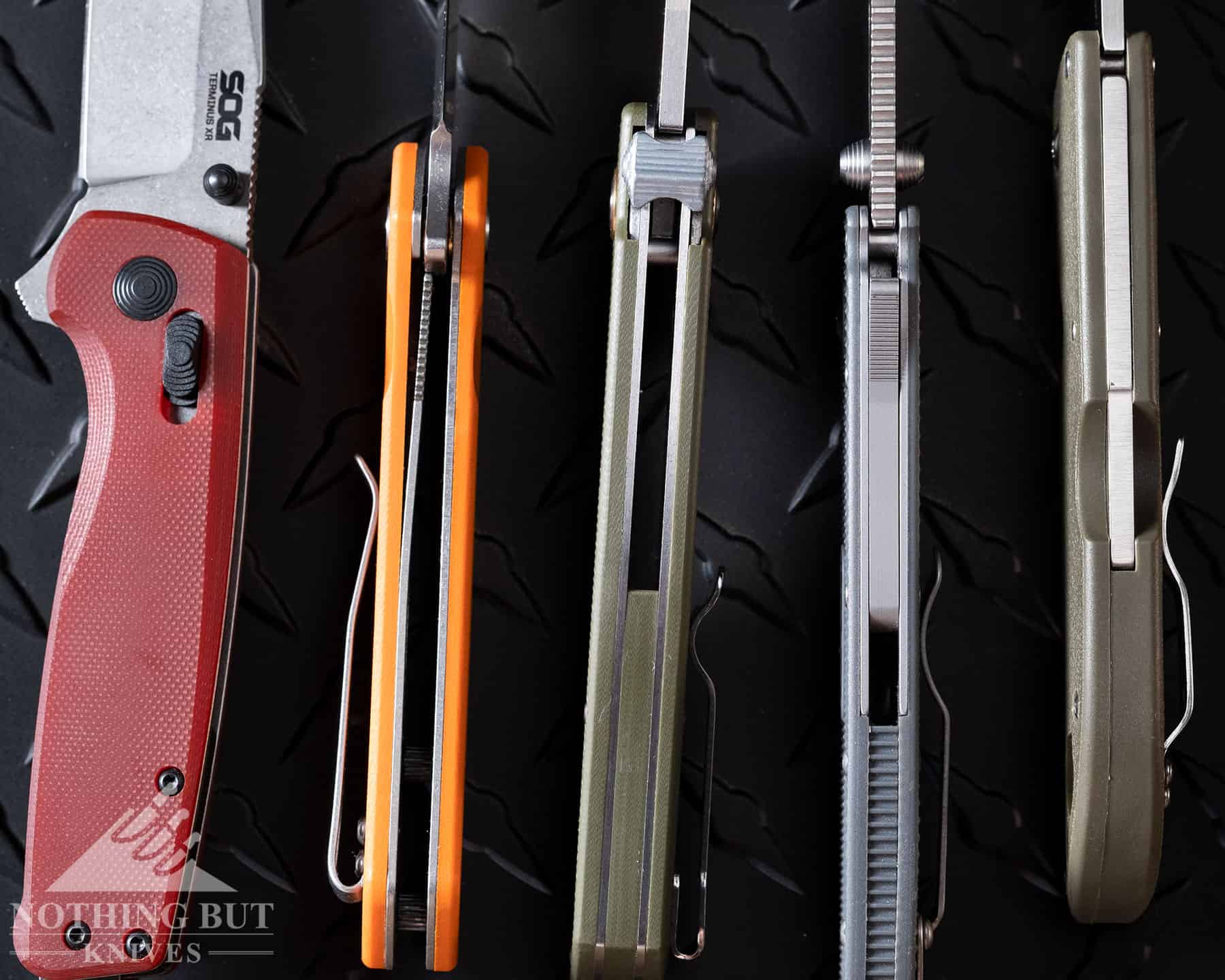
The rule of thumb is that frame locks are stronger than liner locks, but, again, this is an issue of skilled craftsmanship, and most back locks are stronger than both.
The Rat 2 is a liner lock, but I’ve abused the hell out of it and never had an issue with the lock weakening or the scales coming loose. Conversely, the ESEE Zancudo is a tiny brick that could probably survive a tank blast. I can’t imagine a situation where it would need to, though.
There are a lot of lock innovators out there right now coming out with great new stuff all the time. I’ve had great experiences with Demko’s Shark Lock, for example. I’m less confident in SOG’s XR lock, and I have next to no experience with Benchmade’s AXIS lock, although enough other people have tested it over the years that it’s probably safe enough to recommend.
Here’s our own little ranking of the best locks for hard use knives, based mostly on my own experiences and preferences.
- Frame lock
- Liner lock
- Cold Steel’s tri-ad lock (basically a form of back lock)
- Normal back lock
- Demko’s Shark Lock
- Basically any slide lock (eg. AXIS lock, XR lock, etc.)
I prefer the simplicity of liners and frames, because I can see and clean those. All these slide locks add little pieces for dirt to get packed up against and have springs that can wear out. Even back locks have milled notches often placed inside the handle where it’s hard if not impossible to get into and clean or fix up.
Bronze Washers Over Ball Bearings
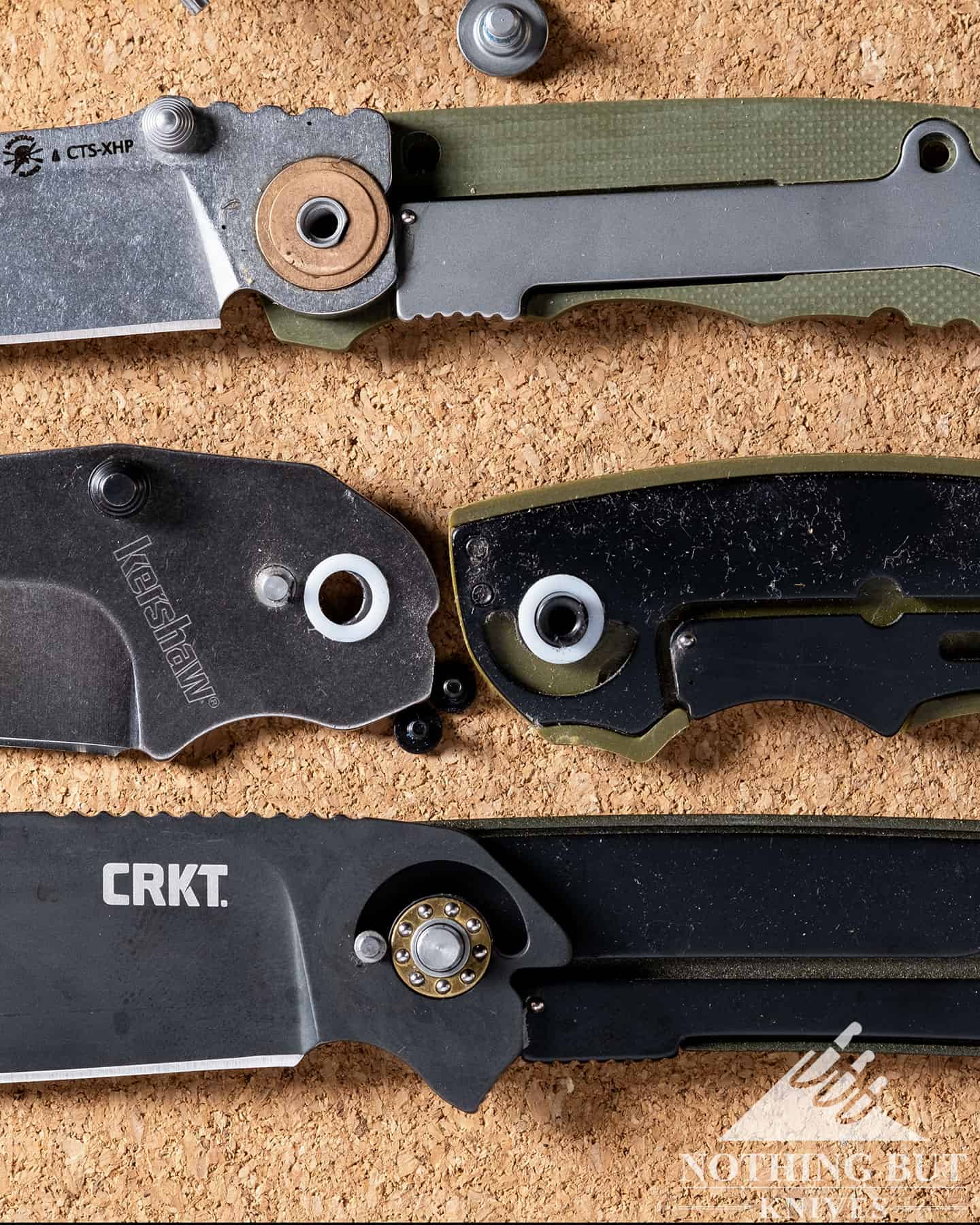
Anyone who has taken their folding knife apart will be familiar with this little piece of hardware. For those who haven’t, most folding knives have two little pieces of metal on either side of the blade around the pivot pin (with some exceptions like the Cold Steel Finn Wolf or Boker Patriot, which have no washers at all). Those little pieces of metal are the main thing affecting the action of a folding knife, and by extension how easily you’ll be able to open it.
Generally, knives with ball bearing pivots feel incredibly smooth to open but they pose a much higher risk of getting gummed up, bent or cracked. A little dirt can make a very expensive knife suddenly feel a lot cheaper, and it’s a lot harder to clean that kind of thing out of a little disc encasing tiny metal balls.
Meanwhile, the bronze washers often seen in cheaper knives can take a lot of abuse and dirt, and are a lot easier to fix up or replace because it’s just a simple, flat piece of metal with a hole in the middle. Knives with bronze washers rarely open as smoothly, but for hard-use tasks they are easily the better option.
At the End of the Day, Comfort is King
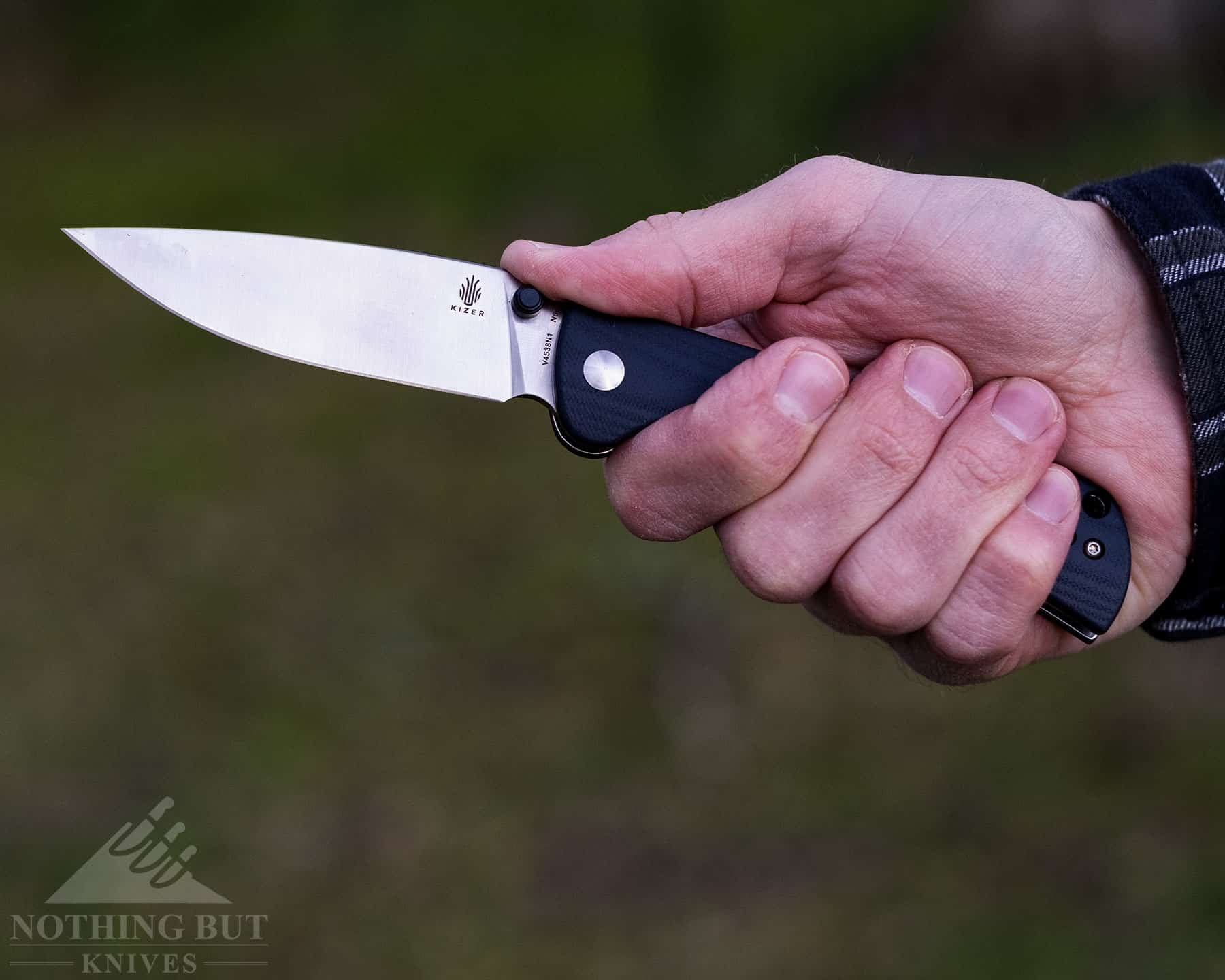
After saying all that, though, what’s really most important about any feature of a knife is that you like using it. A knife is a knife. If it has an edge, it’ll cut what you need eventually. And frankly it doesn’t matter how well built the knife is if something about it just doesn’t agree with your hand. I’ve picked up plenty of high-priced knives that were technically good in every way, but I just didn’t like it. Half the time I came up on a task that a blade could have handled easily enough, I’d go grab scissors or garden shears instead.
With that in mind, go with your own comfort. If you’re more comfortable with a $20 Kershaw with a pink handle and 8Cr steel, that’s fine as long as you’re getting work done. And if you’re okay with taking a $400 knife with a Rex 121 blade out onto a construction zone, well, that’s cool too.
But maybe take a cheap back up just in case.

Is there anyone these days who isn’t an ‘authority’ on knives, most of which look the same now anyway, with the obligatory ‘supersteel’ and the same boring G10, aka ‘plastic’ scales? Especially when the most that Supersteel ever ends up doing is either slicing open the occasional Amazon box, or more likely just sitting at home as a too-expensive-to-use ‘display queen’ (“Ooh, it might get dirty”… lol)?! ;-p
You know the thing about Amazon boxes is that if you order something big enough you have plenty of room to carve a face in one of the sides. I had to take a break from that, though, because last time I made a winky face and my wife caught me talking to it in the broom closet. I don’t think she took issue specifically with me talking to a box more than her. I think the problems really started after she asked me why, and I said “because the box has fewer wrinkles”.
That ended up being a pretty productive day. I used my RAT 2 for that, and the face turned out pretty realistic. I named it Sharron and told her I think S90V steel is overrated. When I lifted the box up and down to make it look like Sharron was nodding it made me feel really empowered to keep being randomly critical of popular things in a desperate attempt to appear edgy. I especially liked that Sharron didn’t point out that’s what I was doing.
I talked to a lawyer friend about my trouble at home, but he said leaving my wife to marry a box was legally tricky and morally weird, so I threw the box away.
Anyway, I hope that answers your question, Ming.
I enjoyed your review of hard use knives. I’m looking to replace my EDC. I had a Coldsteel Finn Wolf that I carried everywhere and used on everything, including hacking up a large sapling that had grown up through a chain link fence. Alas, I lost it last year. Not sure if I’ll get another Finn Wolf; I enjoyed it but I want to try something new.
Review aside, you should teach a class on the art of the comeback. That response was perfect. I feel like I should have had to trek up 1,000 stone steps carved into the side of a mountain and then sat silently for 24 hours just to have had the privilege of hearing it.
Man, if we all had to climb a thousand steps to read and respond to comments on the internet our phones would be a lot sweatier.
Sorry to hear about your Finn Wolf, though. That has genuinely always felt like a near-perfect knife to me. The only problem is that it’s hard to justify buying other fun and more expensive knives with obligatory supersteels as long as you have a Finn Wolf in your pocket.
All the steels tested are weak edge holding except s30v in most catagois under $100 and heat treat and geometry is more better slicing cutting and most reasonable price steels will some what rust on average people’s non maintenance so it’s ones guess
I want so badly to treat this as a sound criticism, but I can’t actually tell if you’re criticizing something or just leaving your unpunctuated opinions here for general posterity.
I think the point you’re making is that all steels besides S30V suck (which I’m used to hearing at this point), that heat treat and edge geometry have more of an effect on cutting ability (which I agree with and I’m pretty sure we point out in this article), and that most steels will rust when they aren’t maintained (which, again, we mention in this article).
I would hate to lose the chance at a good debate by defaulting to sarcasm here, and I appreciate you lending your unique expertise on the edge retention of S30V or the fact that steel rusts, but I just have a hard time concentrating on your run-on sentence without a period over the sound of my $40 RAT II with D2 steel hacking through a tree branch.
Great list. Thank you for sharing this with us! Just a question, do you have any recommendations on Benchmade knives?
That question makes more sense, but I’d still refer you to my reply under our blog on horizontal carry knives.
Wanted to nod and say thanks for a great list. Picked up an Ontario RAT 2 via your affiliate link for use in a survival kit. Excellent info.
Thanks again!
Matt
Thanks Matt. It is tough to go wrong with the RAT 2. That thing is super popular for good reason.